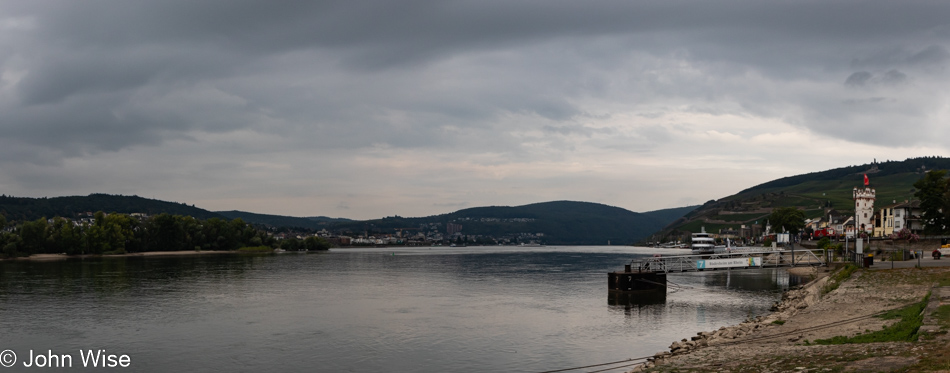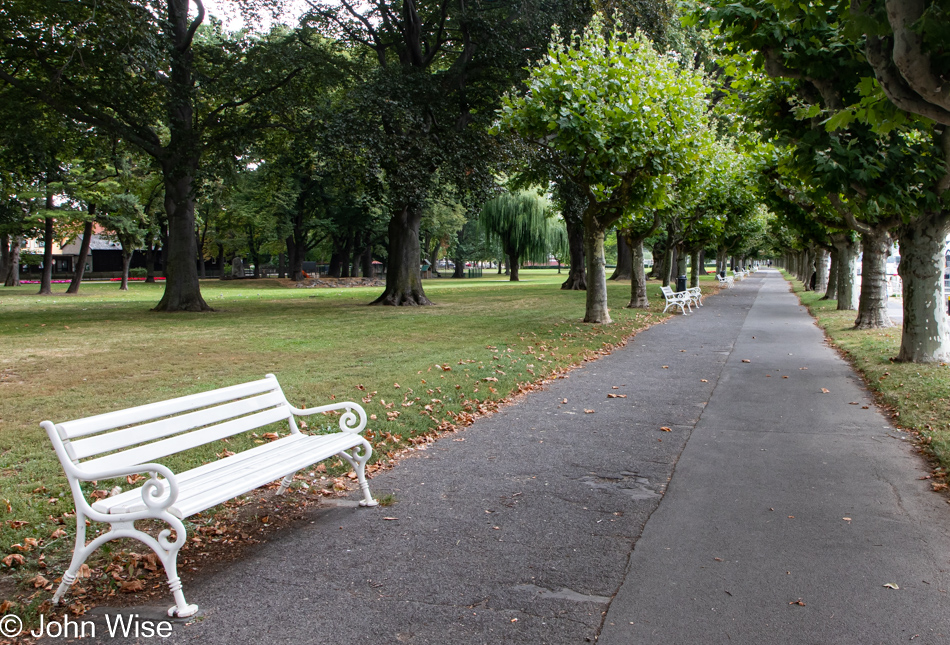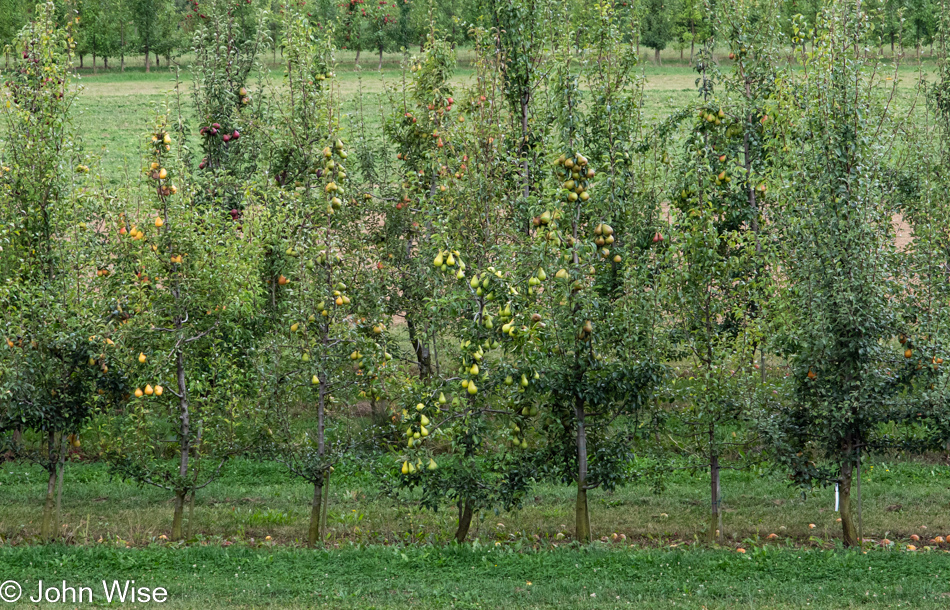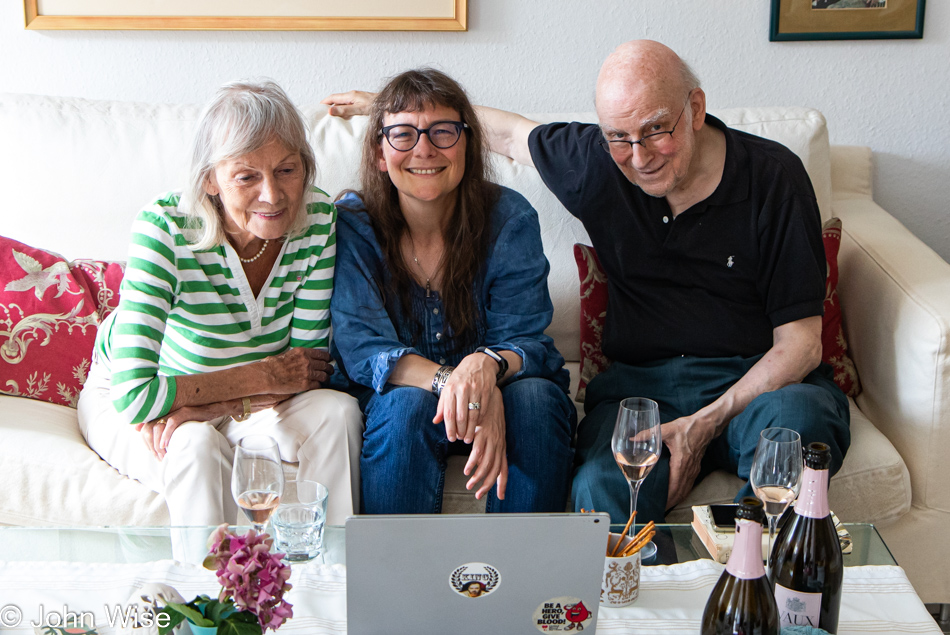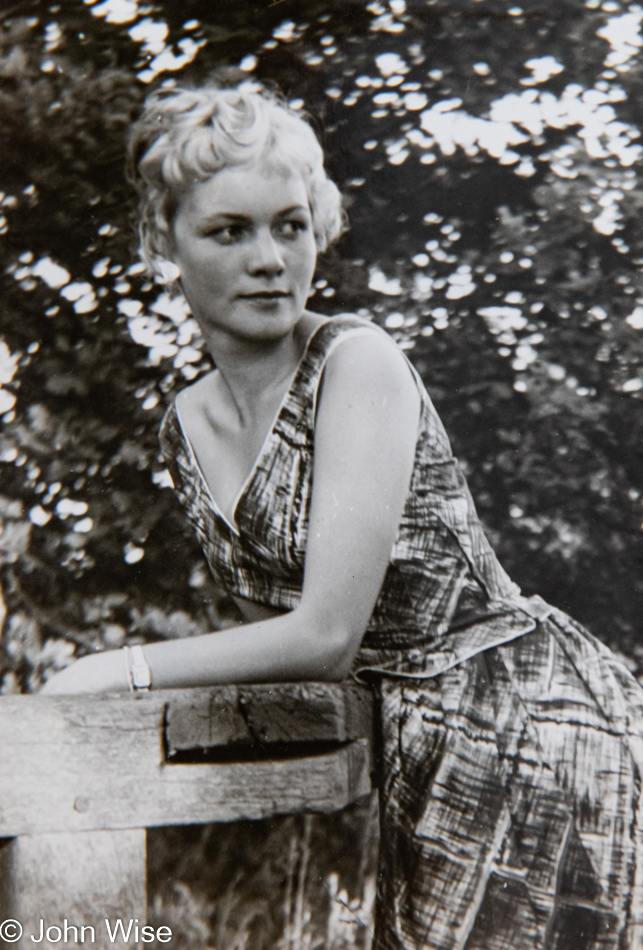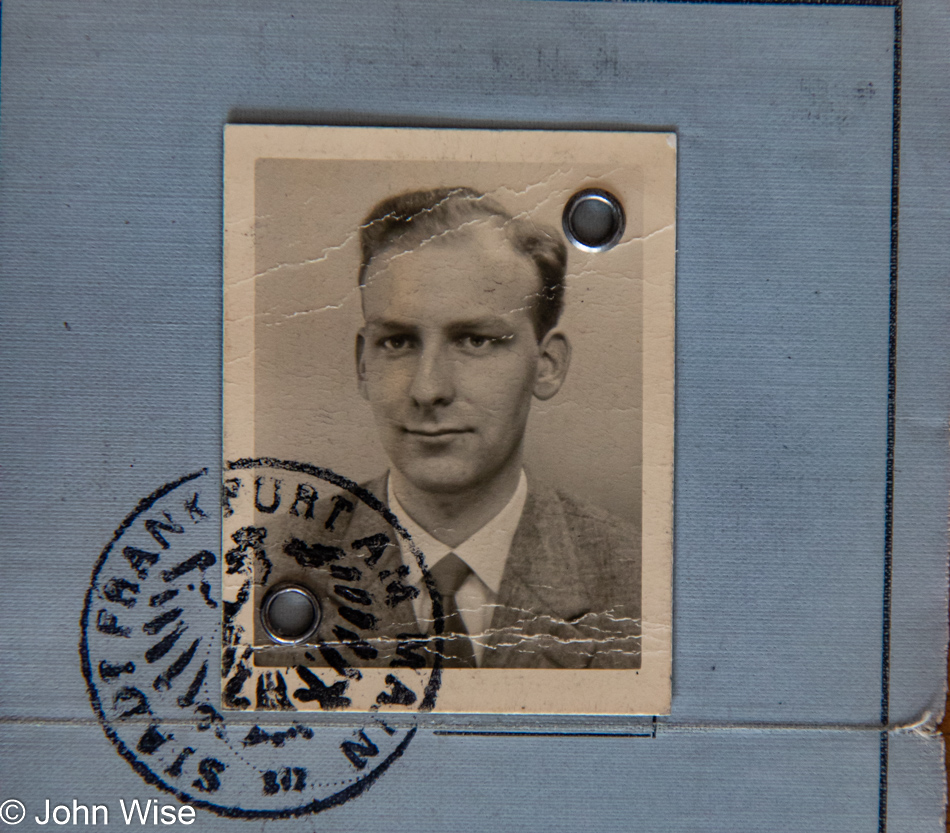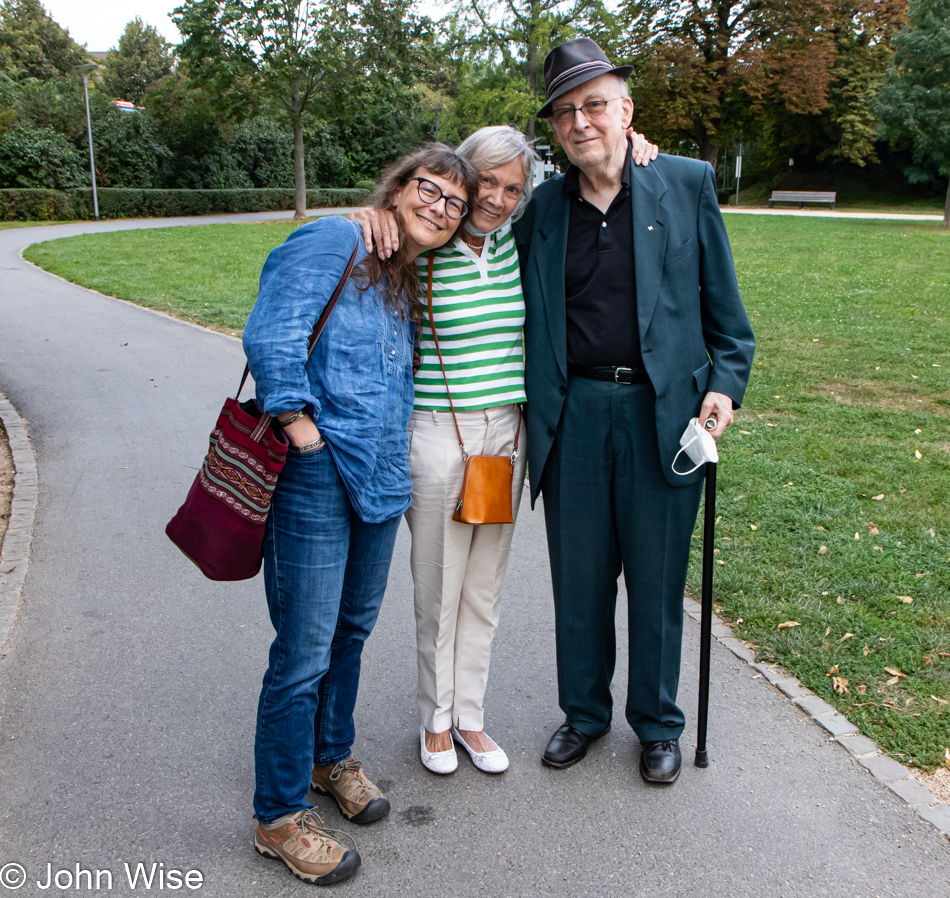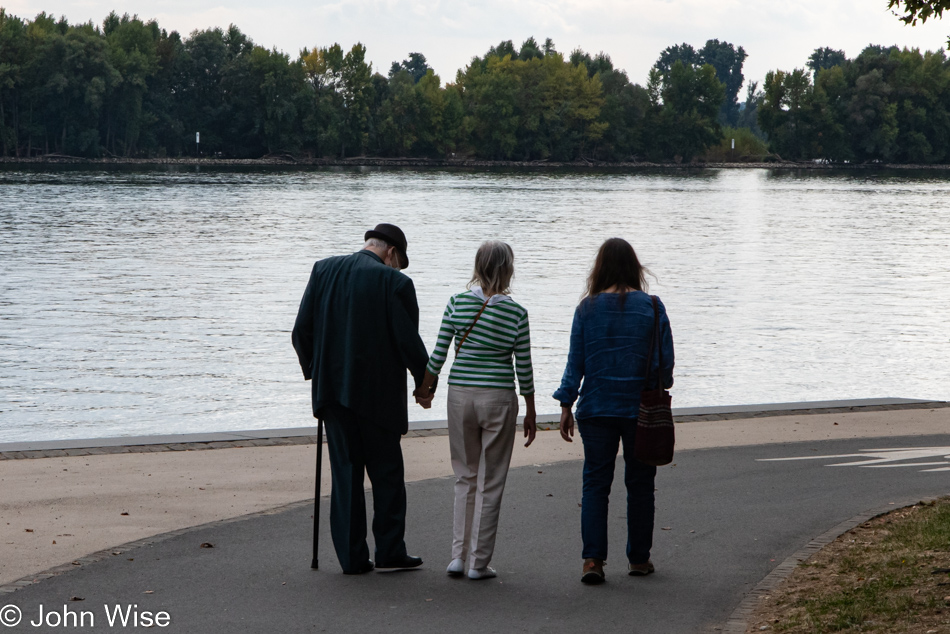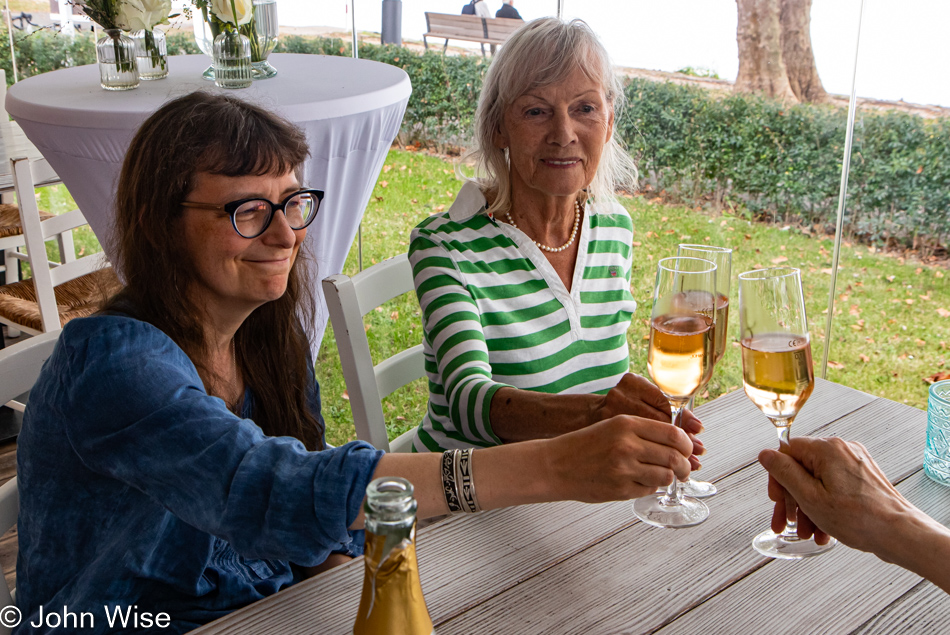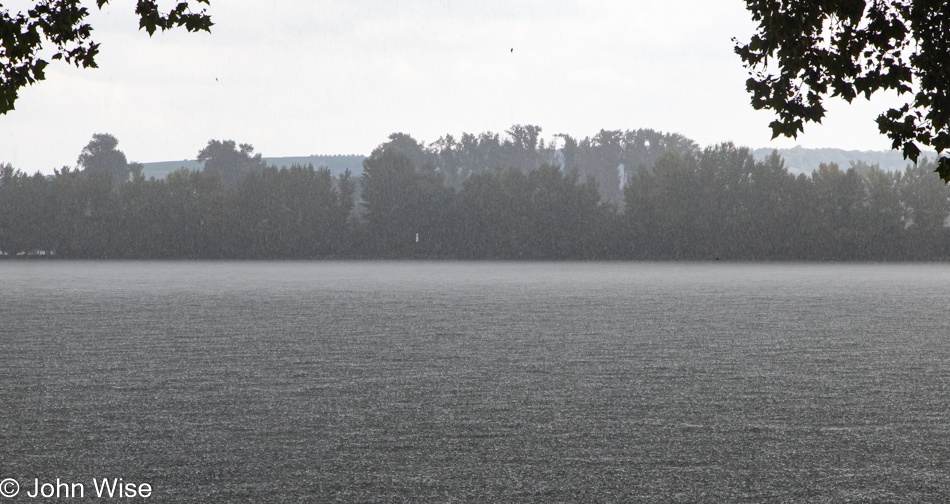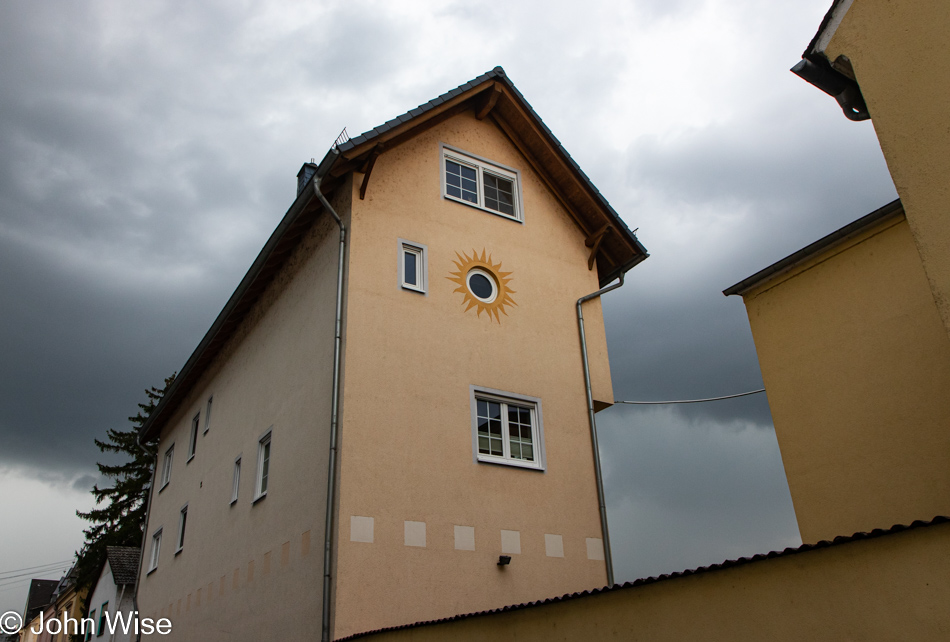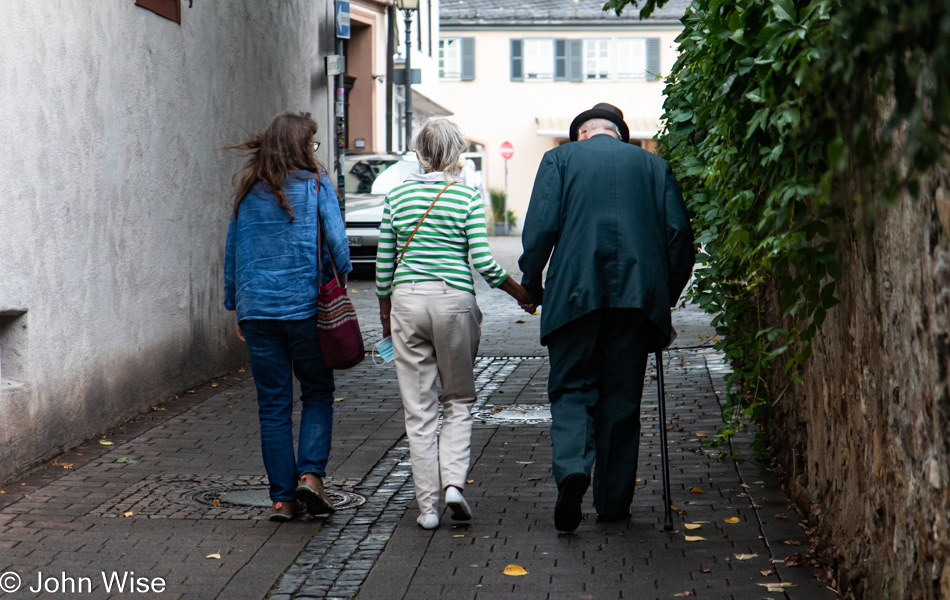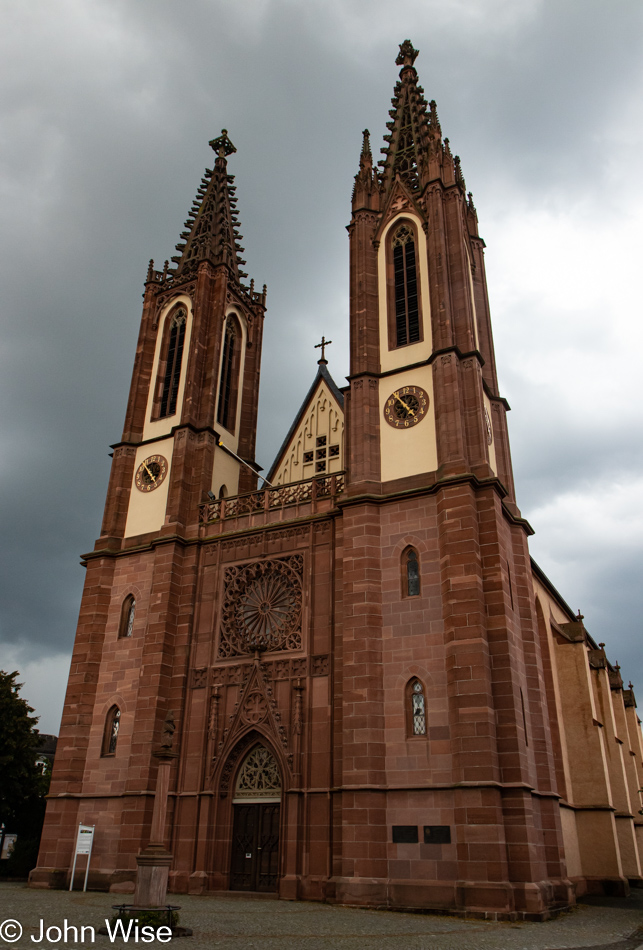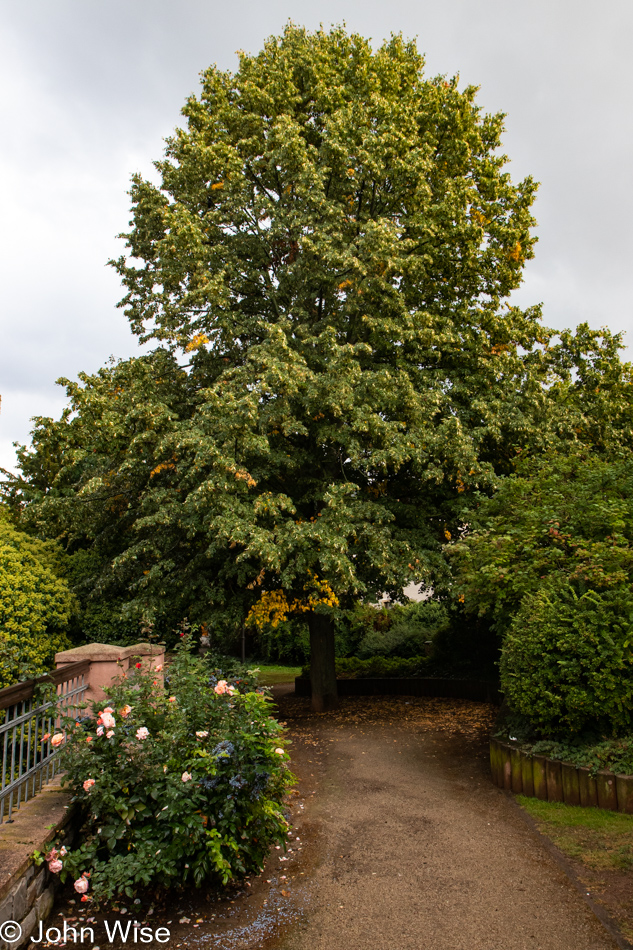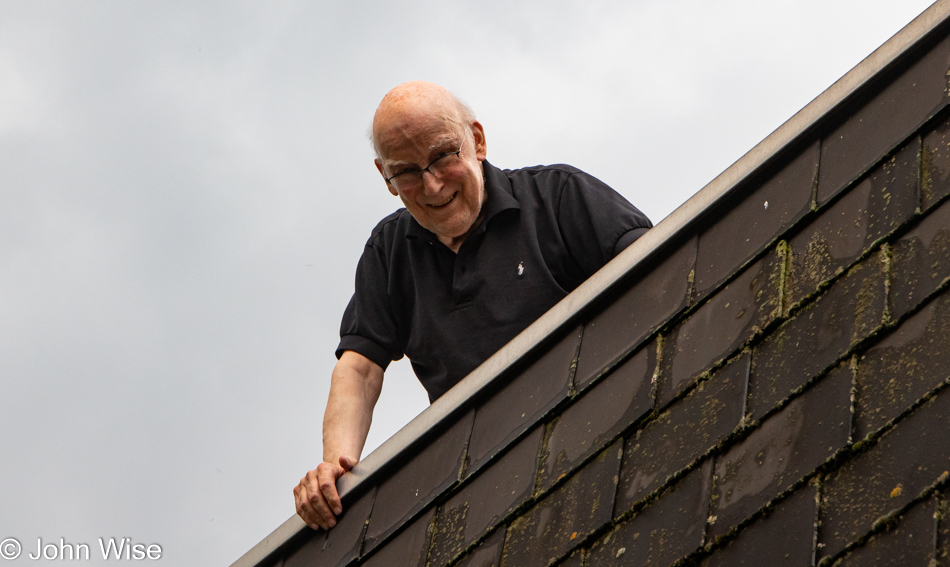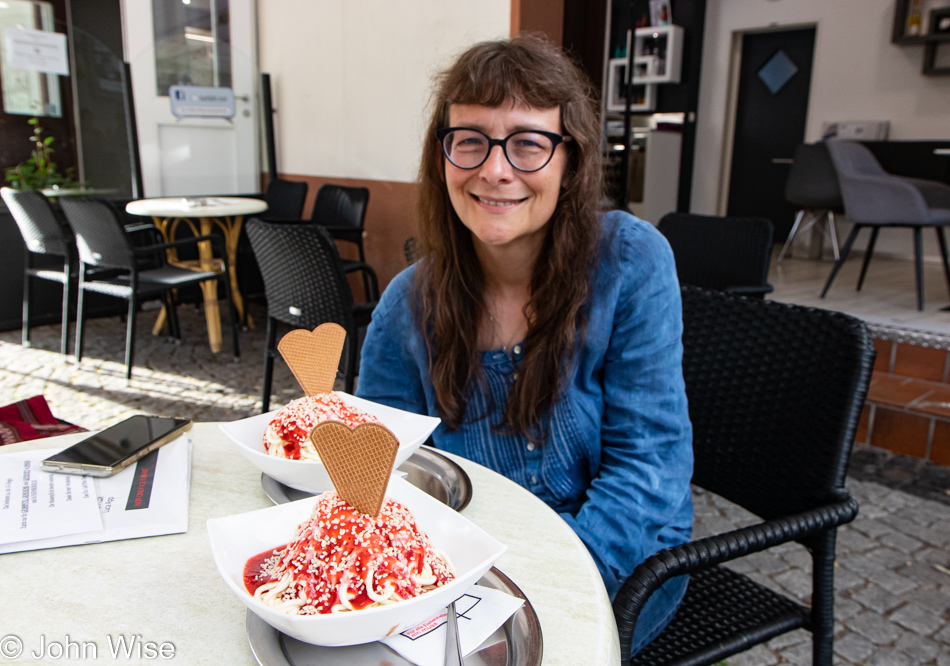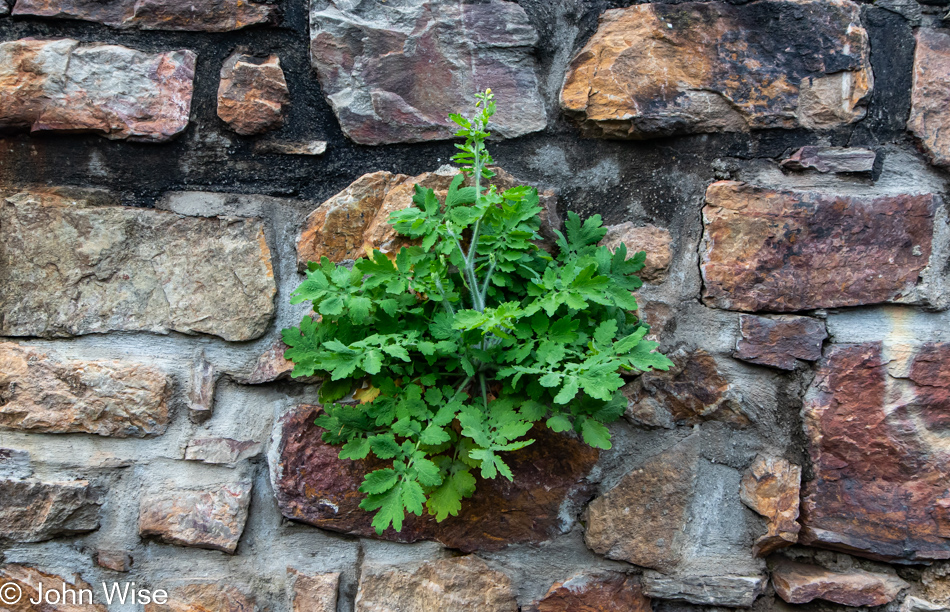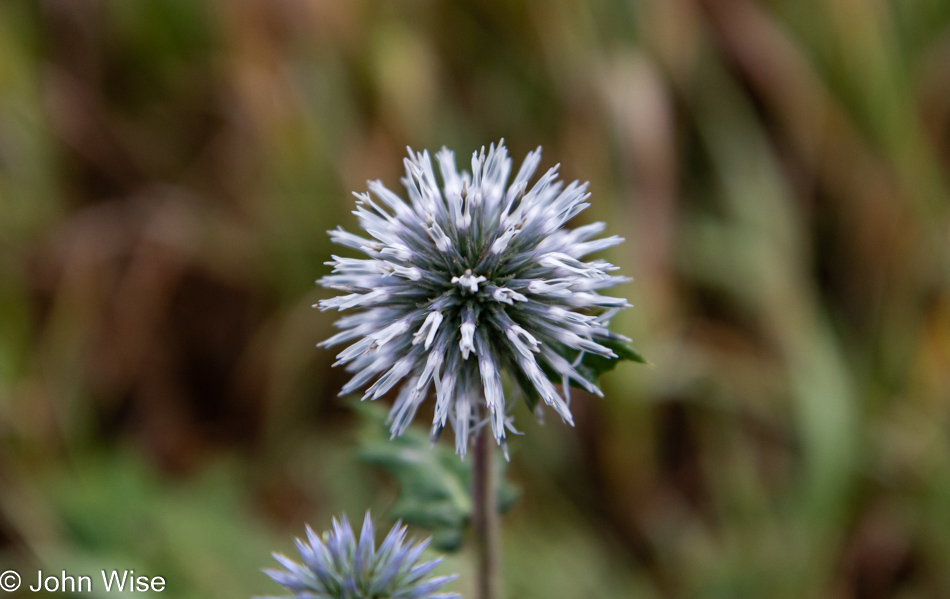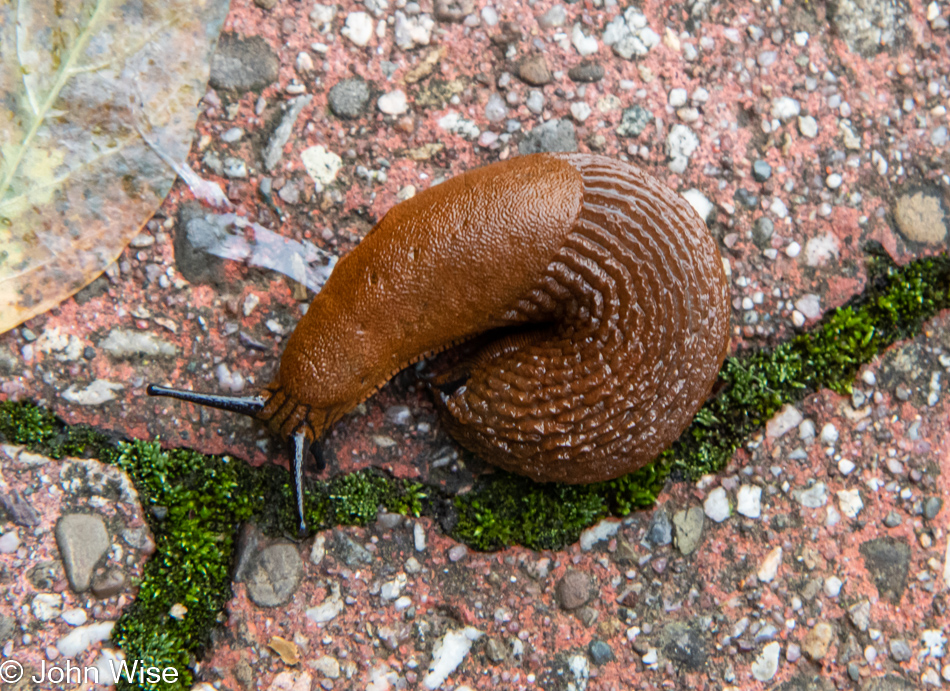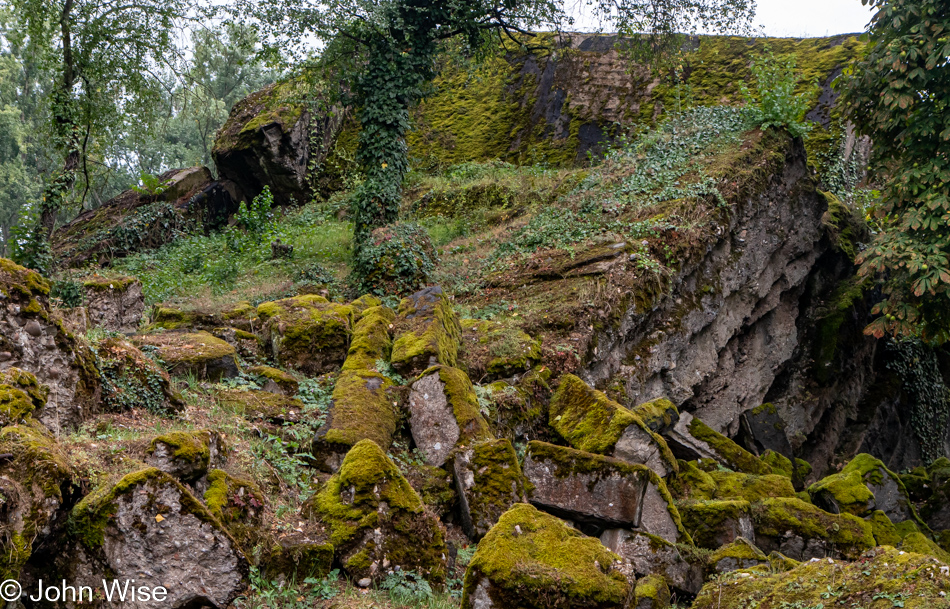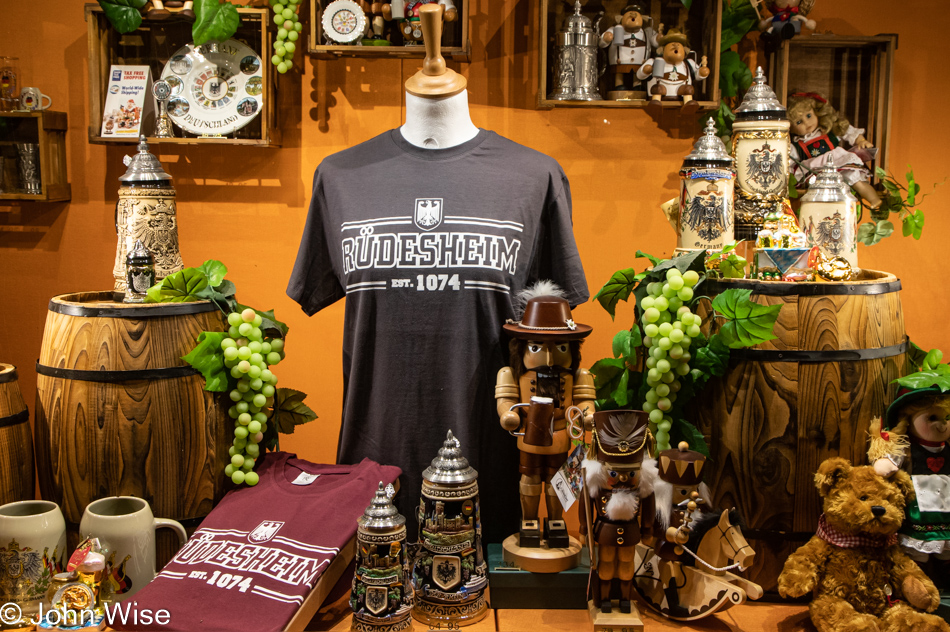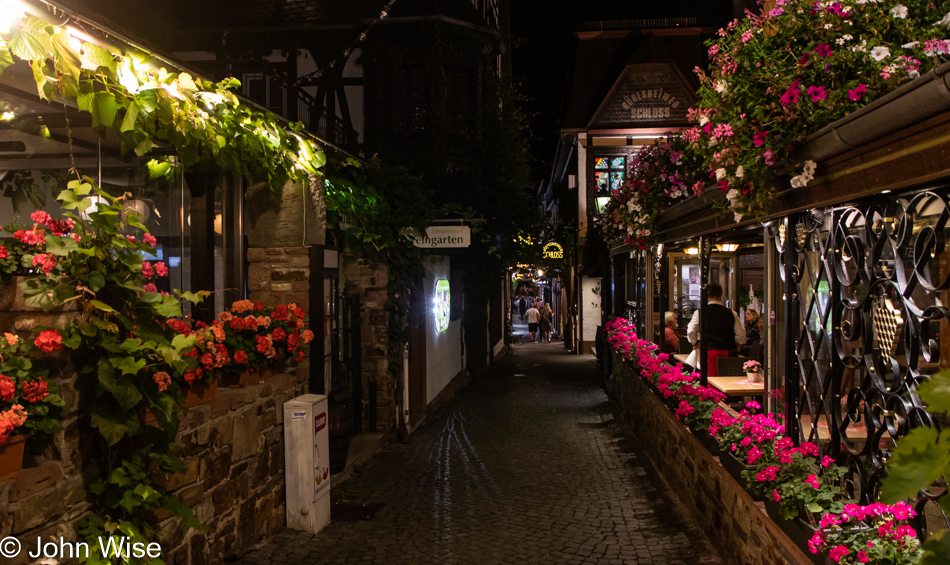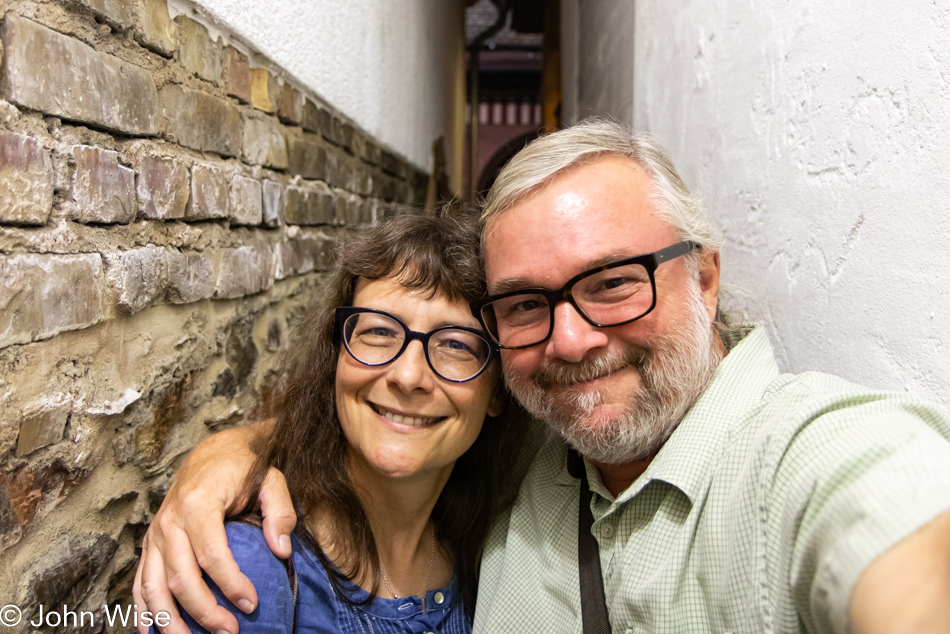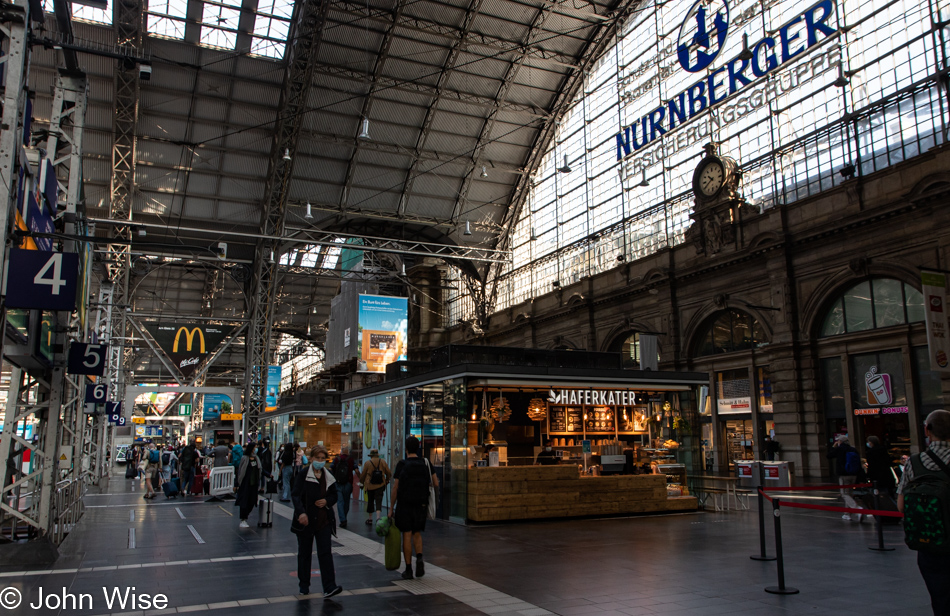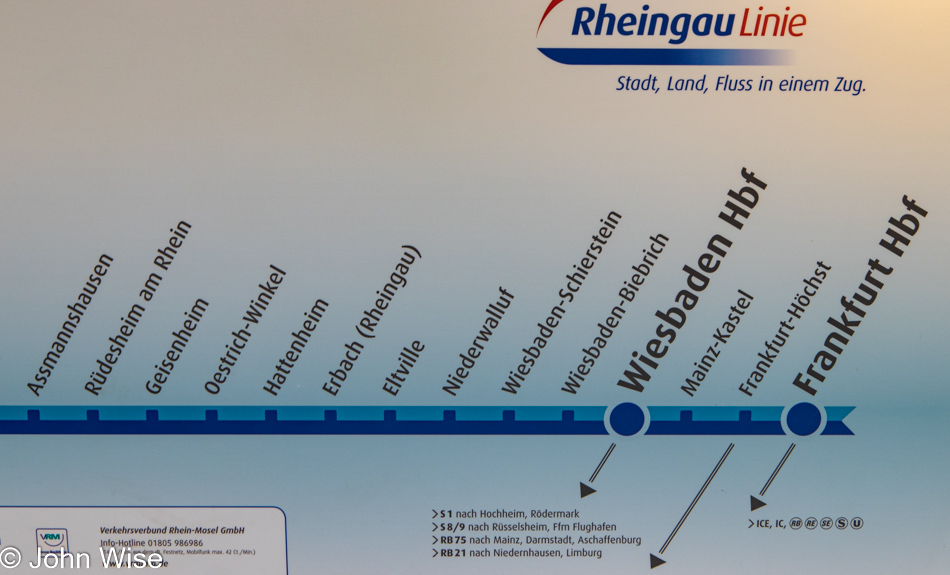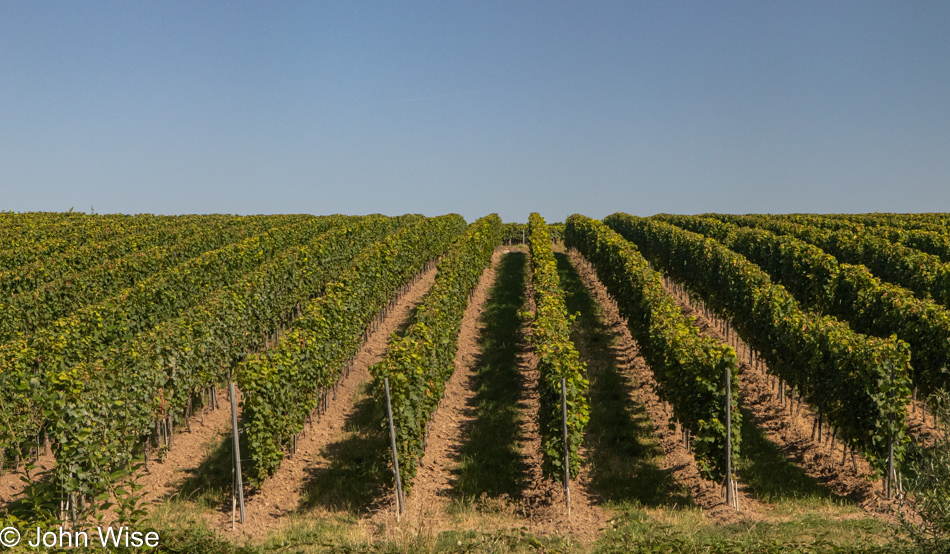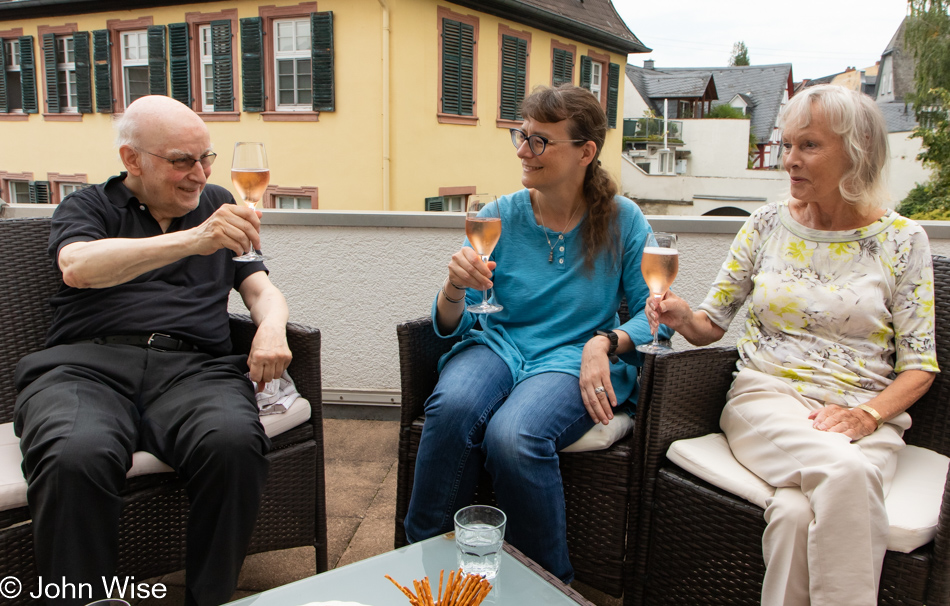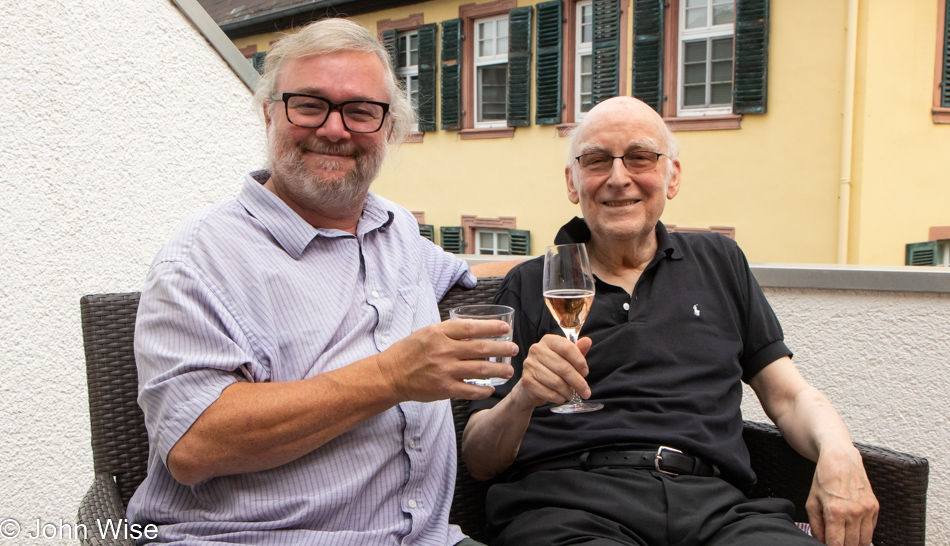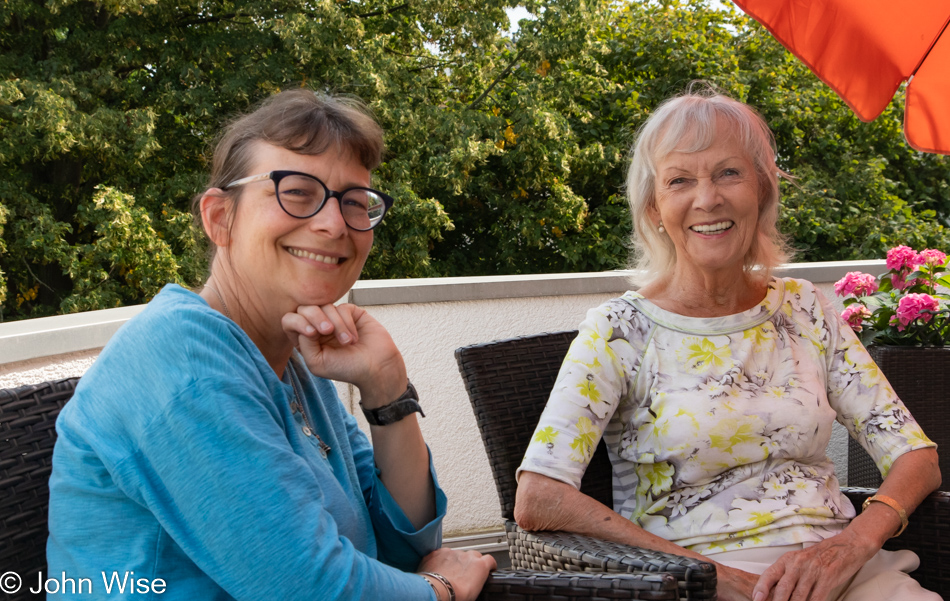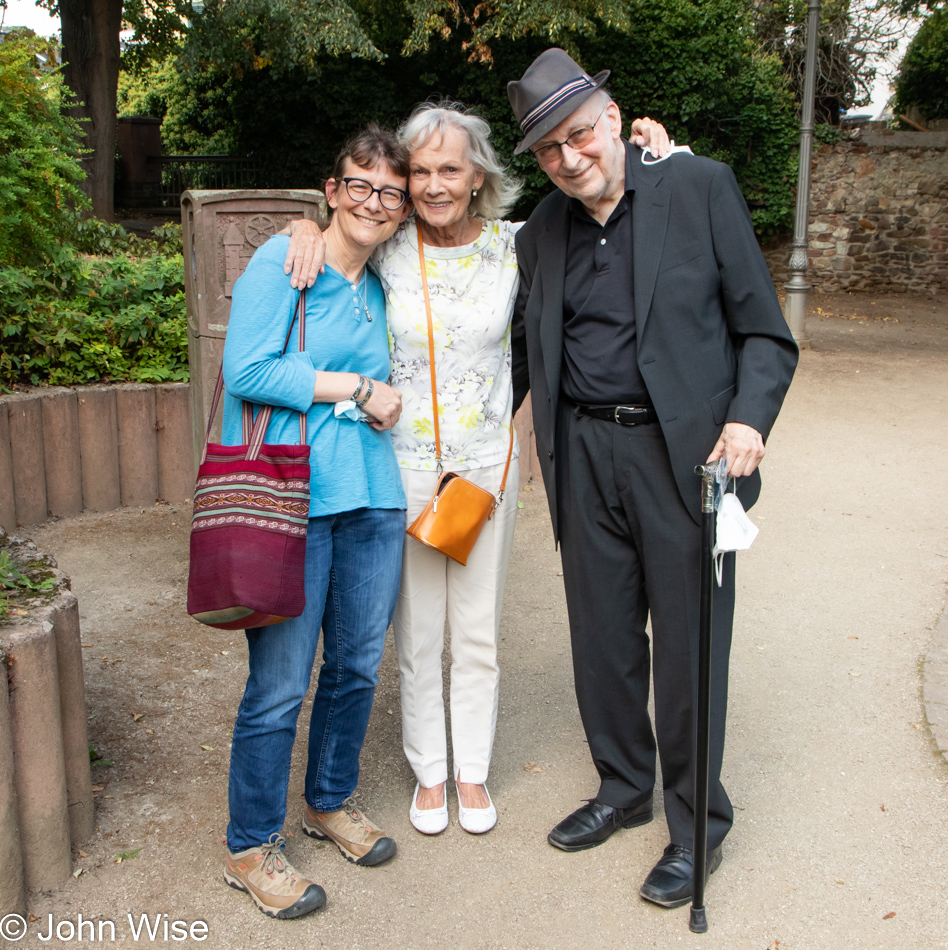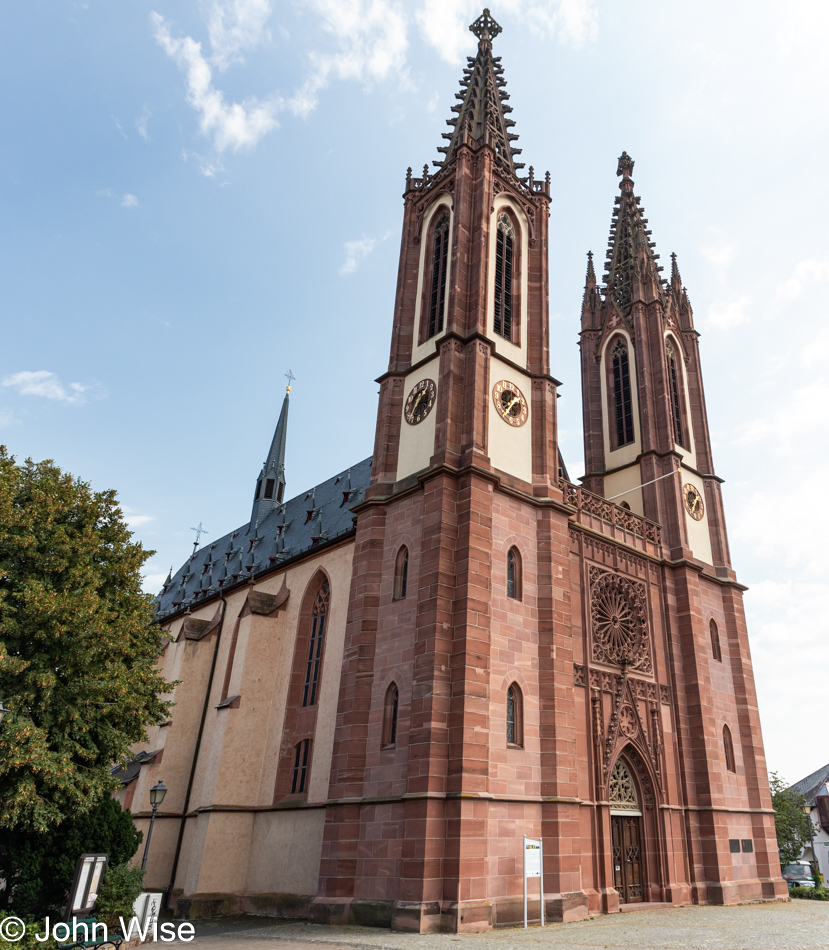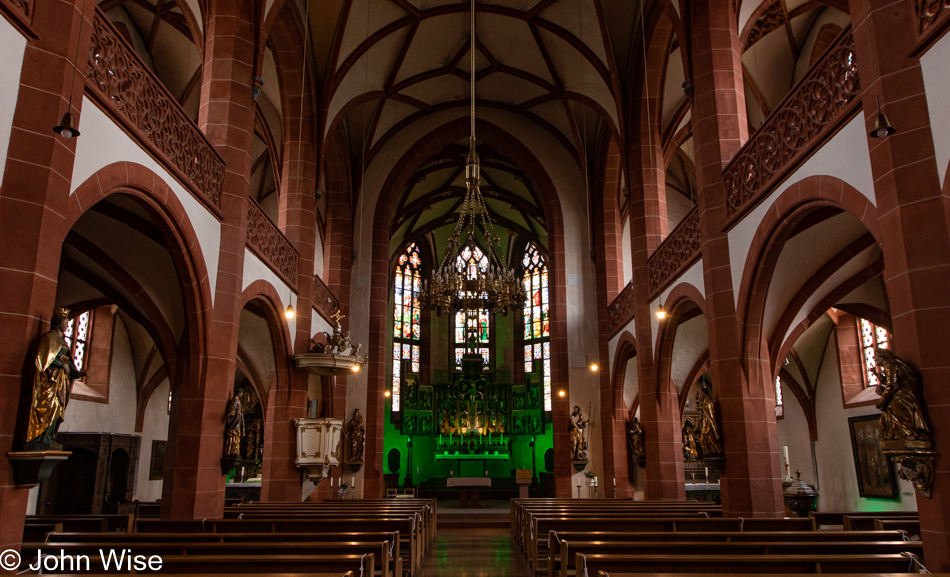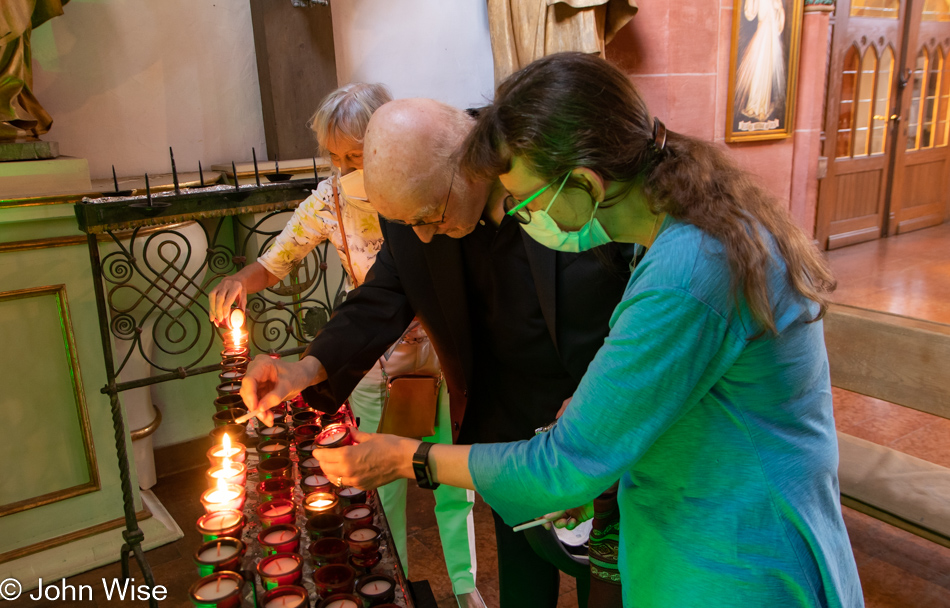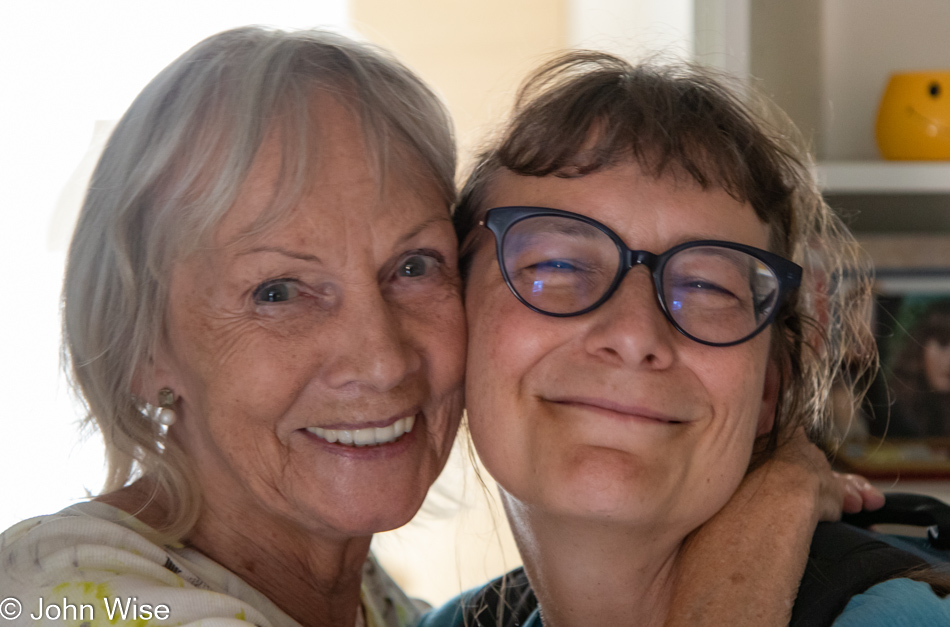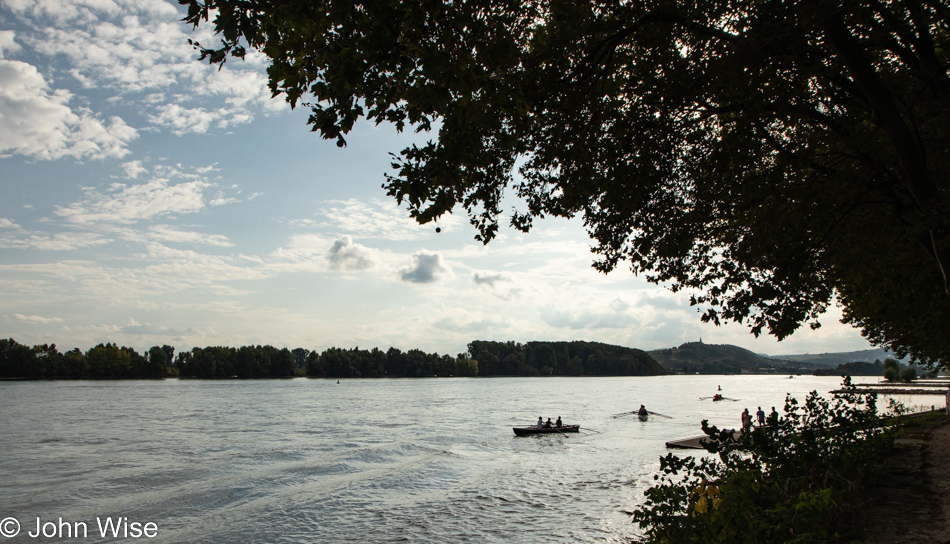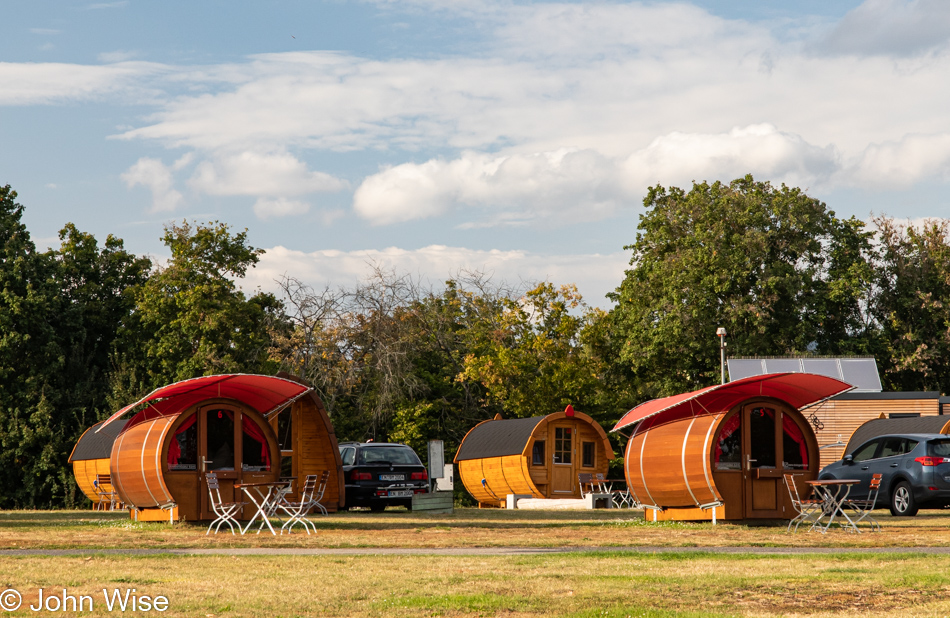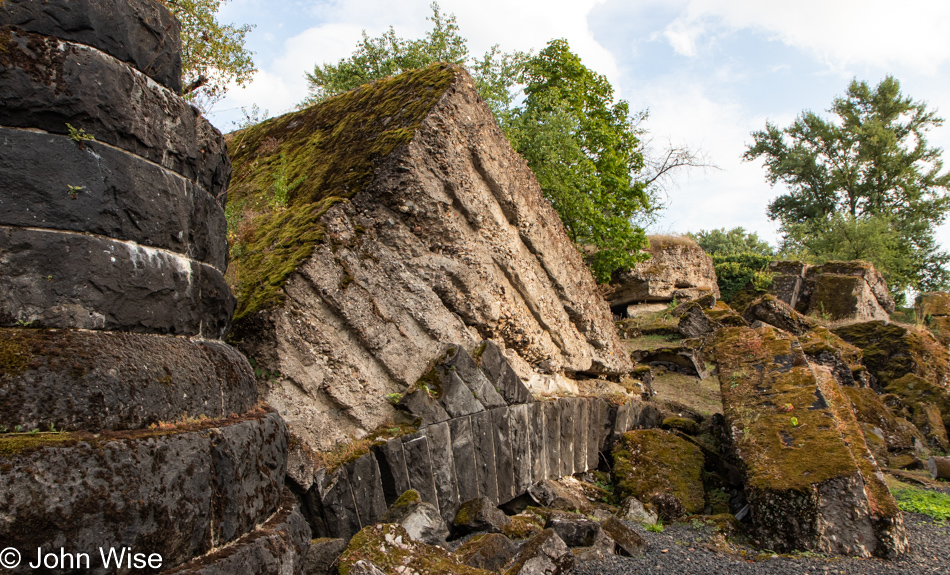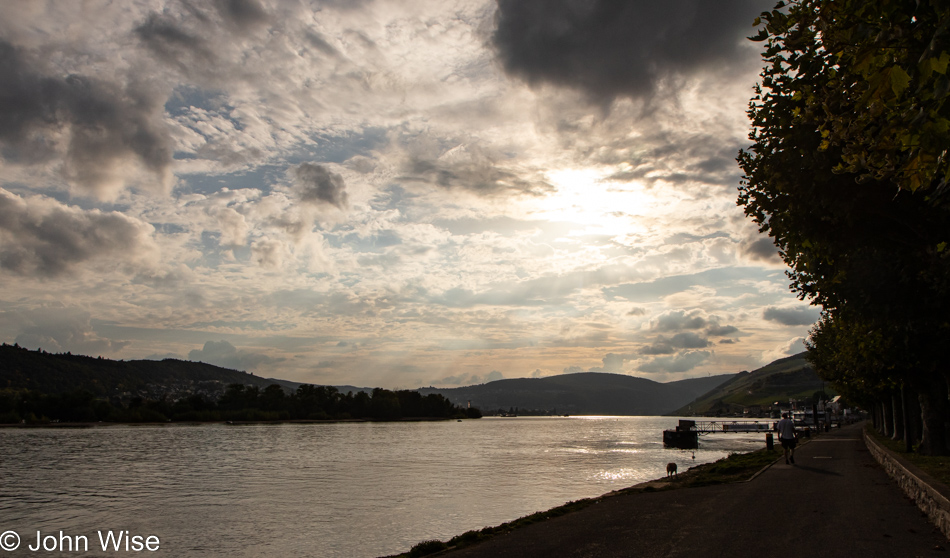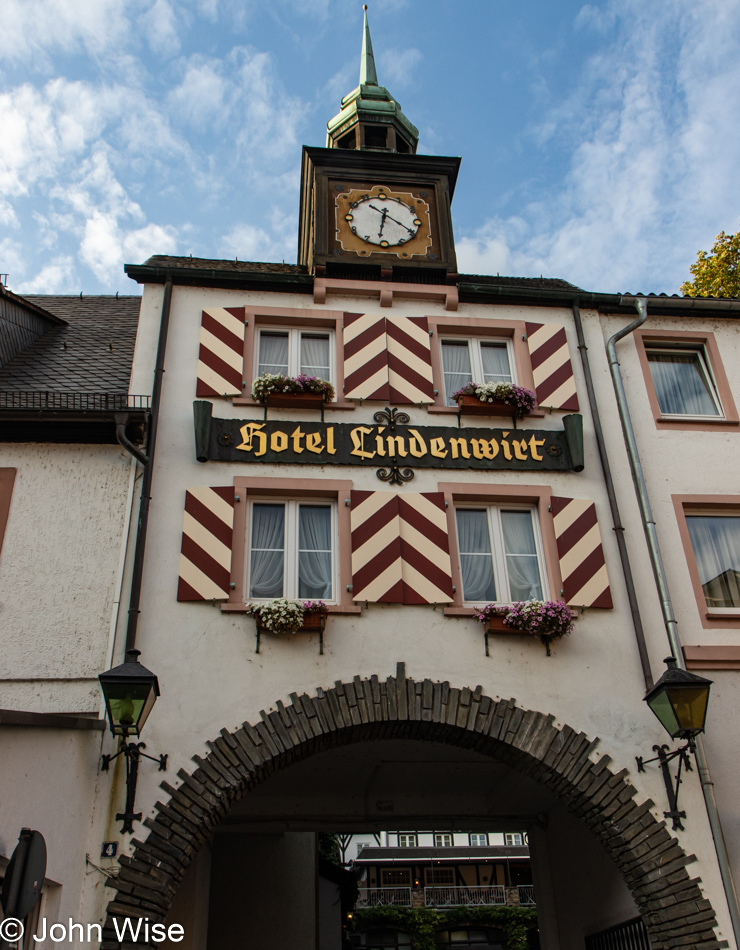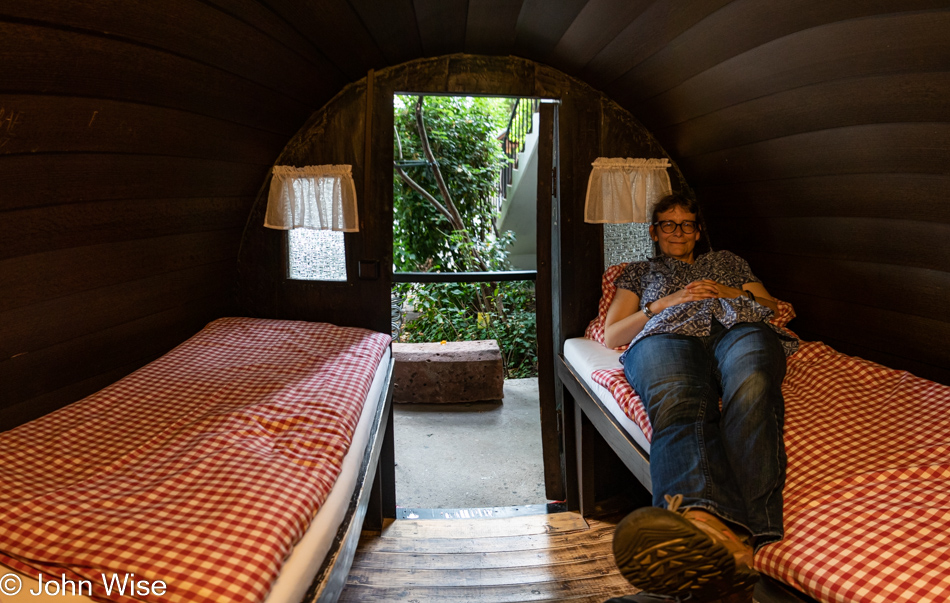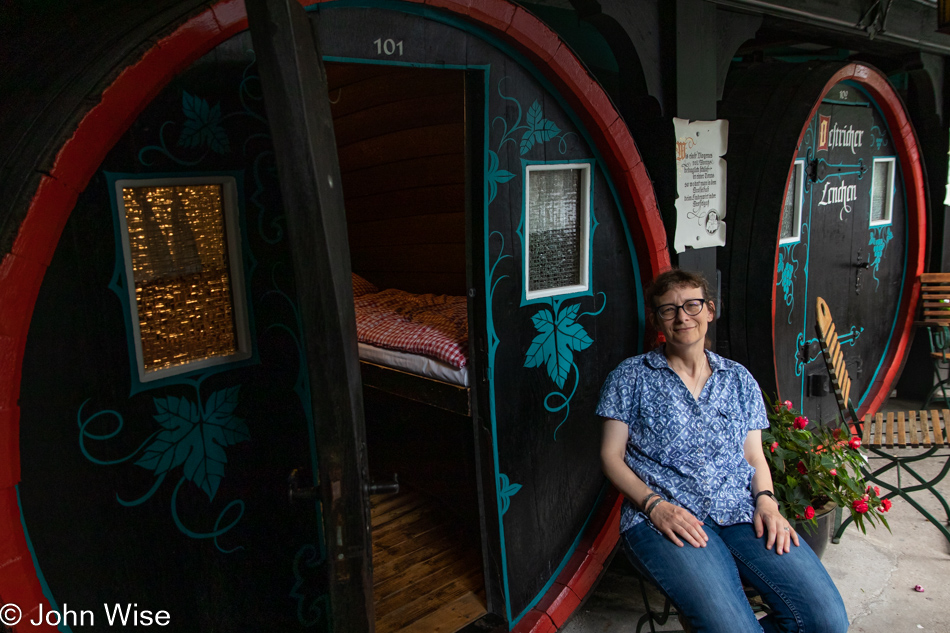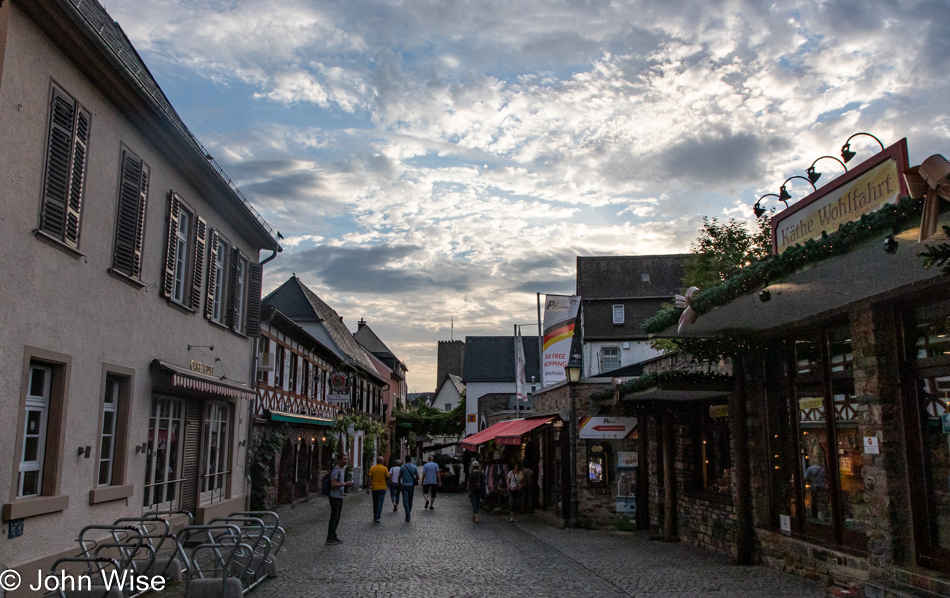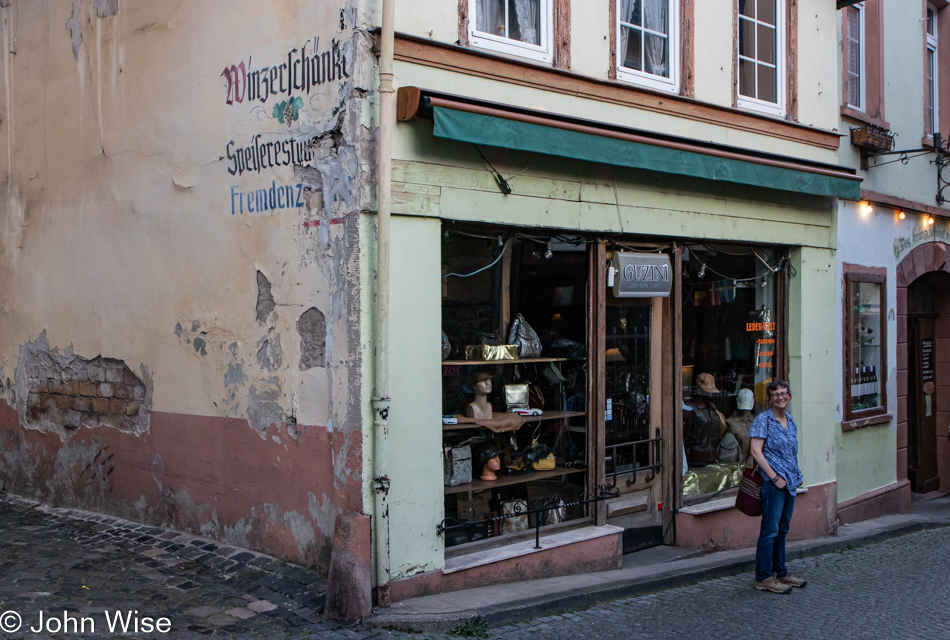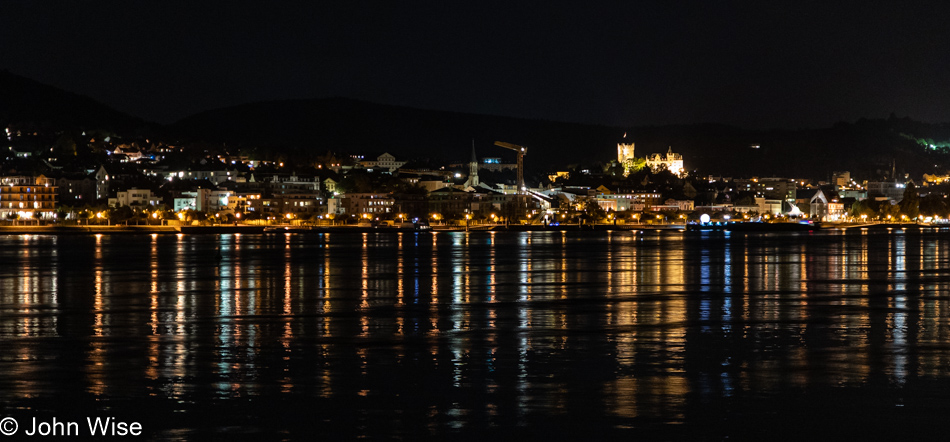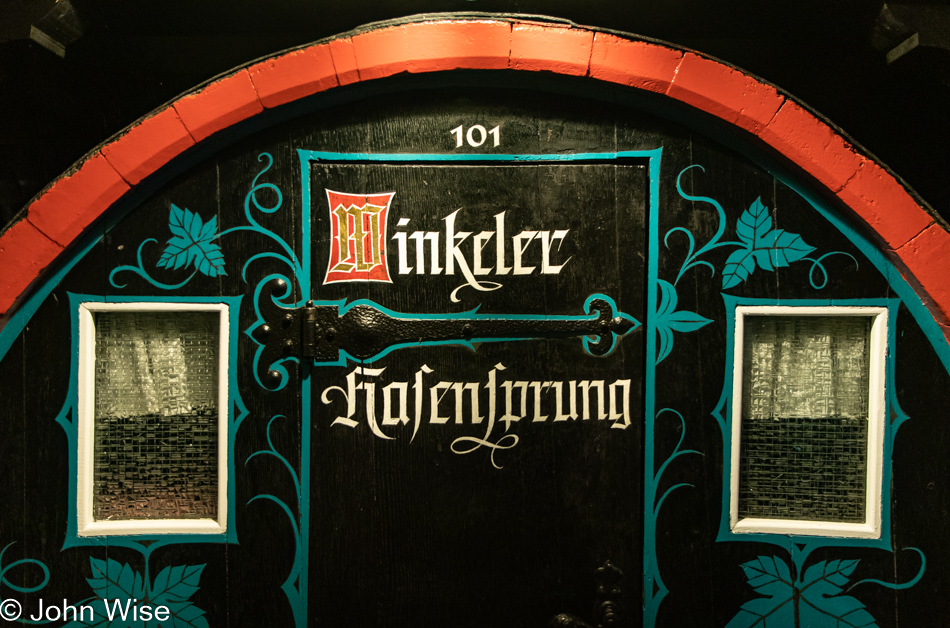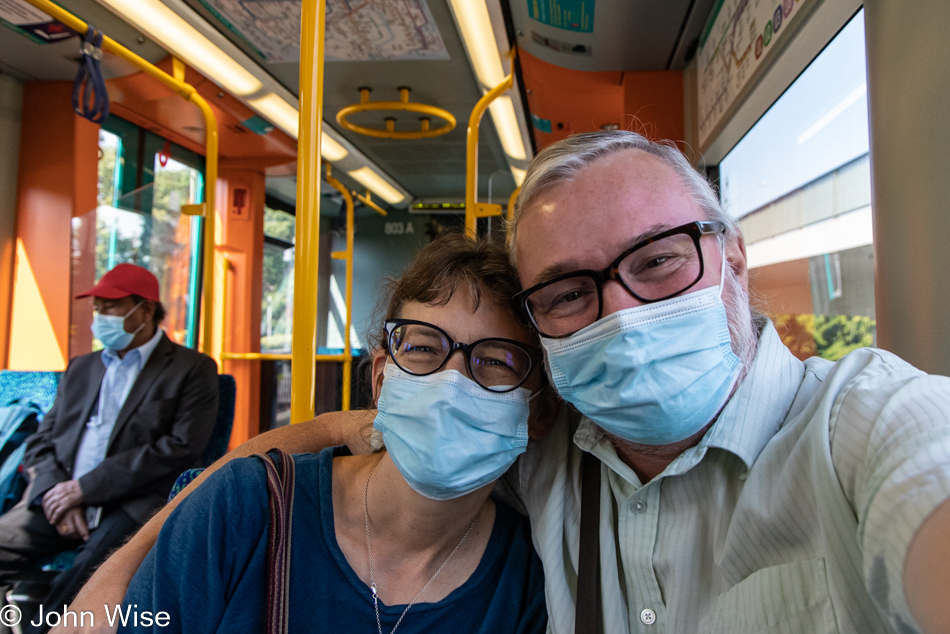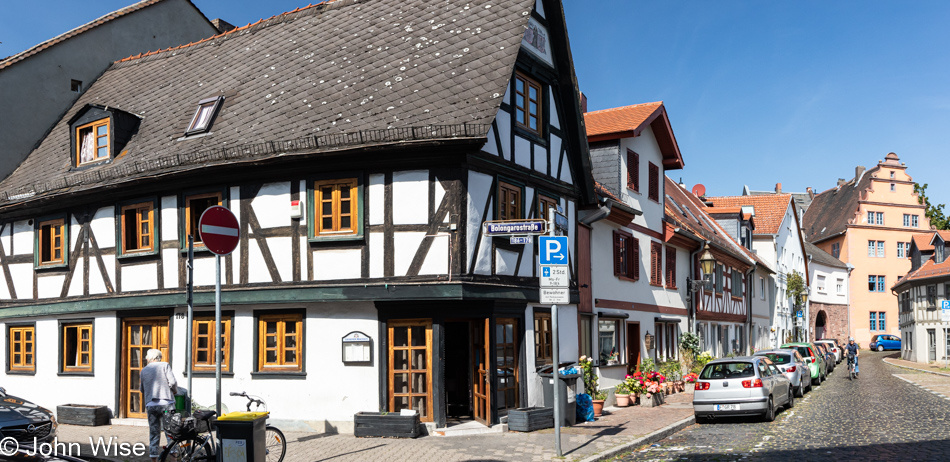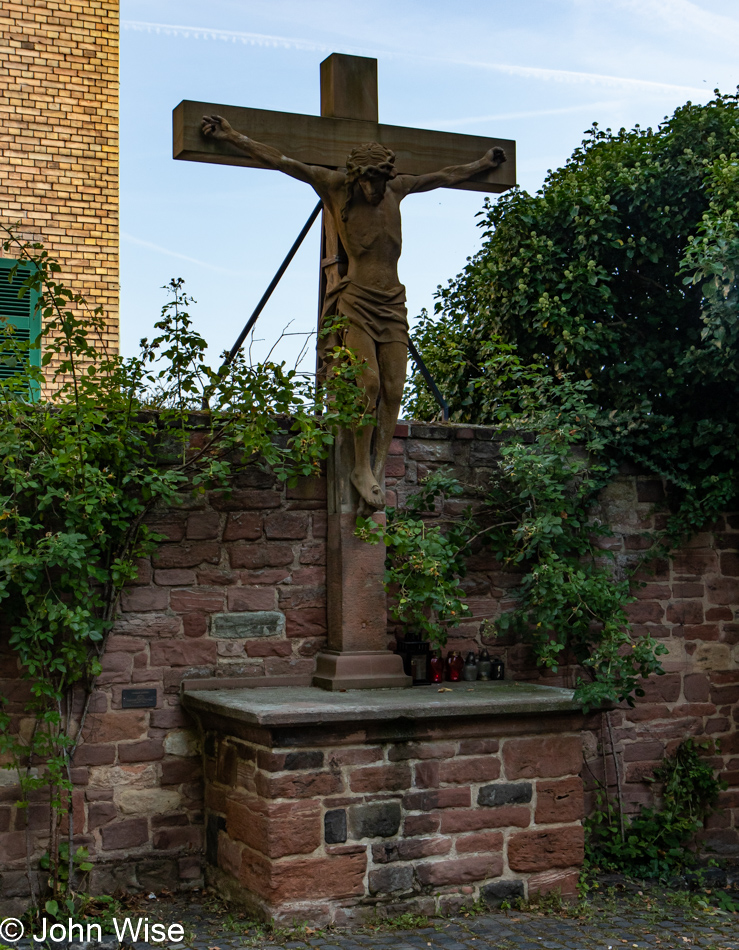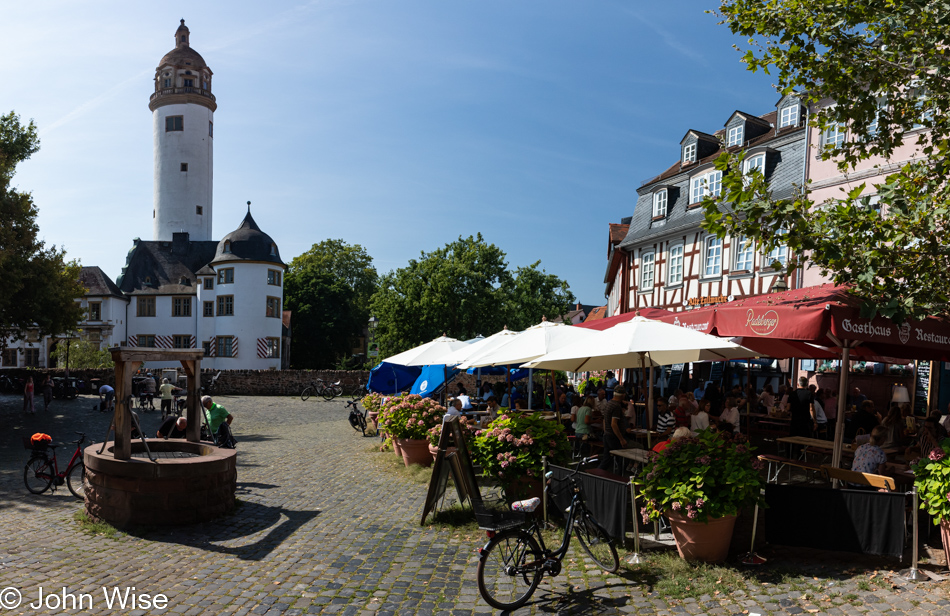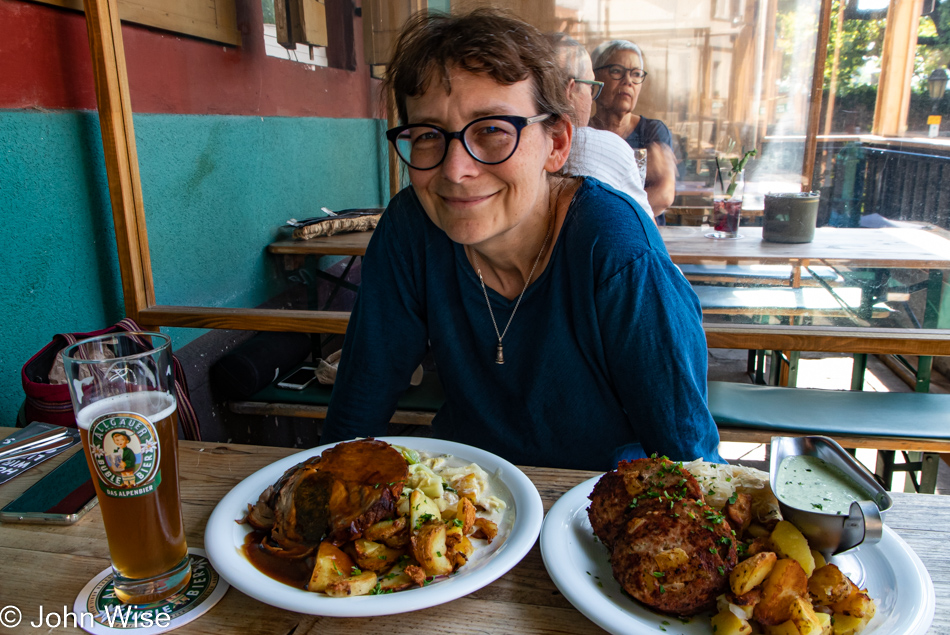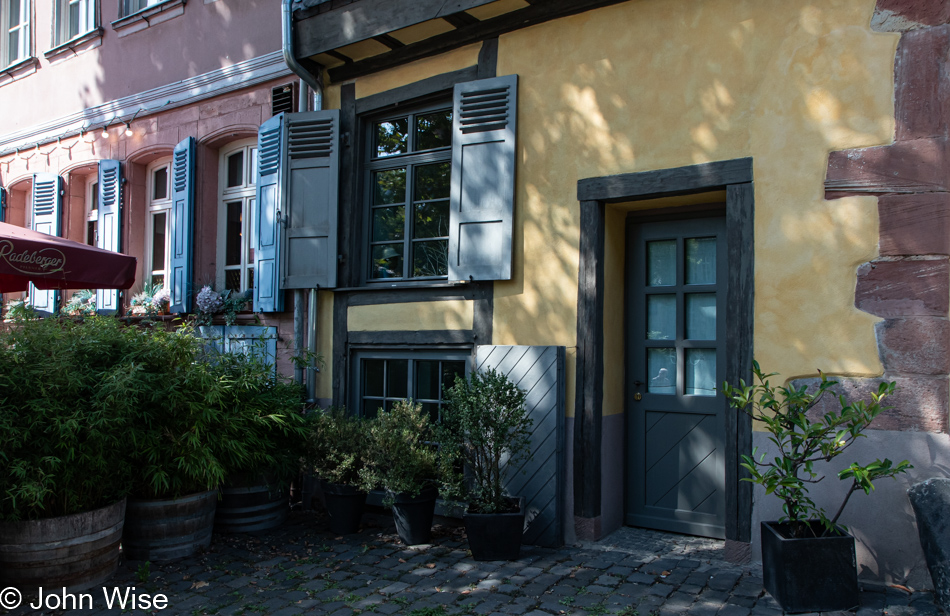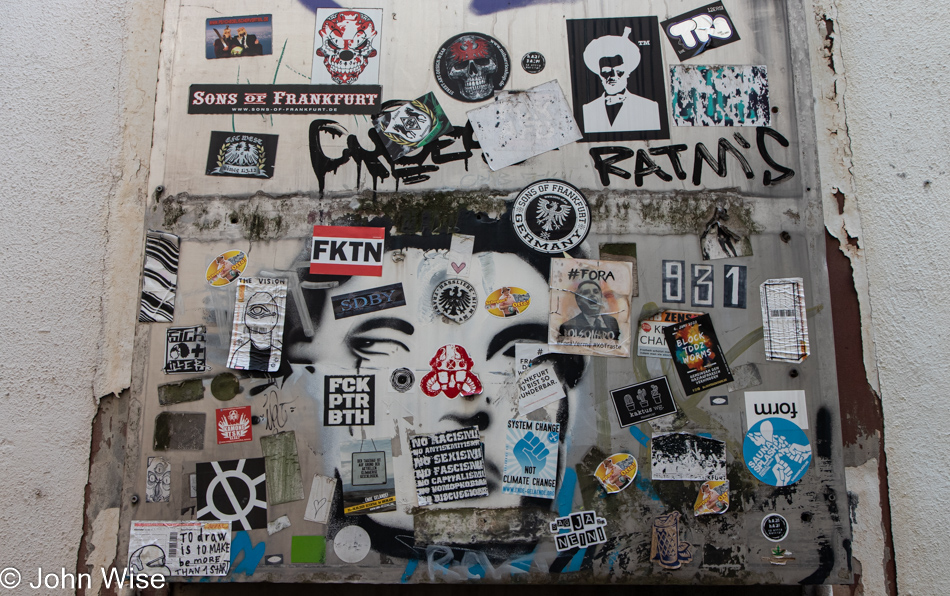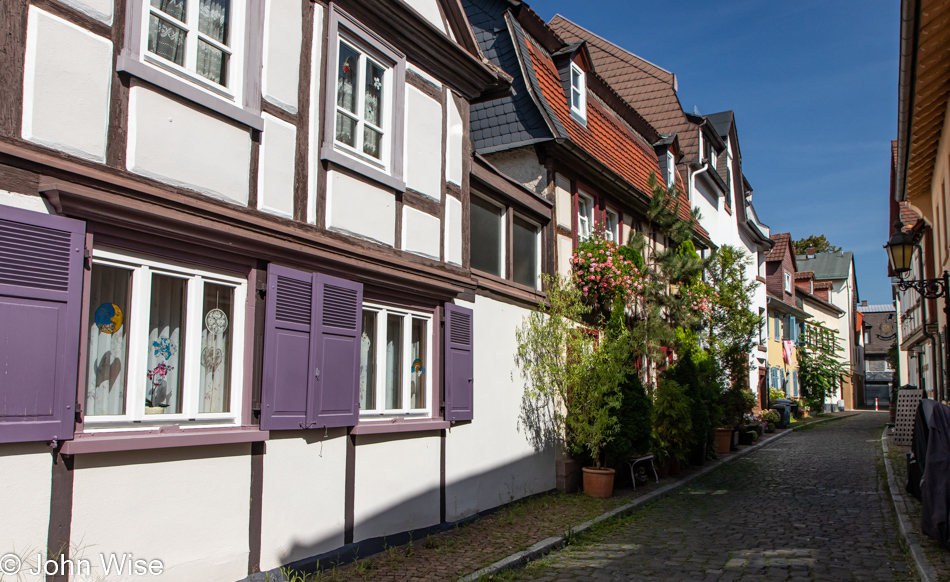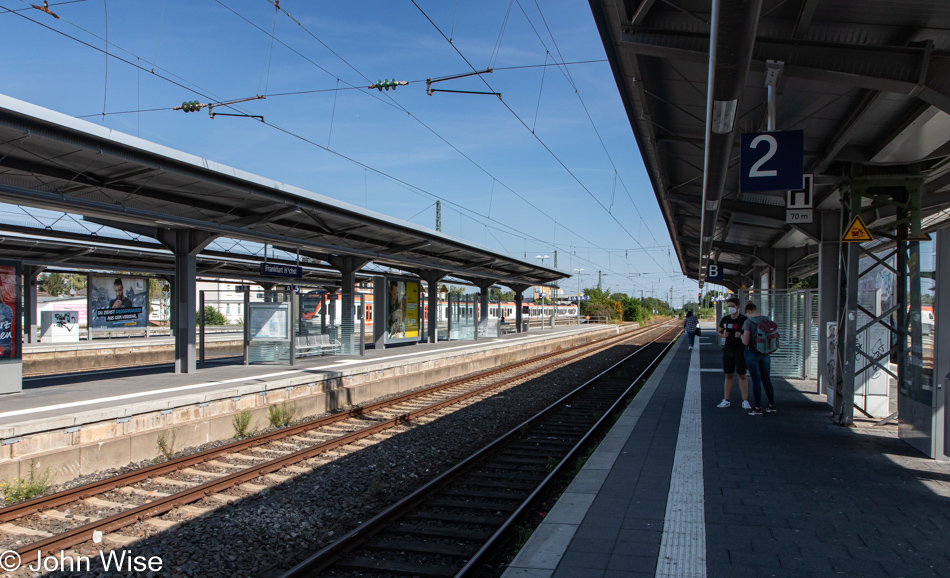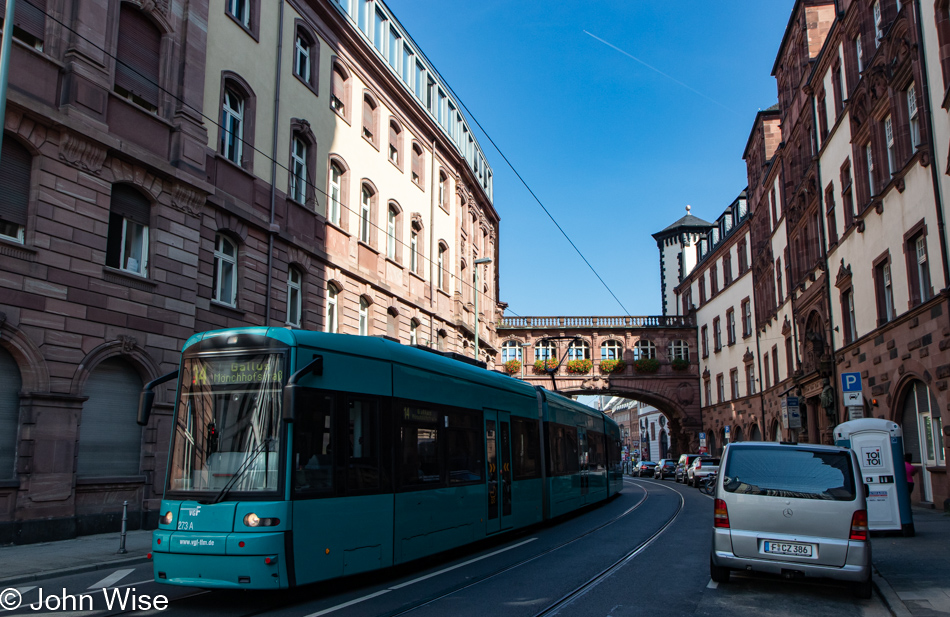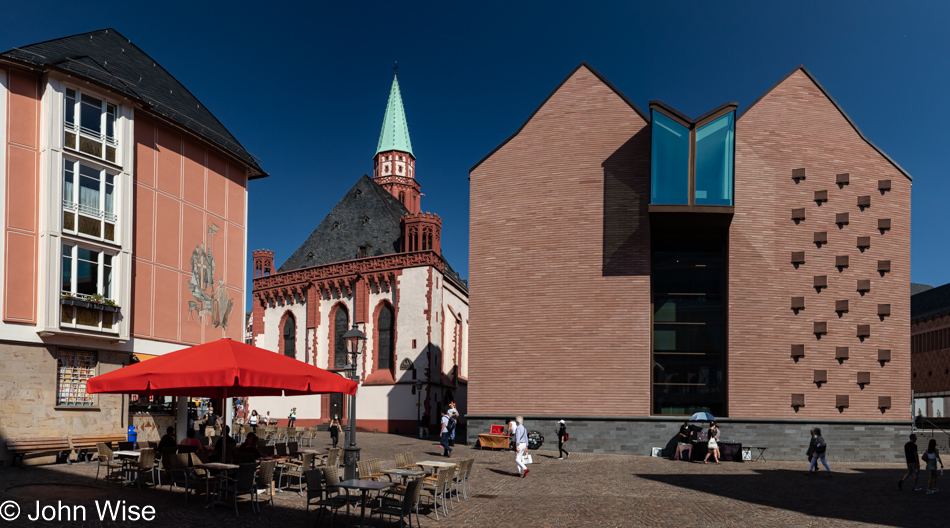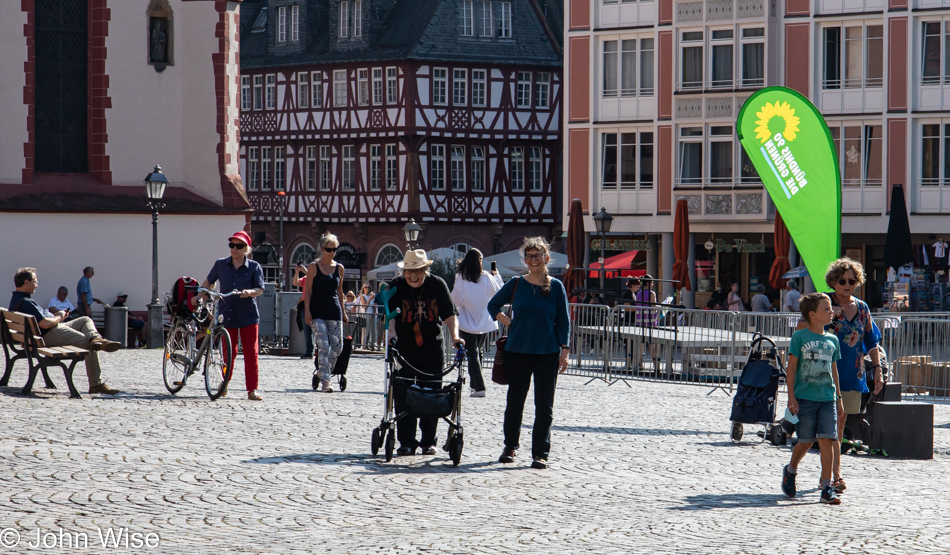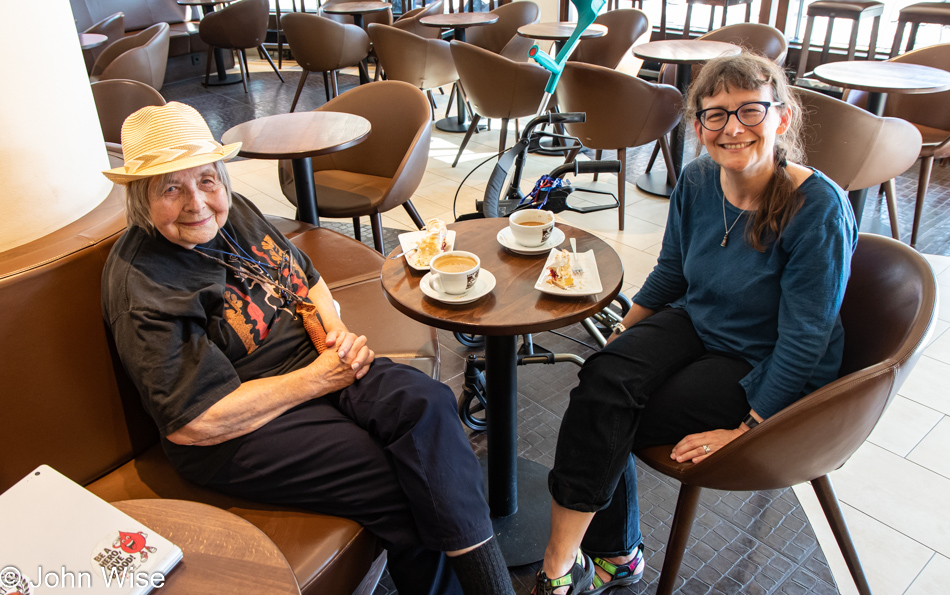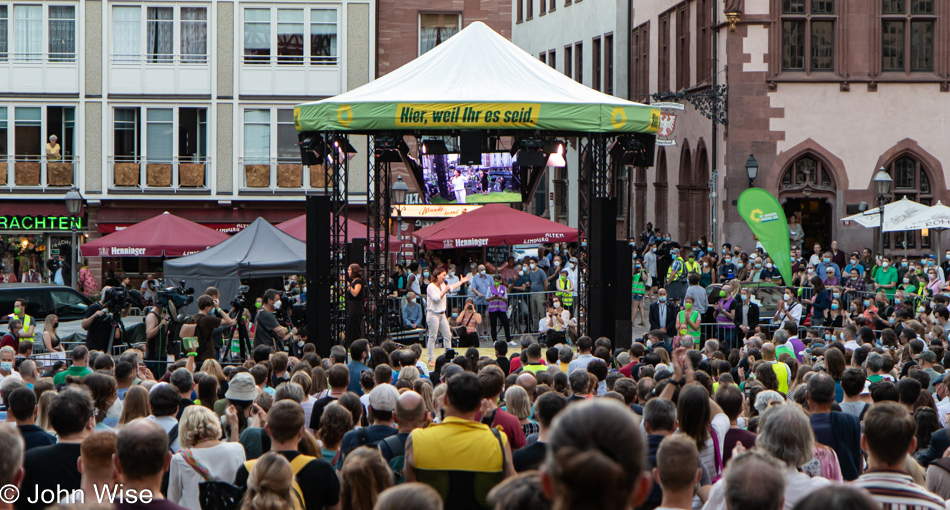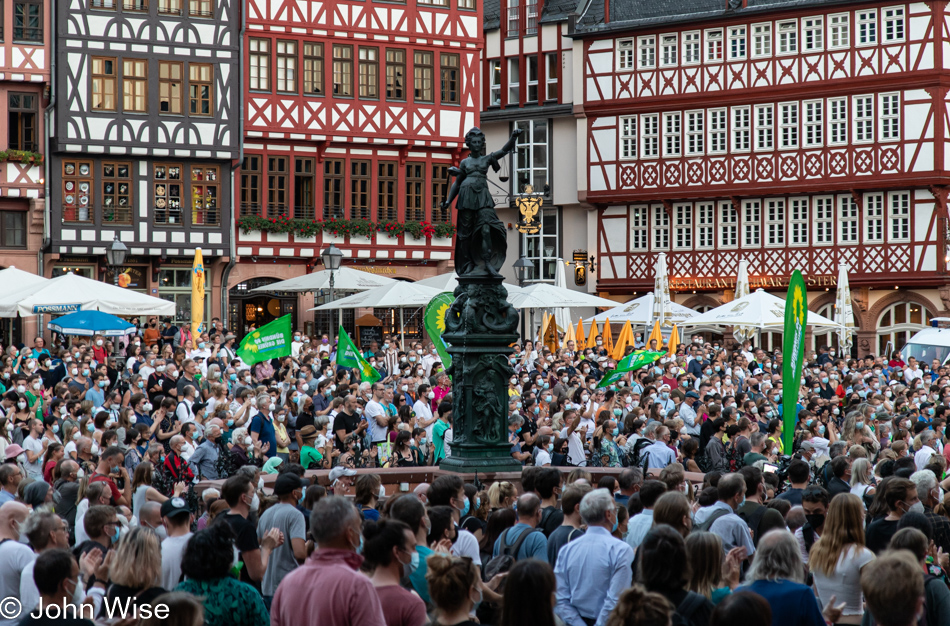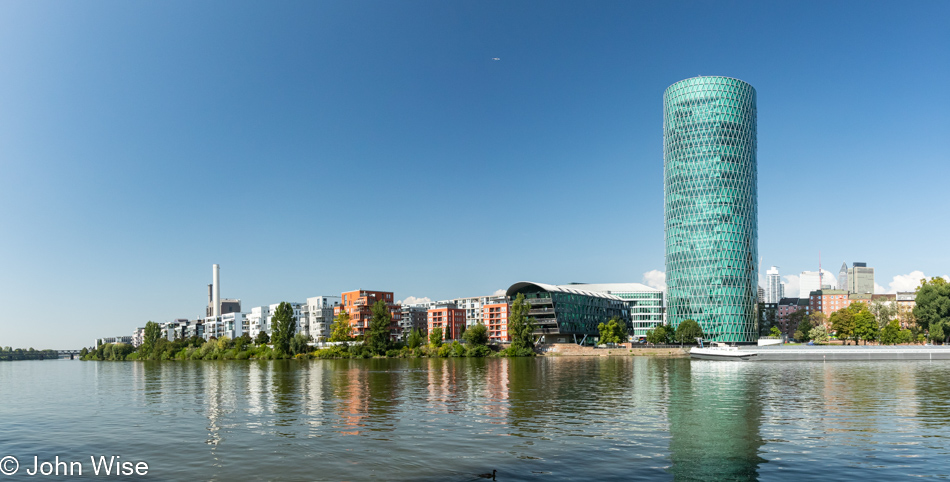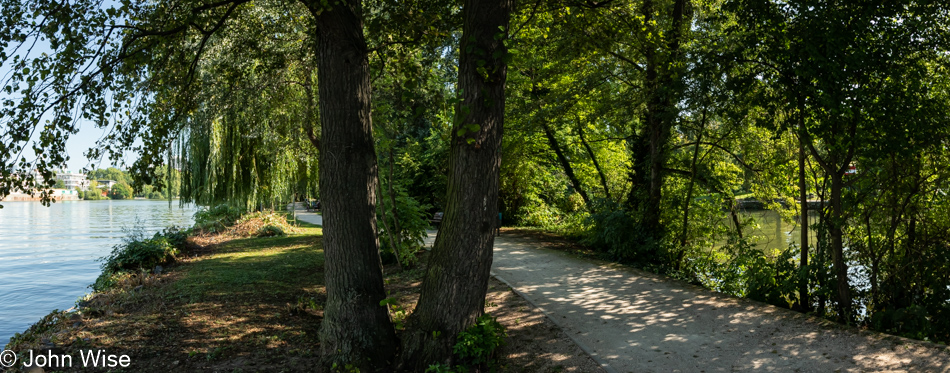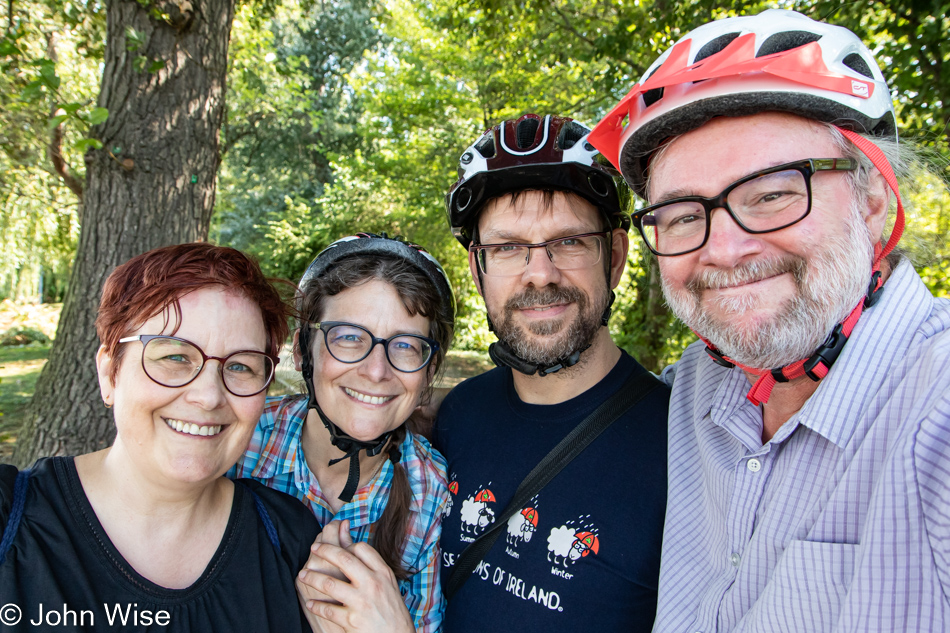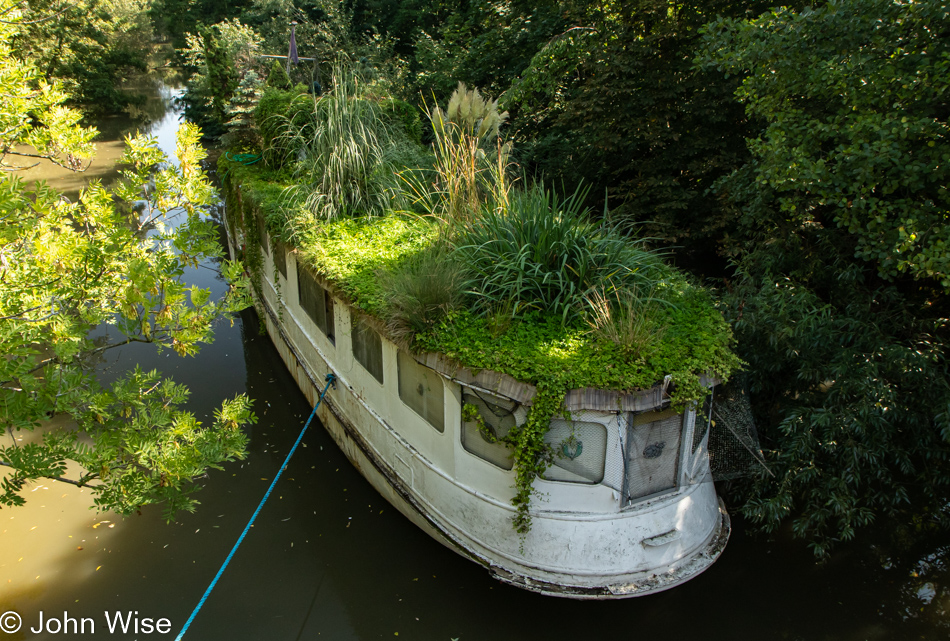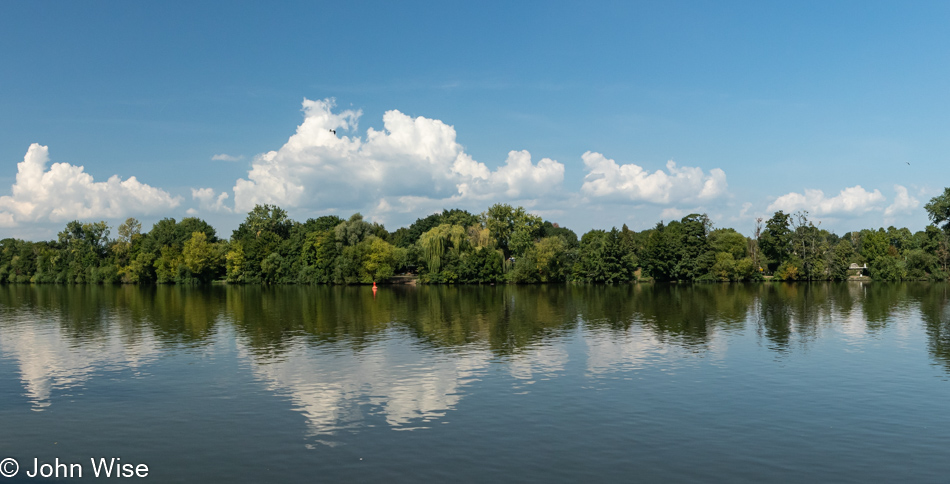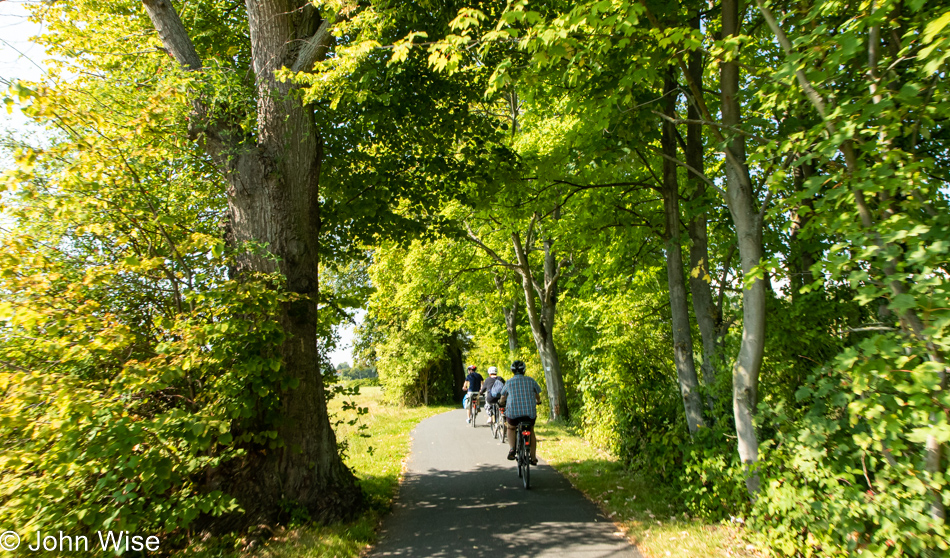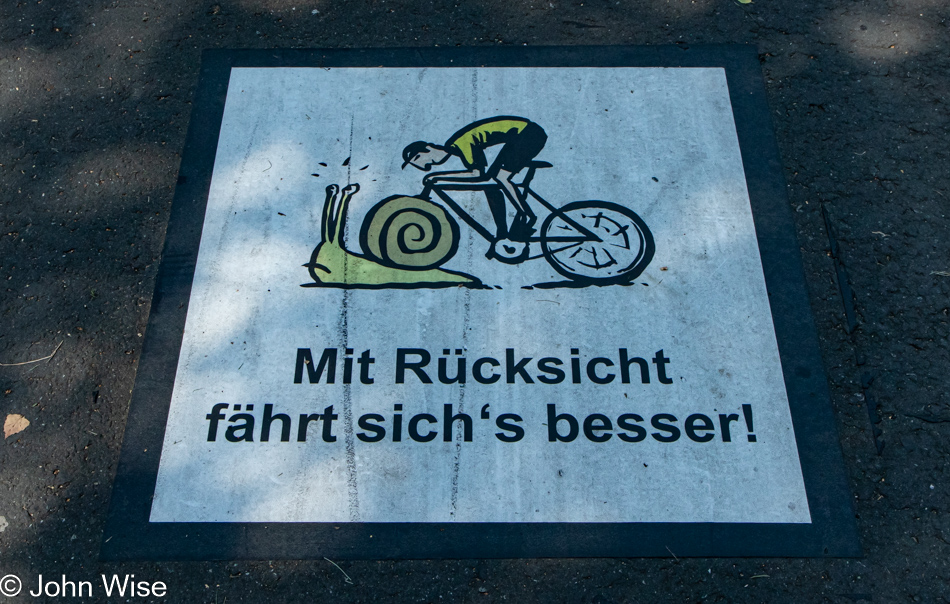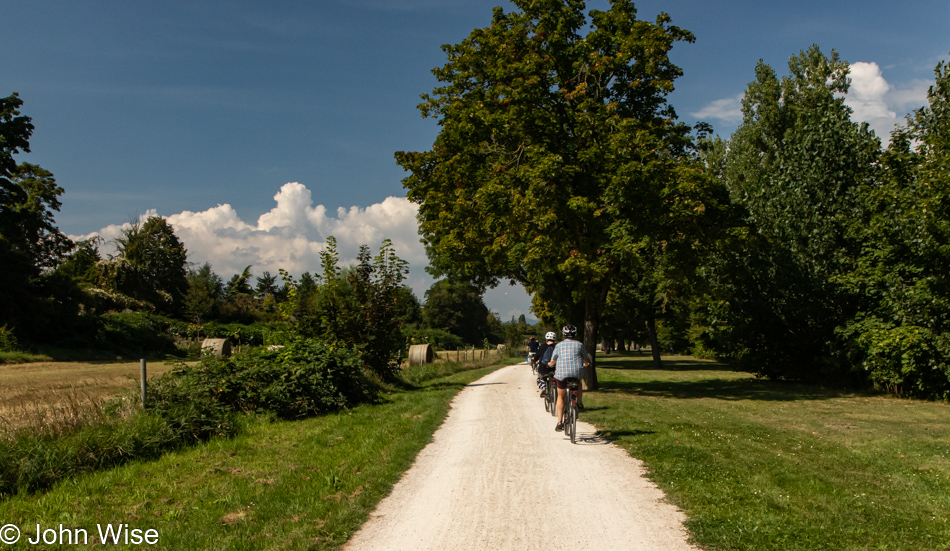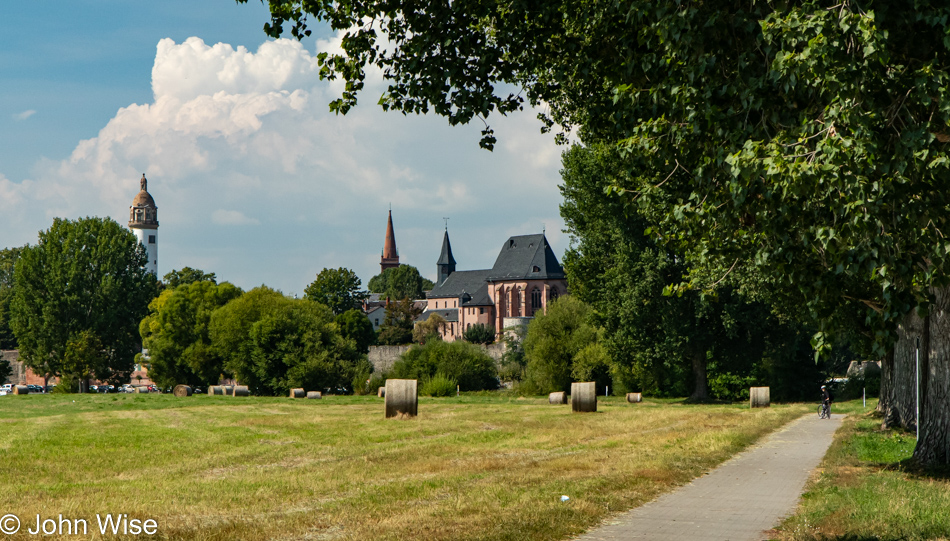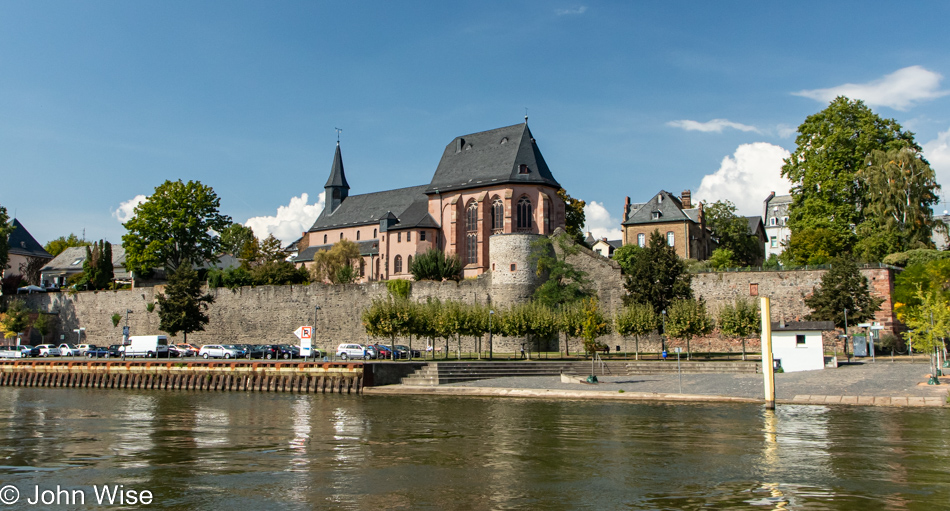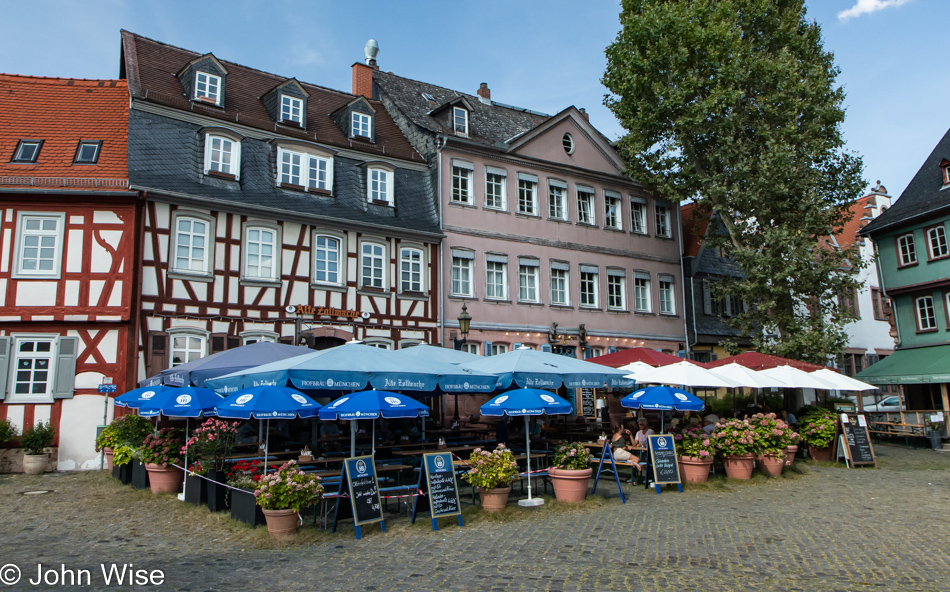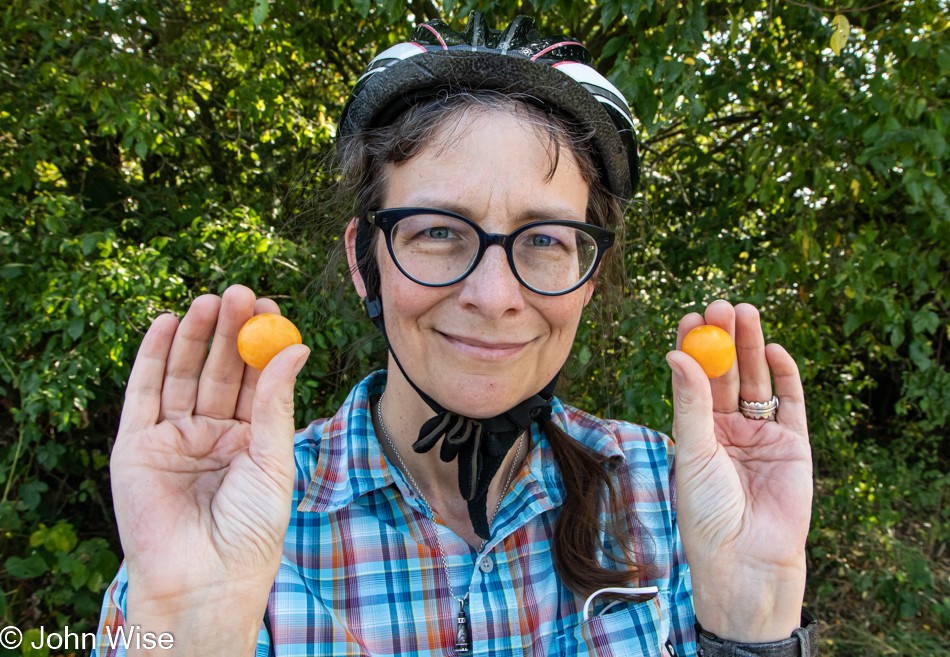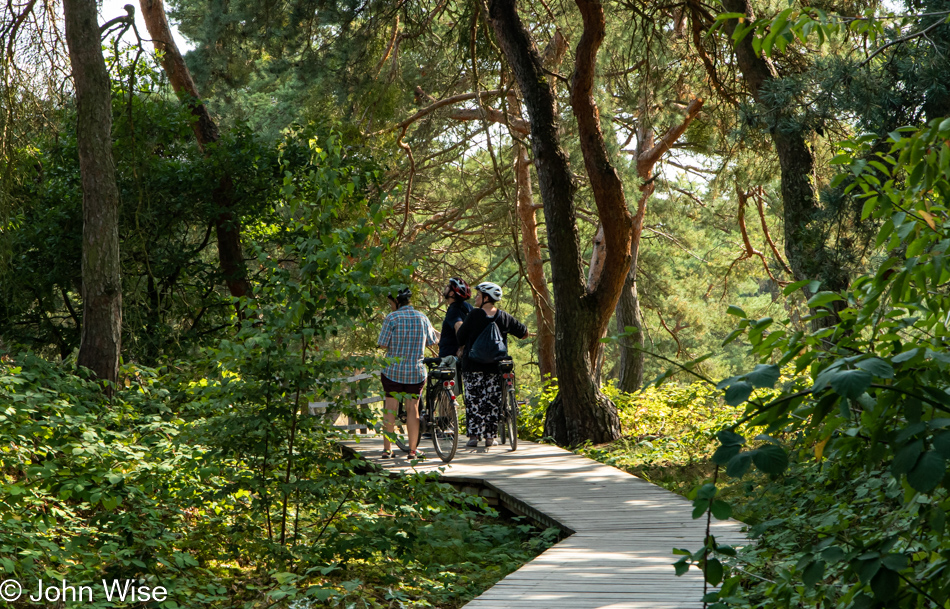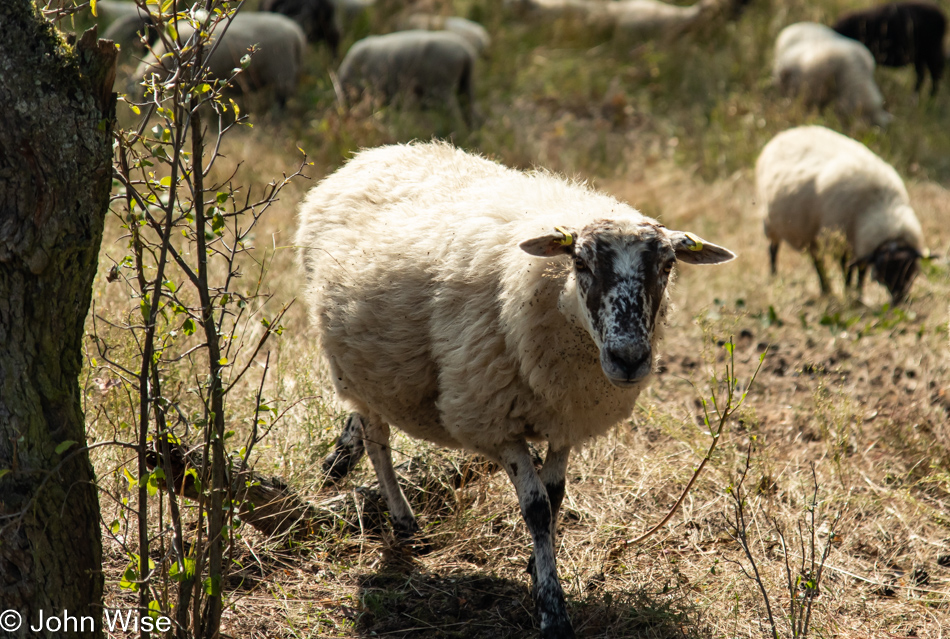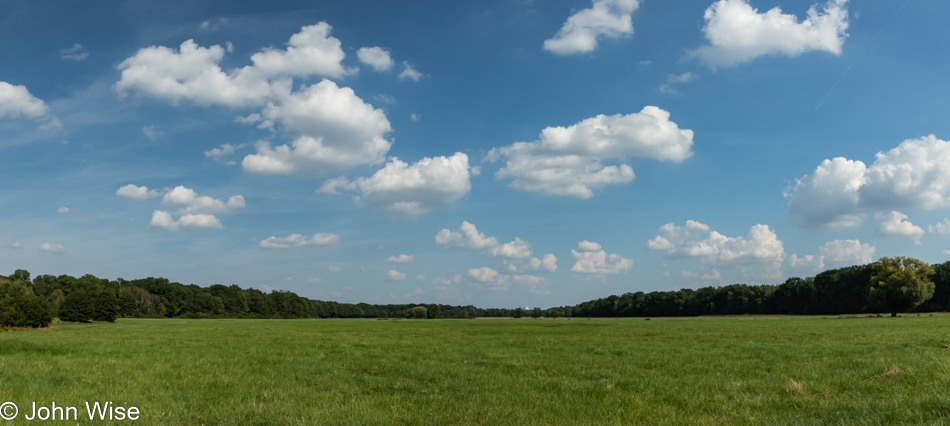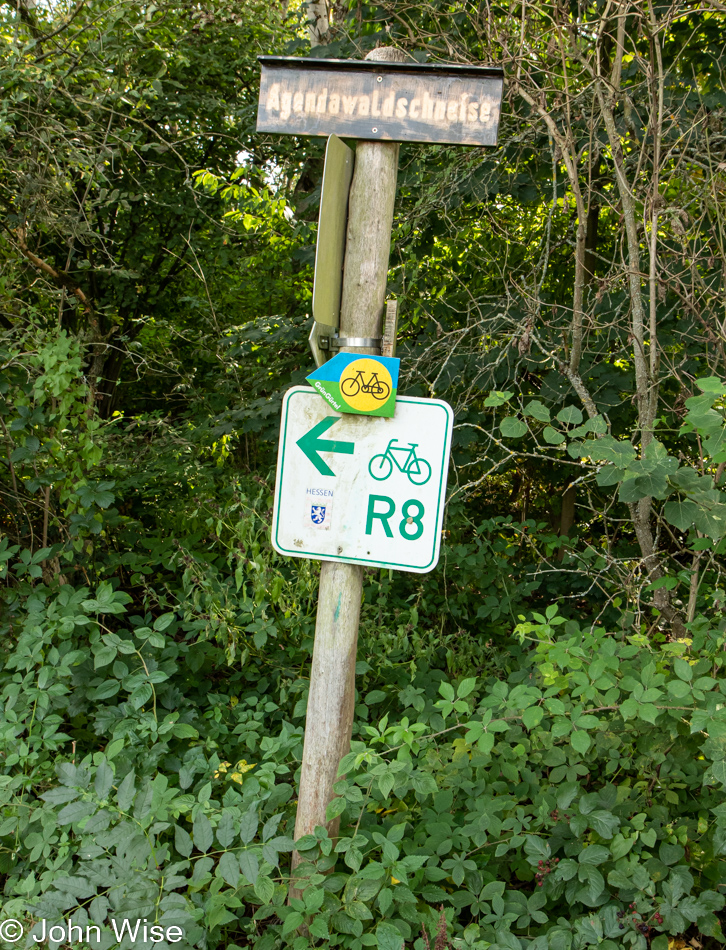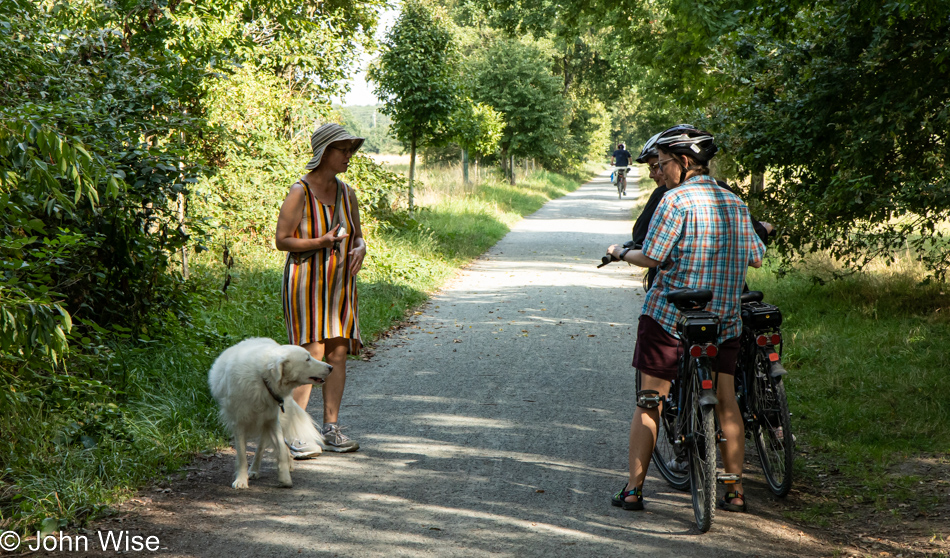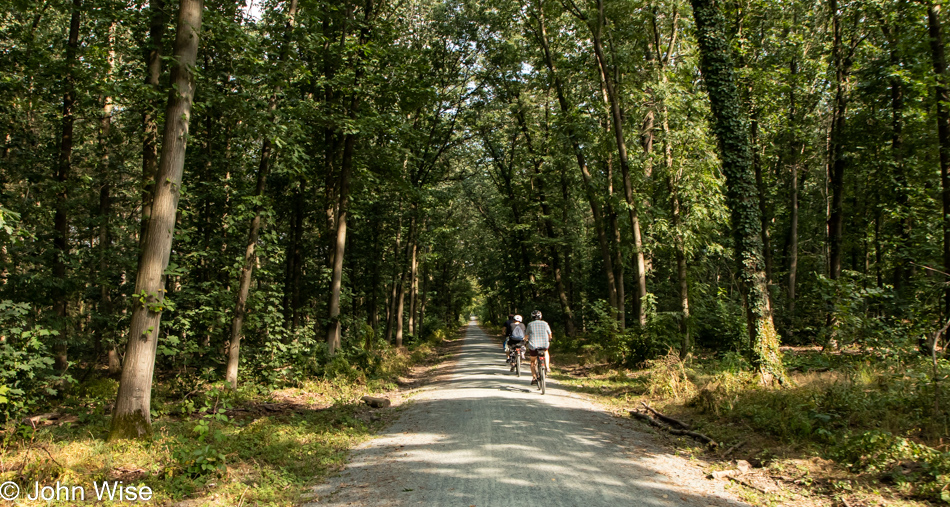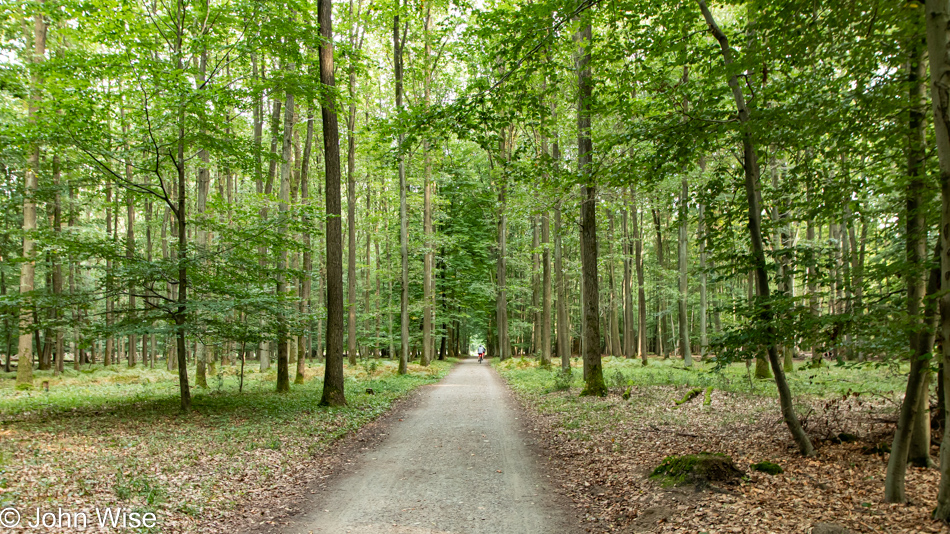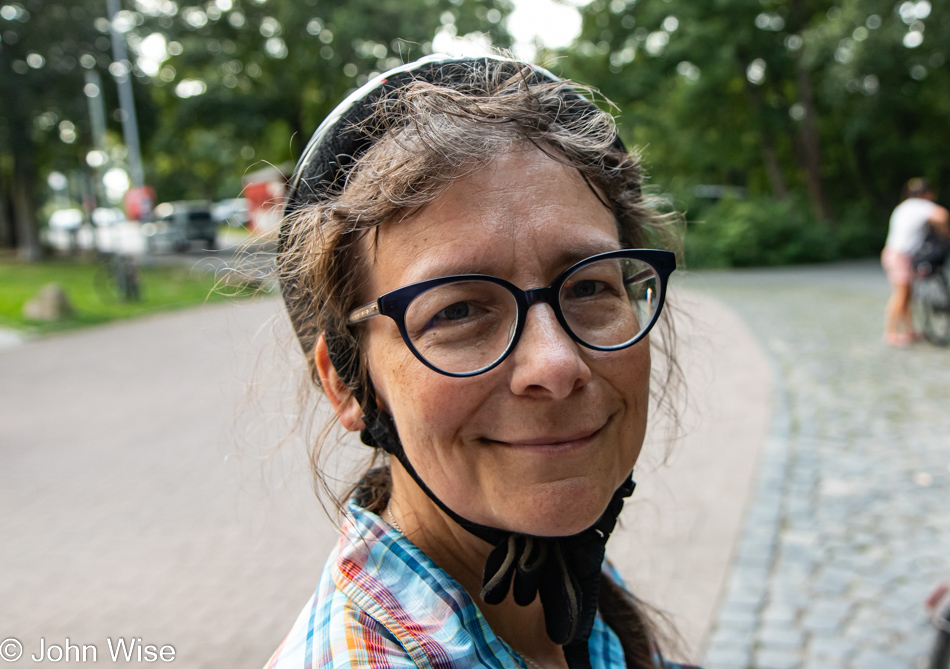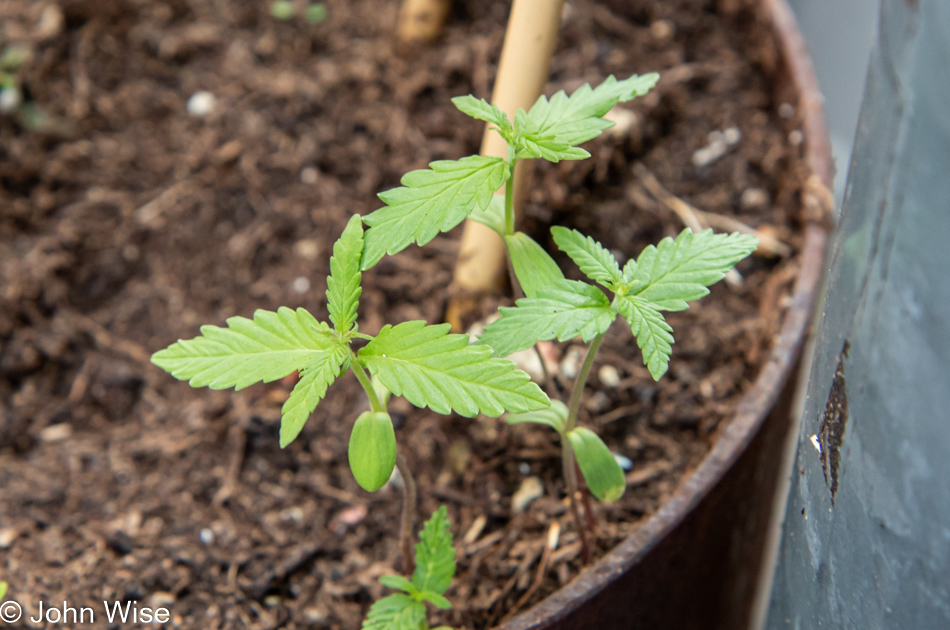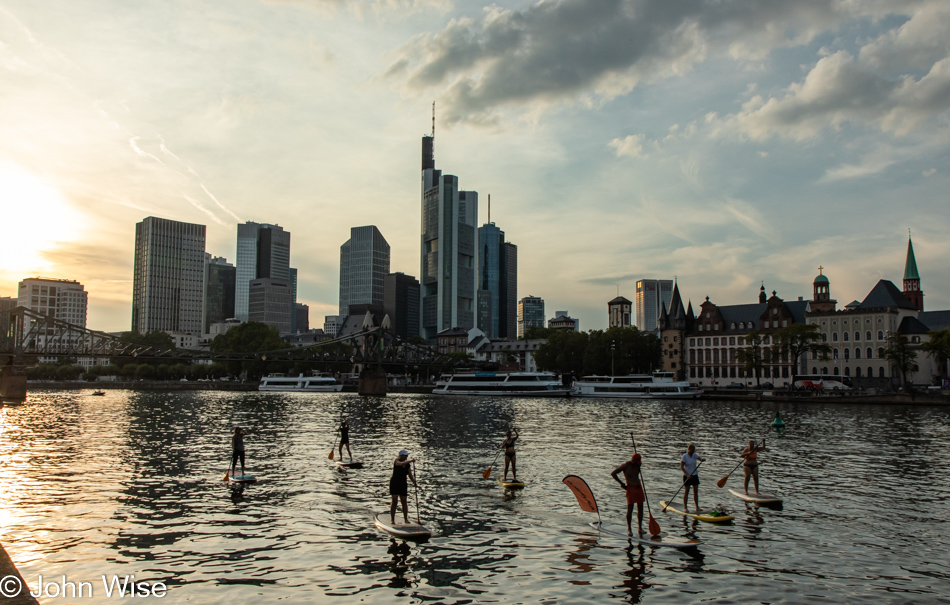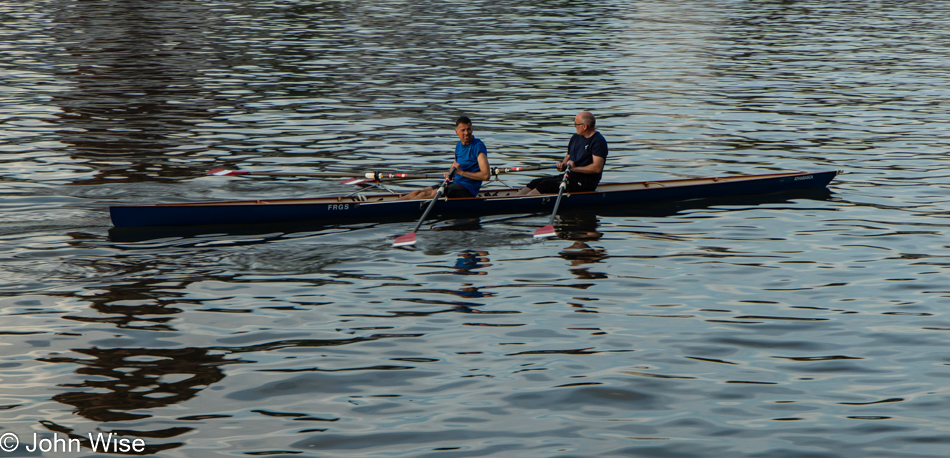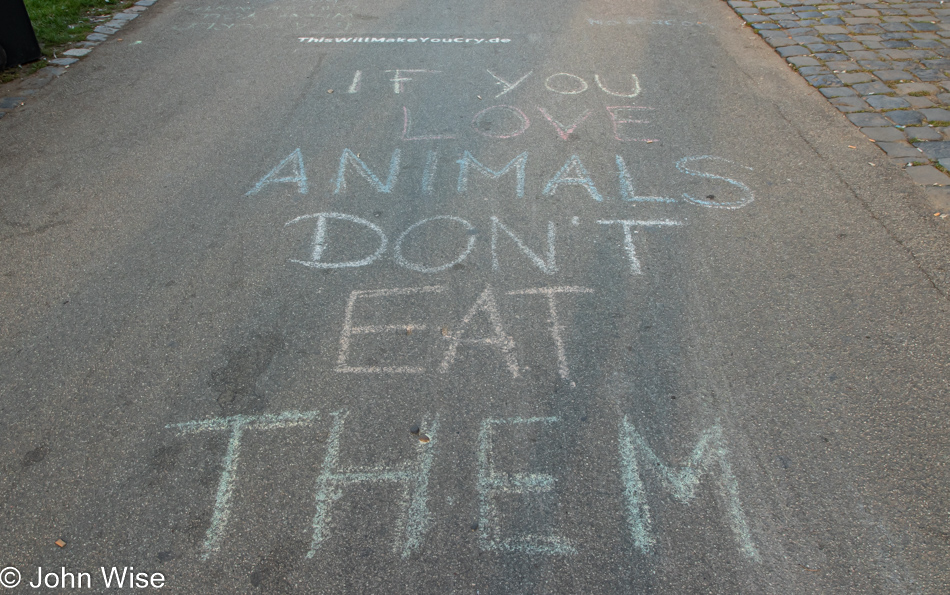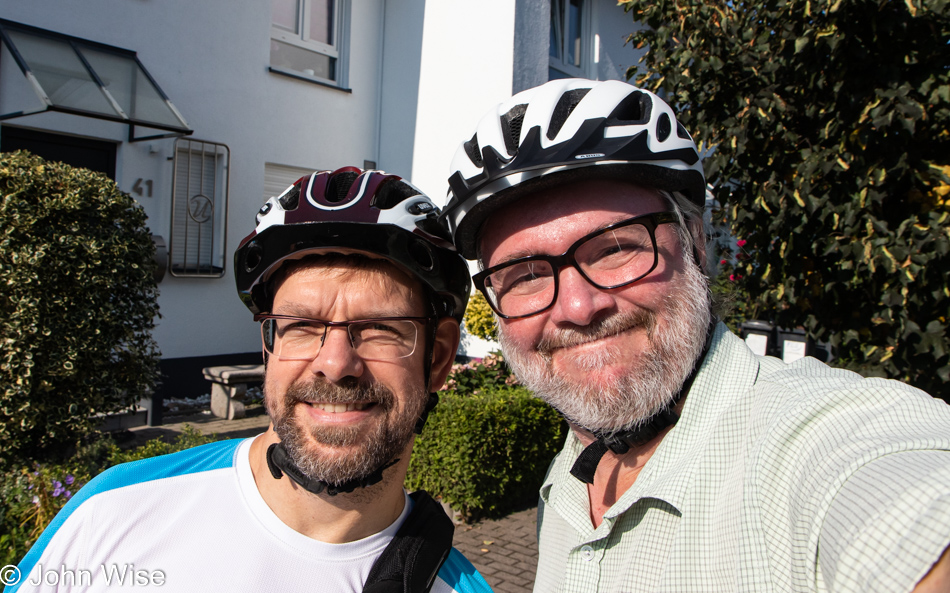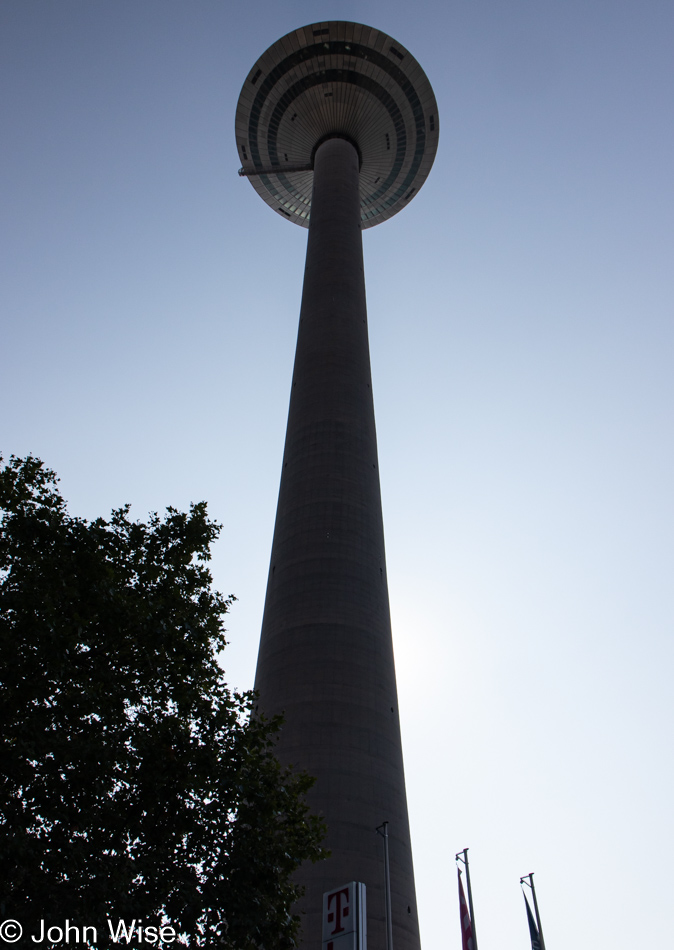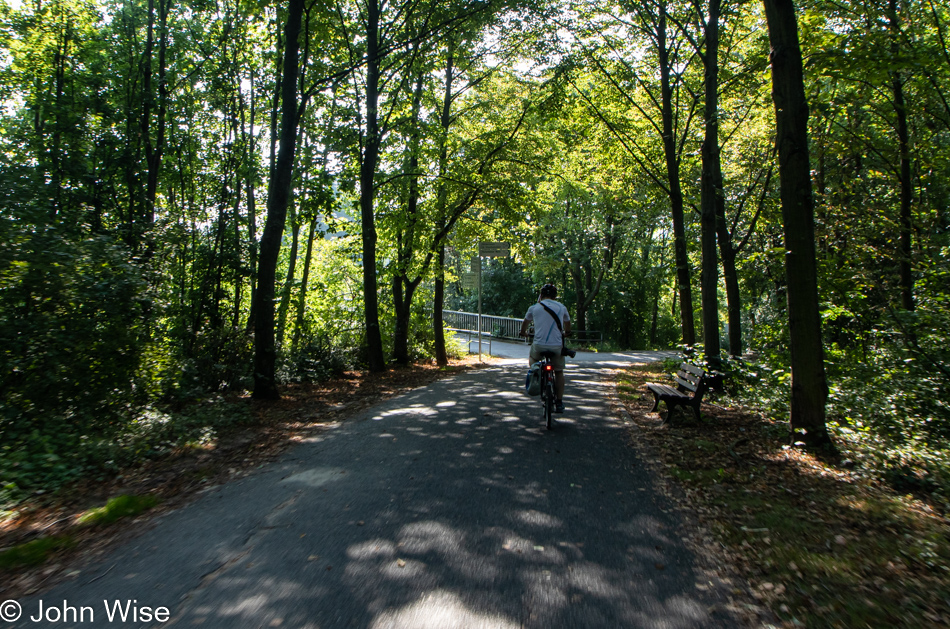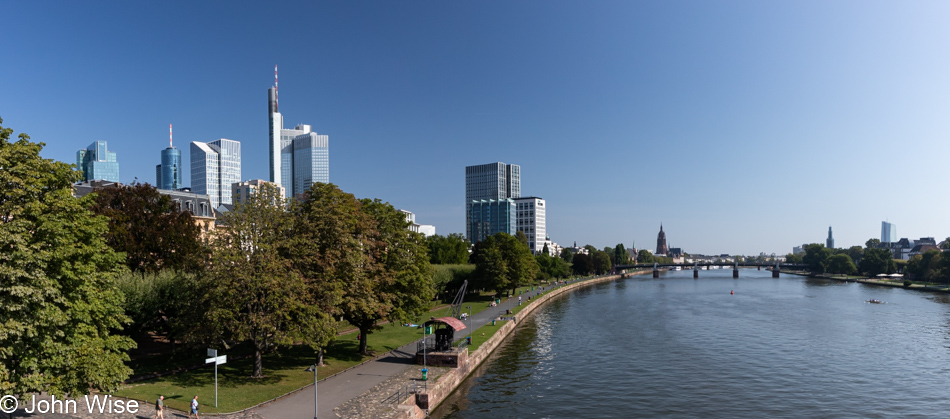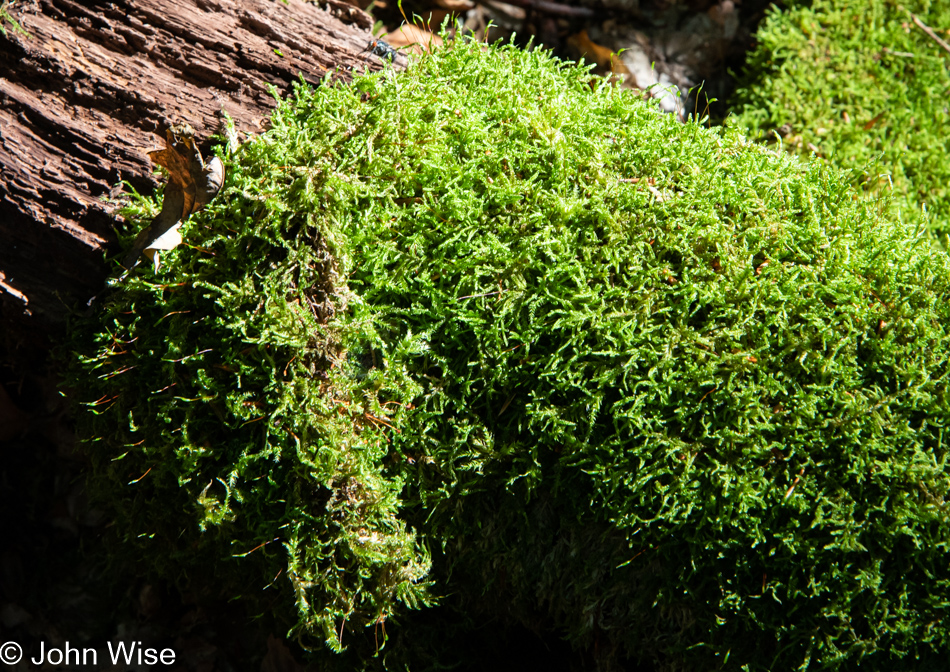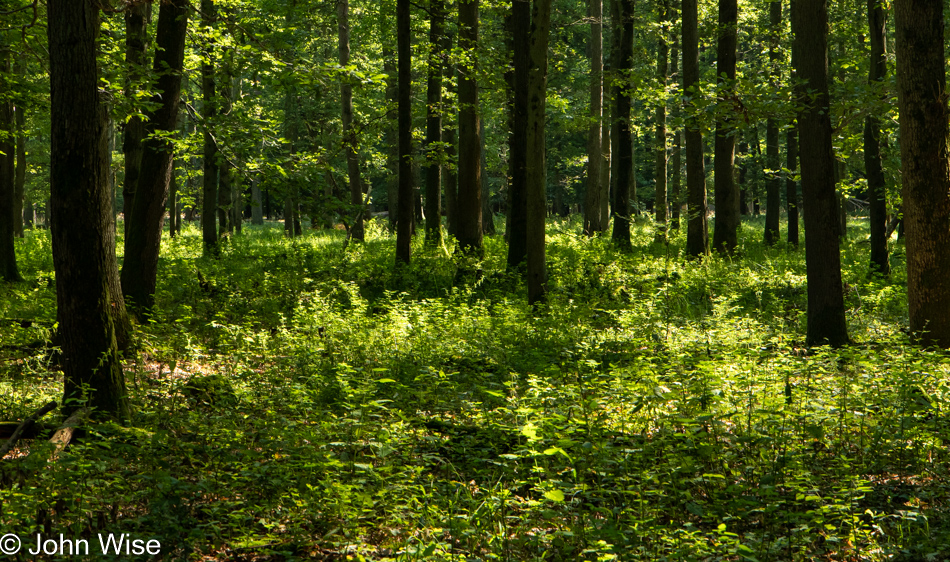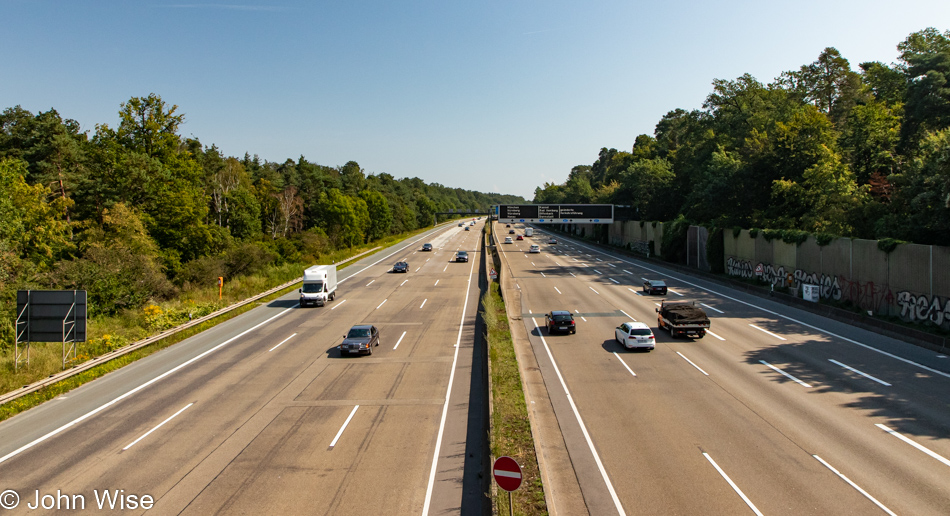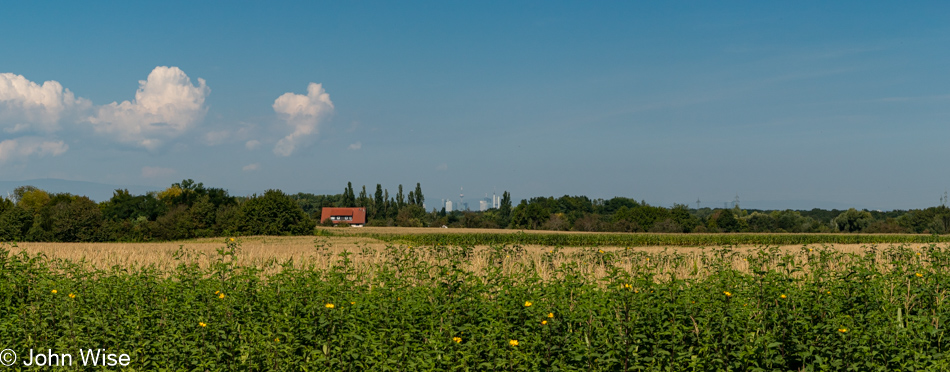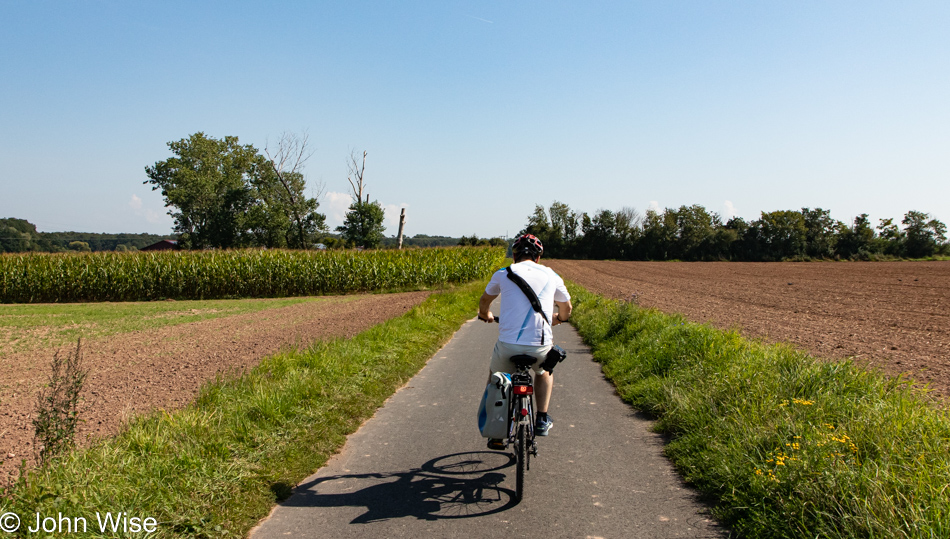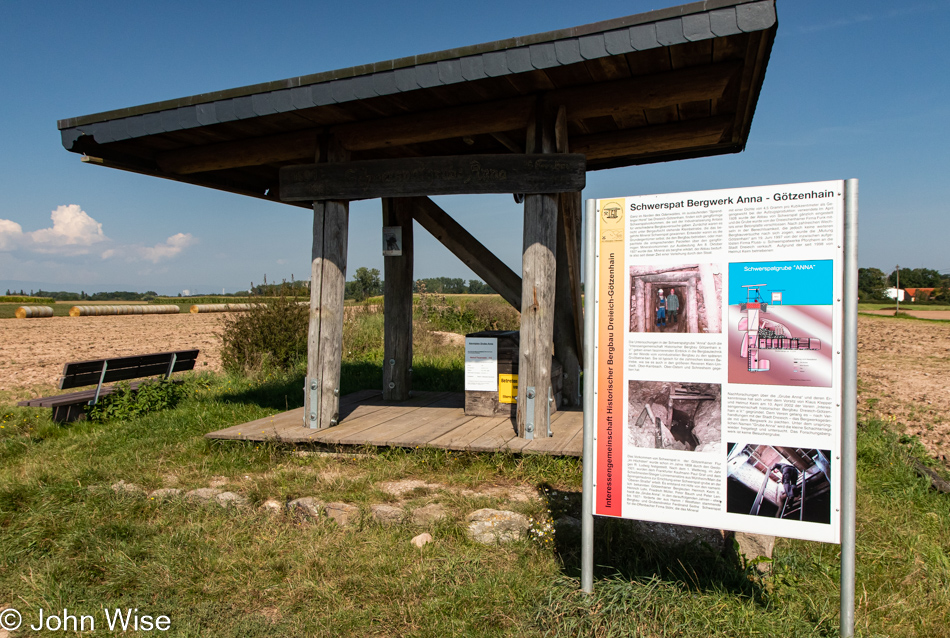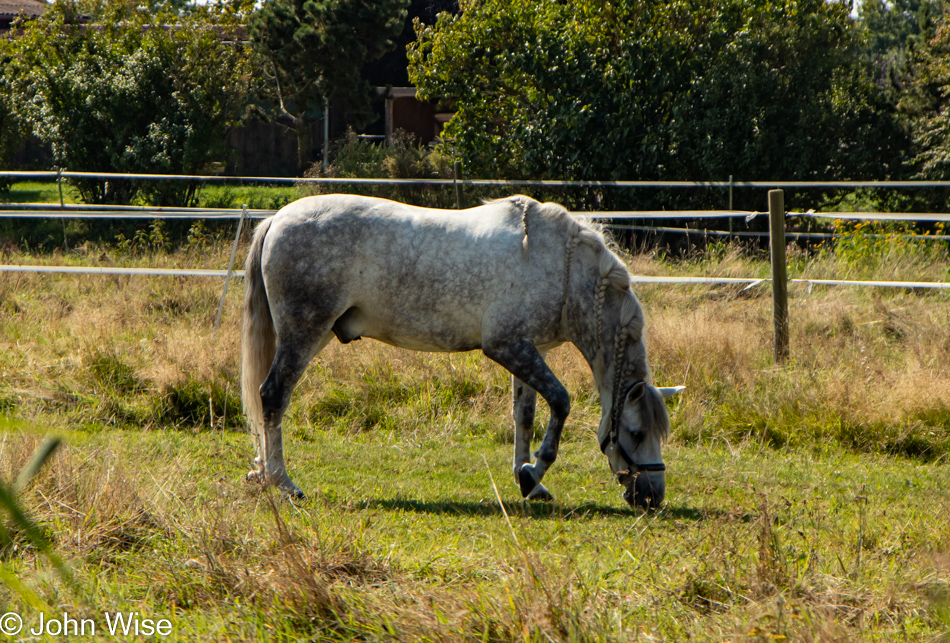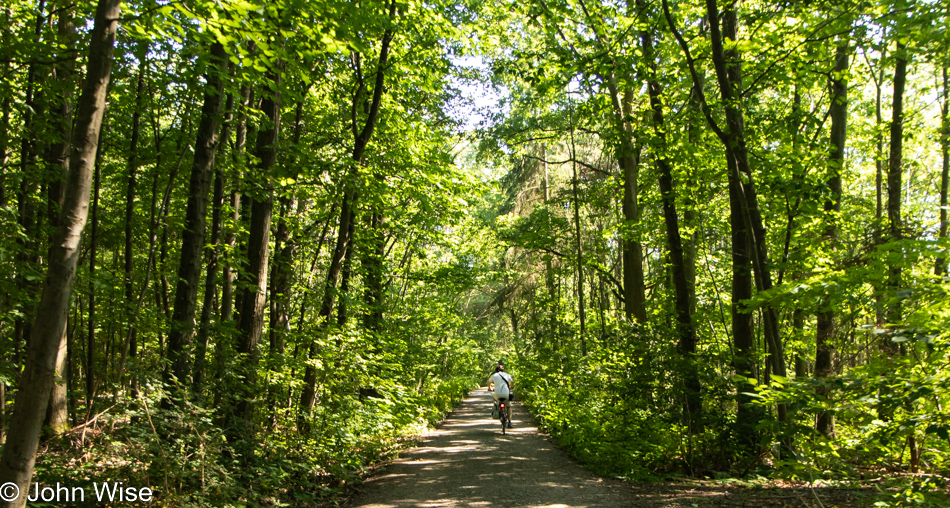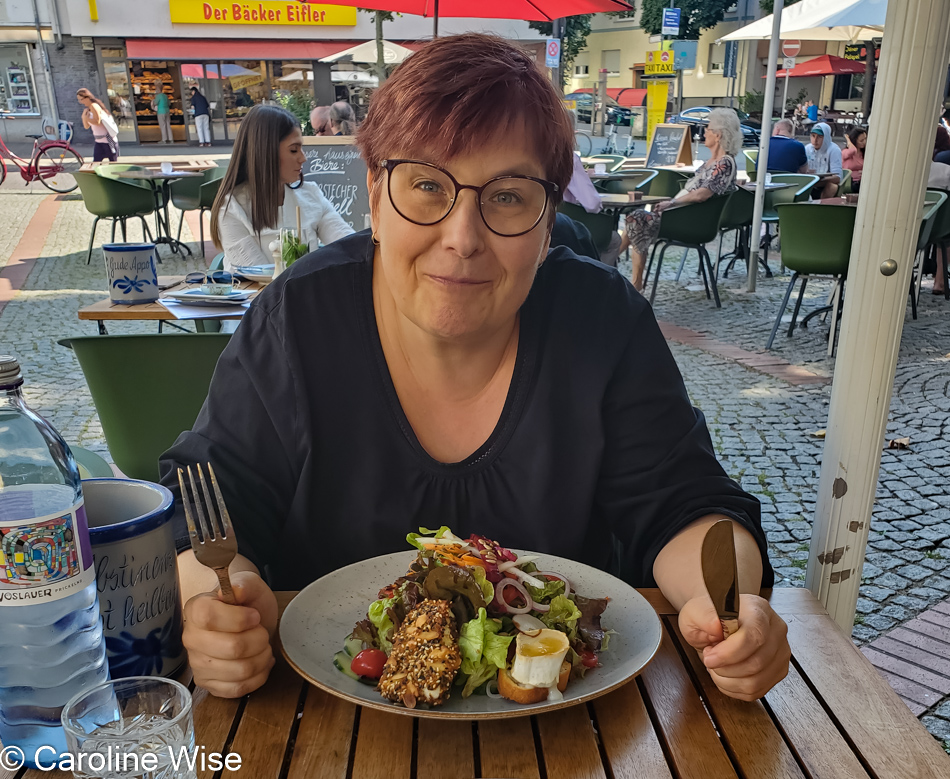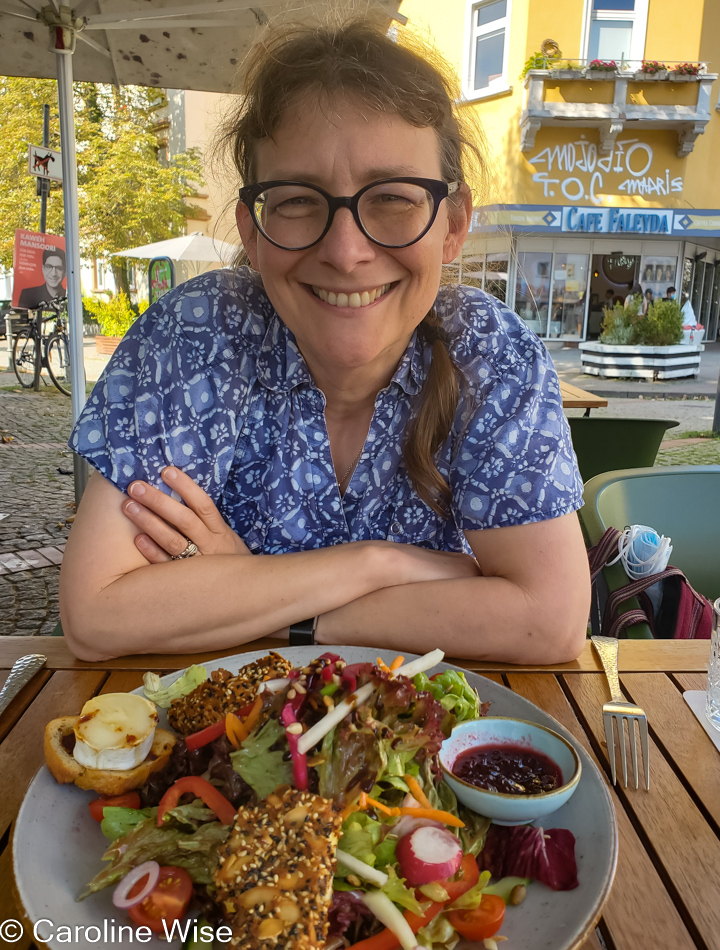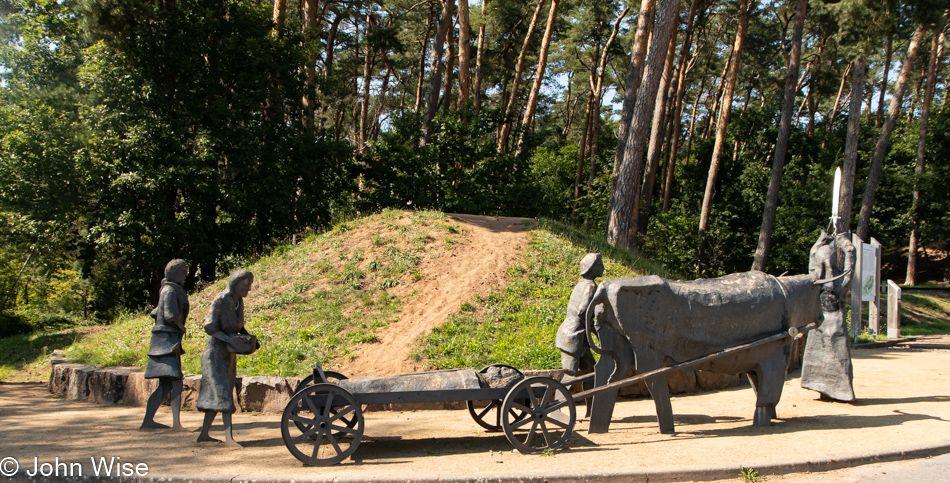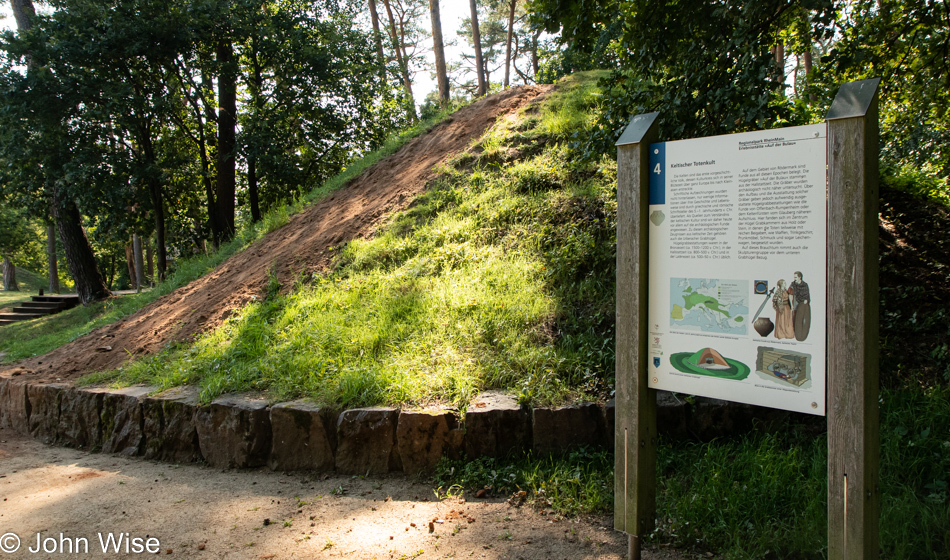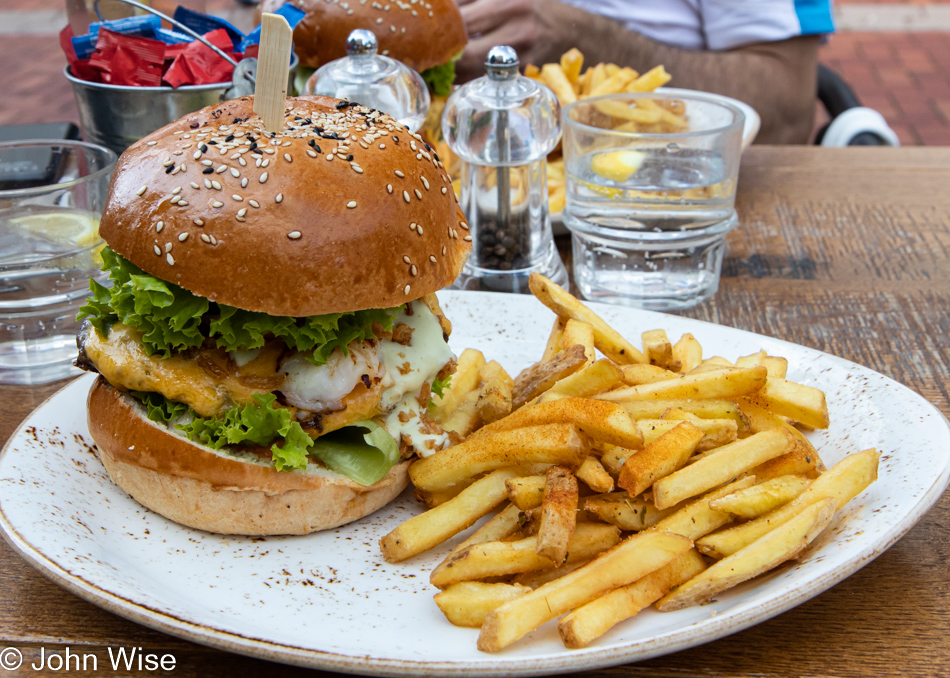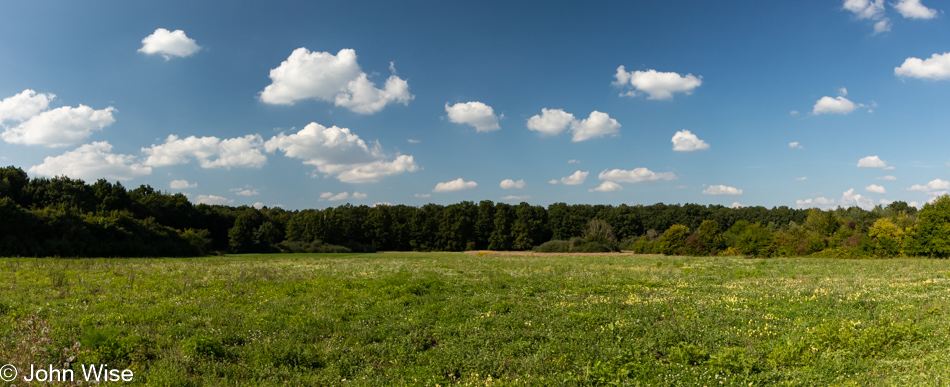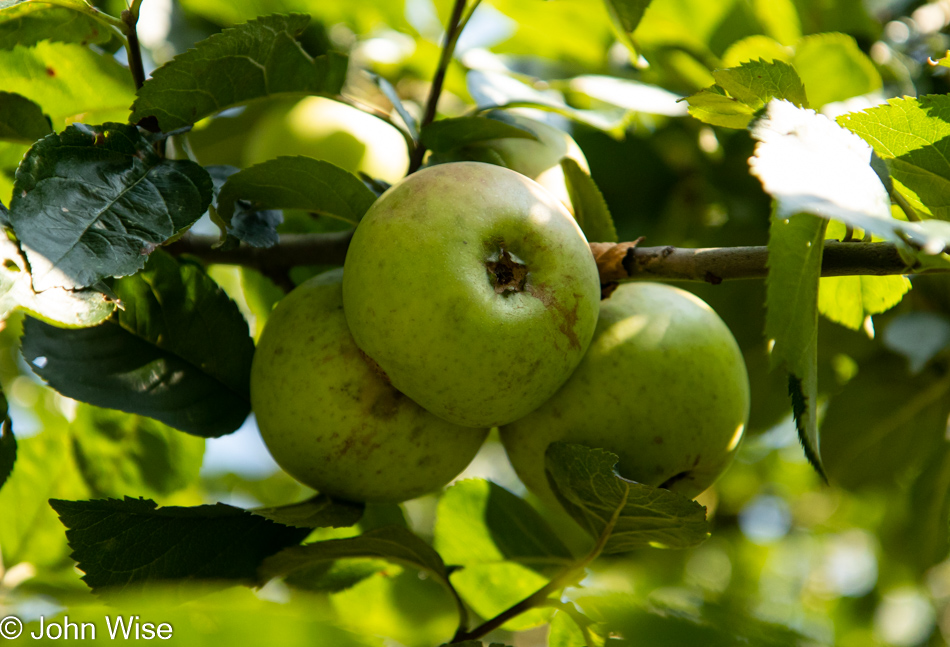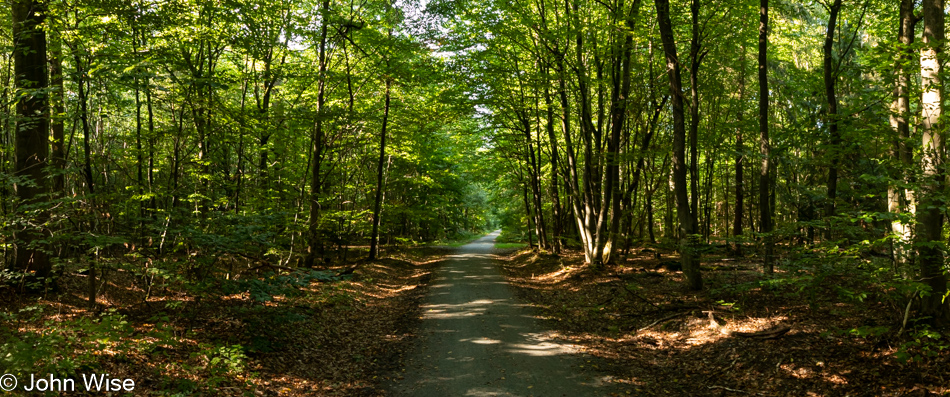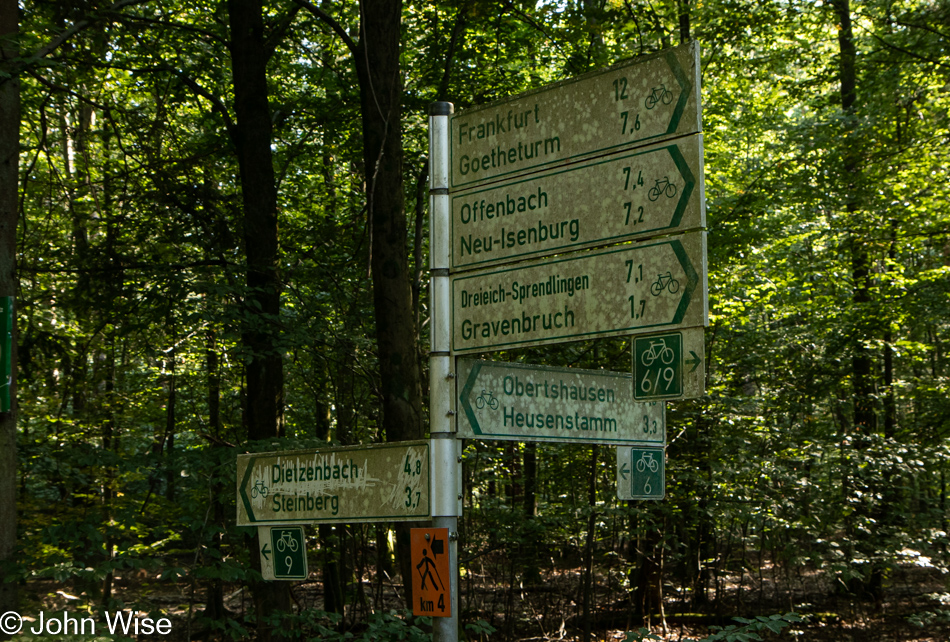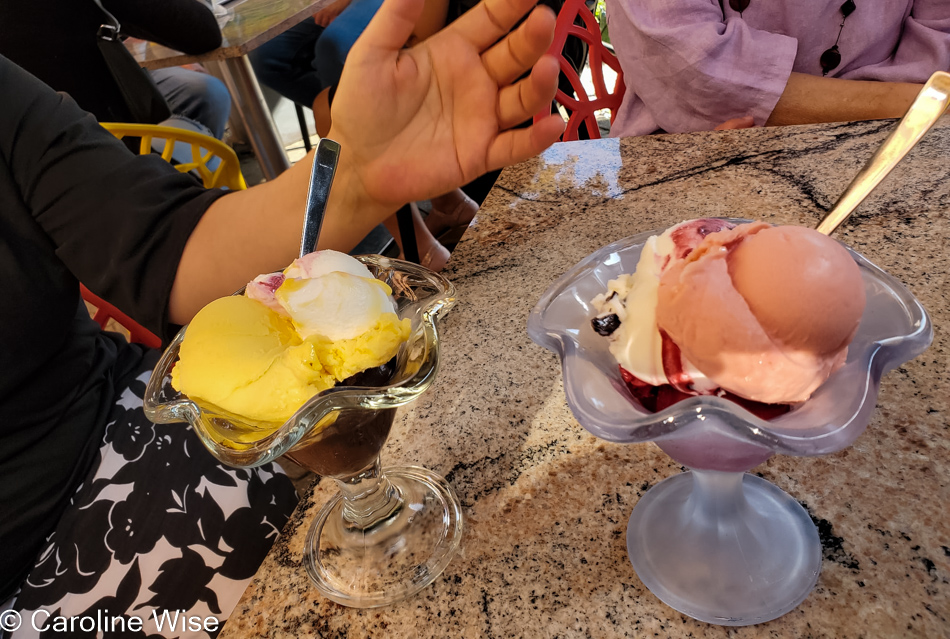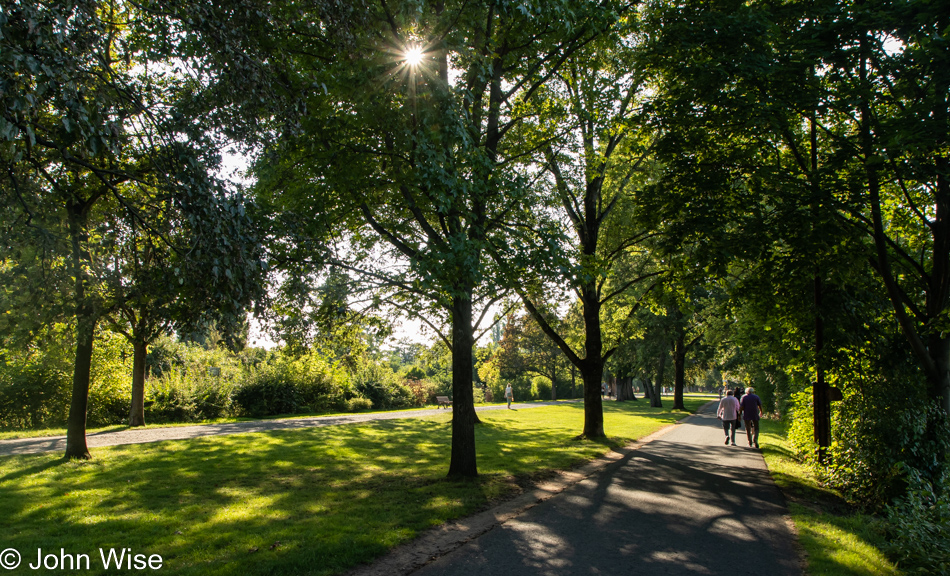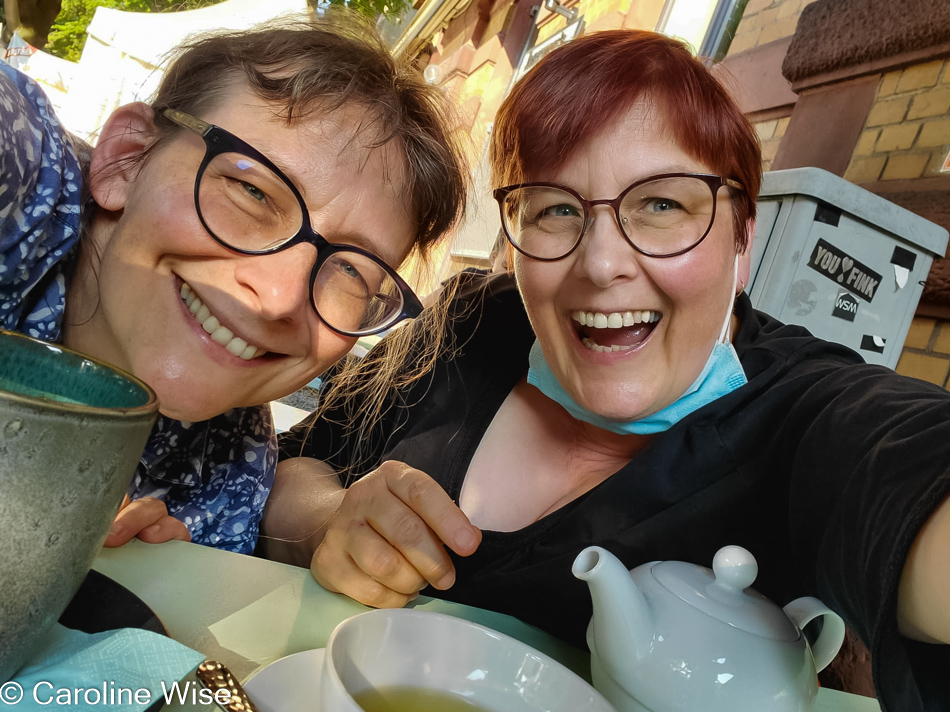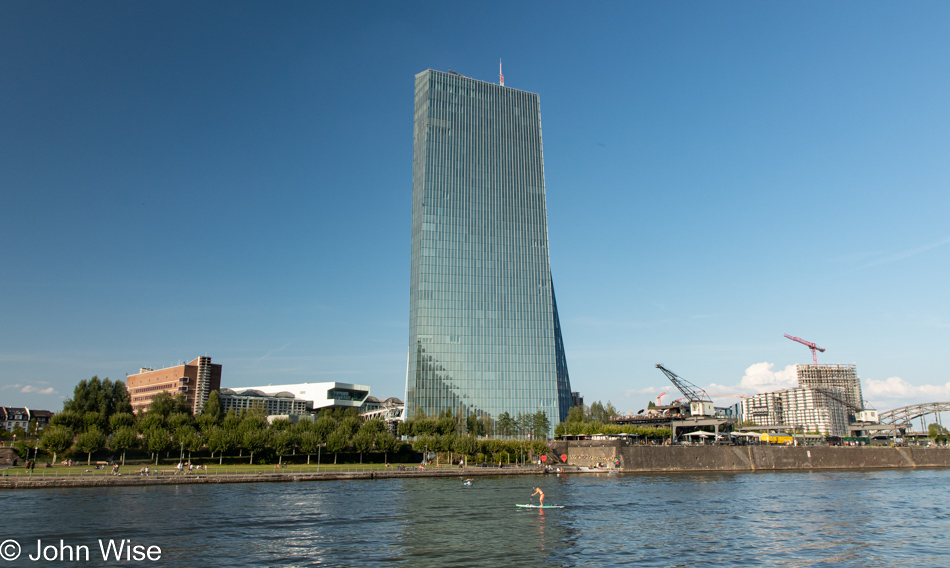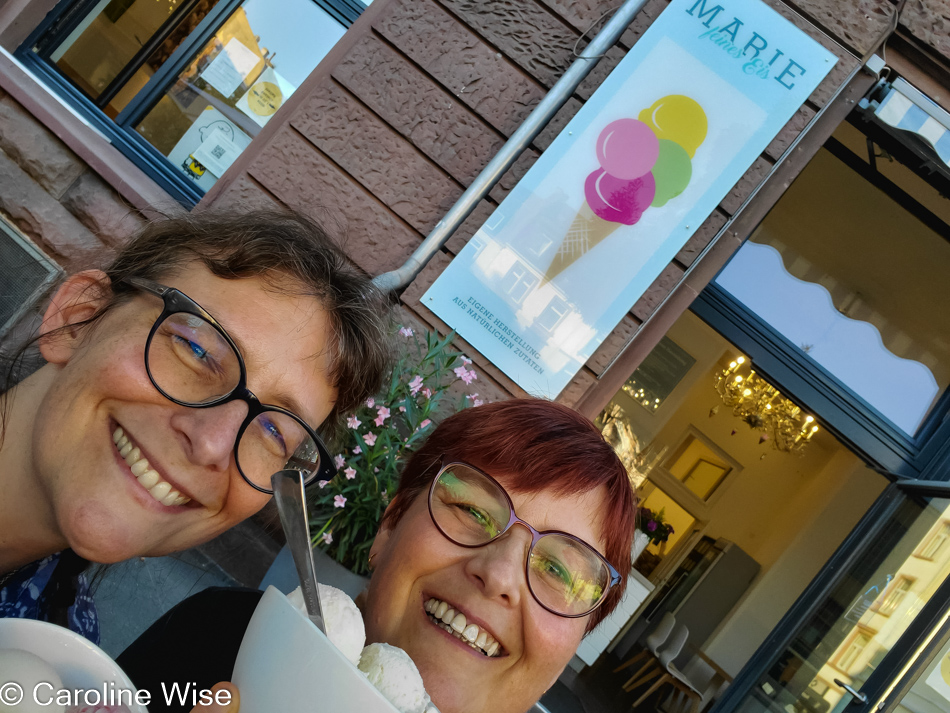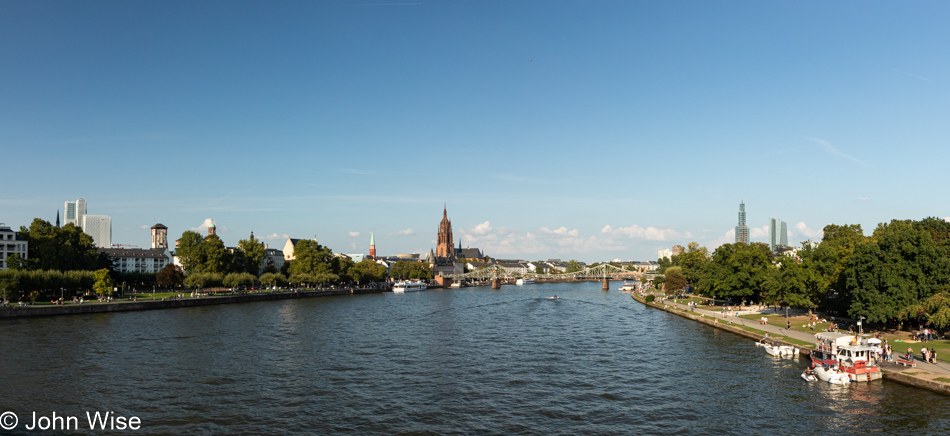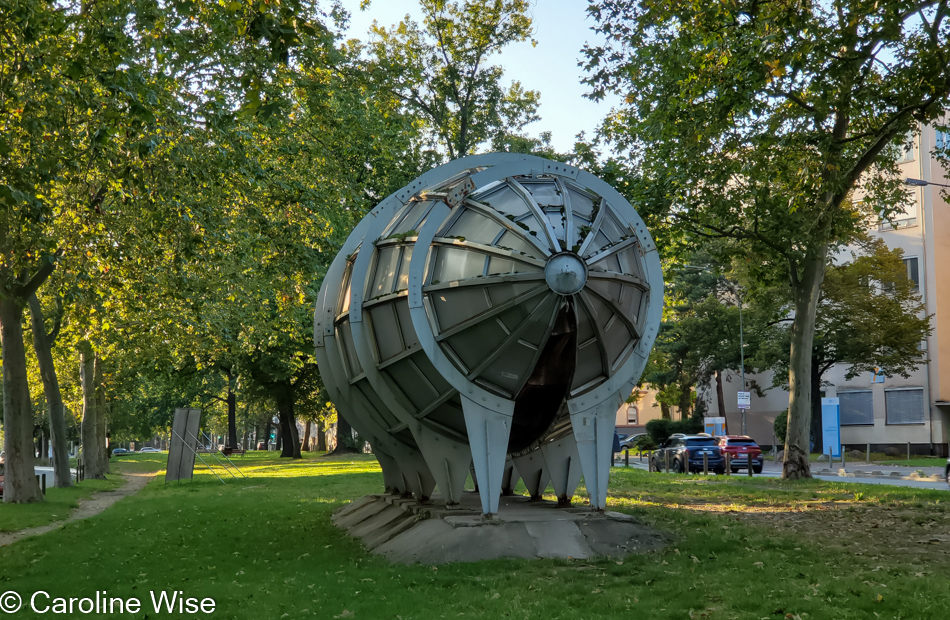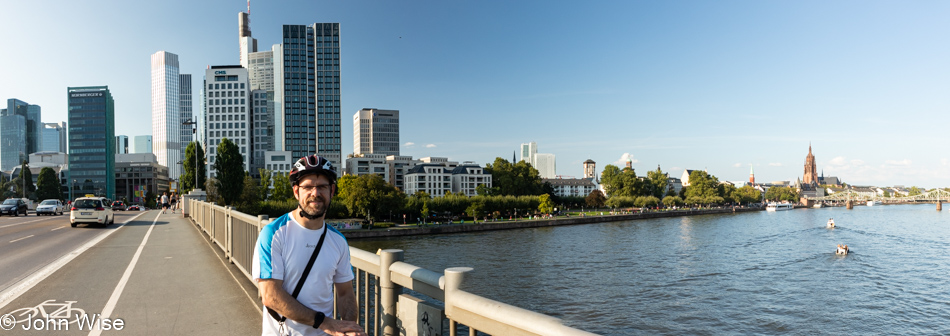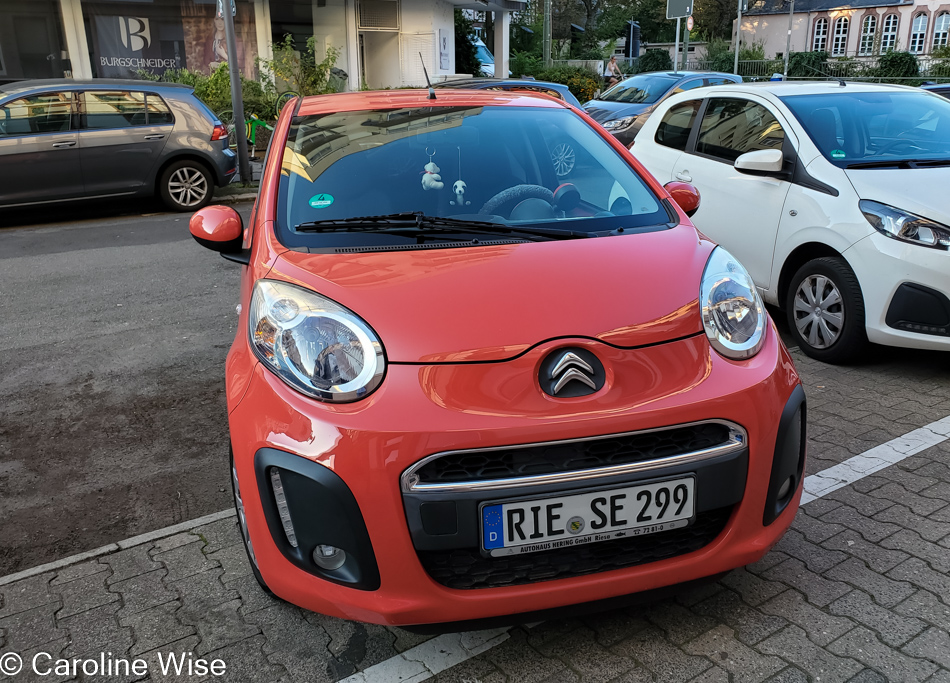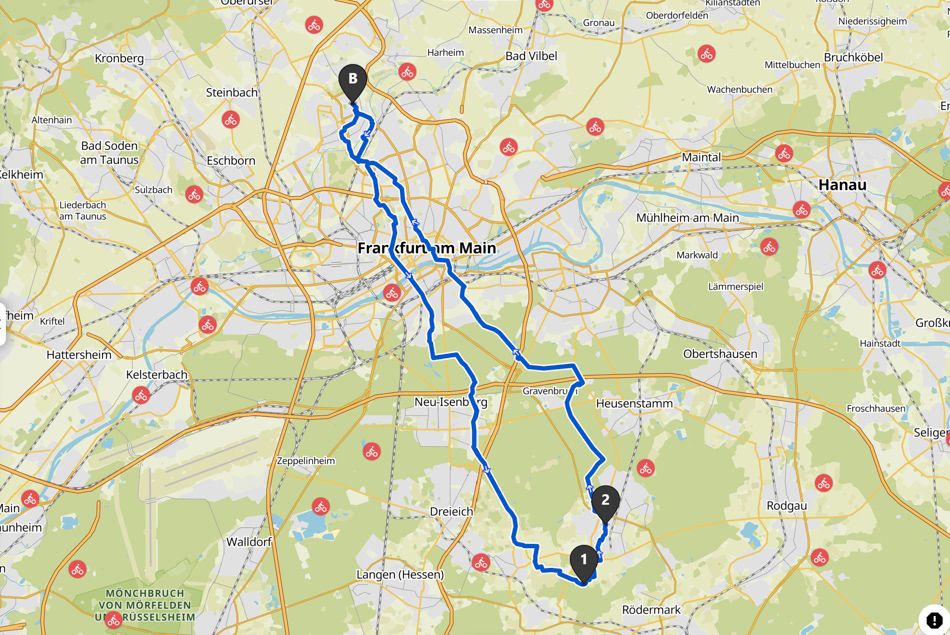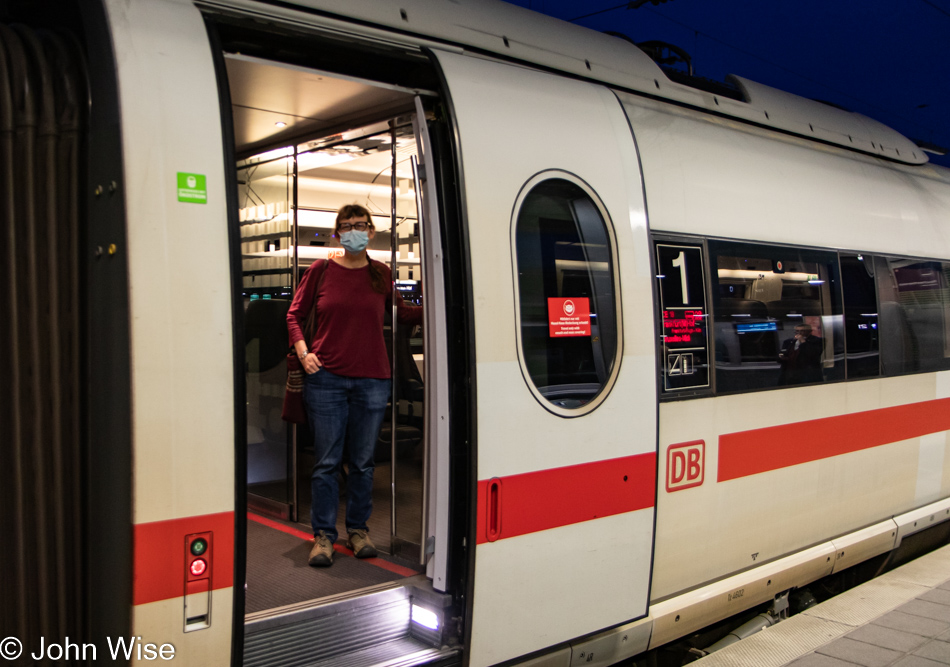
Dropped Caroline off at the main train station at 6:00 this morning for her visit to Köln. That all went well, but after that, things got too weird. I’d like to share why she went into the area of Cologne (Köln), but it was a secret mission to collect “special” equipment and meet someone who shall remain anonymous. Hi Claudia 🙂

The photo should say it all but it wasn’t taken under the best conditions as I wasn’t of my mind (or stomach) as I first passed this person. Coming down the escalator the first thing that grabbed my attention was that a woman was sitting topless at a subway stop. That was nothing compared to what I saw next when she stuck her finger in her stoma and flicked what she cleaned out of it on the ground next to her. I had to look up what that technical name was, as I only knew that the abdominal exit thing was her forward-facing new butthole from a colostomy. My stomach turned hard as I grew instantly nauseous, and what the hell was up with the two old guys sitting a couple of seats away from her? That’s the price Germans pay for ignoring the world around them. Finding it rude to look upon people who are “out of sorts” they are in denial of BIG details like this, where a half-crazy person is flicking shit at their feet. I was approaching the valley of hurl and had to avert my eyes. As I boarded the train that had finally pulled in, I saw my opportunity to snap a photo or two, but my camera settings and the lighting weren’t perfectly coordinated, so this was the best I got before the door shut.
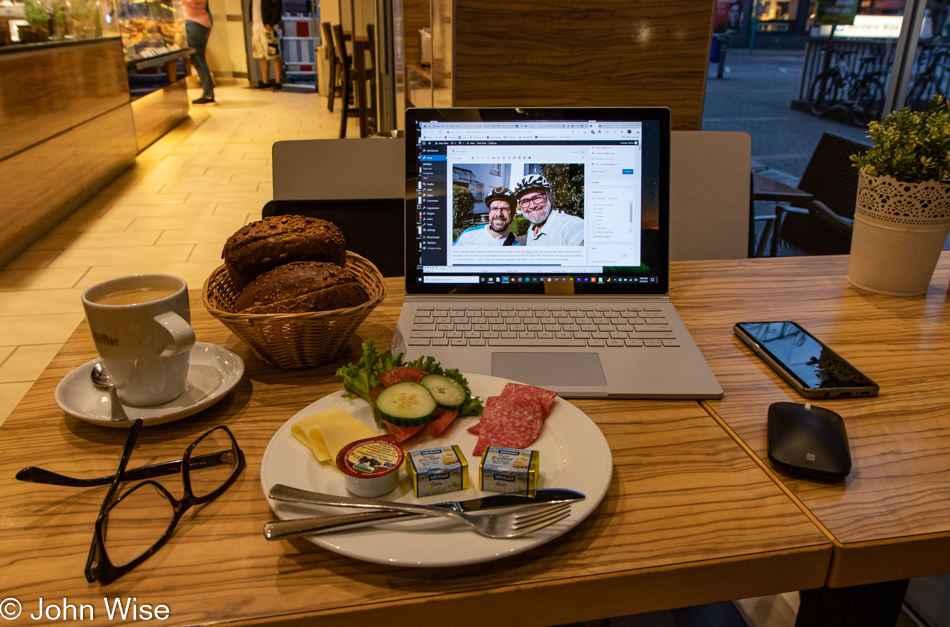
With that out of sight, I made my way over to Bornheim Mitte so I could have breakfast at the Eifler Bakery I had been frequenting regularly back in June. All was going well; my nausea had faded, and I got to writing about Klaus and my trip to the Celtic burial mounds at Bulau. Meanwhile, Caroline and I were chatting back and forth about her ride to Köln, her looking for the train bathroom, the train running late, her first sighting of the famous cathedral (Kölner Dom), and, of course, how much we love each other.
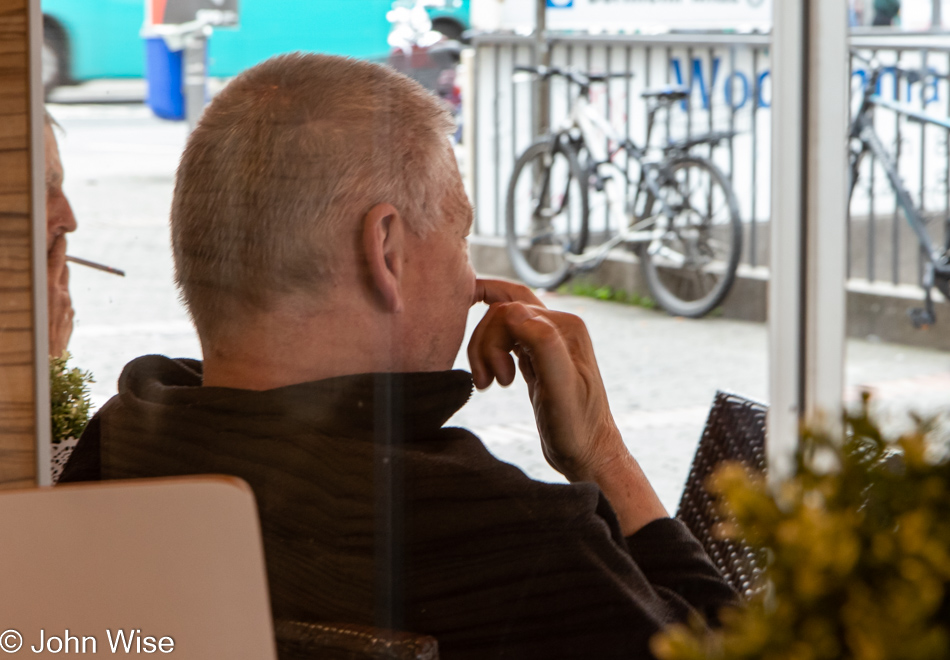
Then it had to go and get weird. This guy sitting just on the other side of the glass a few feet from me started picking his nose, inspecting the catch, and gobbling it down. This wasn’t a one-off thing either, and for the next half-hour, I watched his technique carefully so I could best understand where he was failing at what should have been a stealthy action. Well, he wasn’t failing, as he wasn’t even trying to conceal his booger-picking/booger-eating Frühstück of Popel und Kaffee.
This wasn’t the first time I’ve witnessed such behavior in Germany, but it was the first time I was able to point my camera at a person and snap away as he was too deeply engrossed with finding those annoying nostril obstructions to pay attention to me. So I looked things up online to find out how socially acceptable this is here in Germany, and it seems as though it’s not. The first search result was for Joachim Löw, who’s taken the German national team to win the FIFA World Cup and himself to shame for not only eating his Popel (boogers) on national TV but also sticking his hand in his armpits, under his balls, and into his butt crack before sniffing his fingers. As far as I can tell, these behaviors are not normal for Germany, though I also learned that Dutchmen seem to pick their boogers in public more than any others, though they take pleasure in rolling and flicking them.
Now, I’m afraid to venture out into the city as I have no idea what I’ll see next, but after four hours here at an extended breakfast, it’s time to get going.
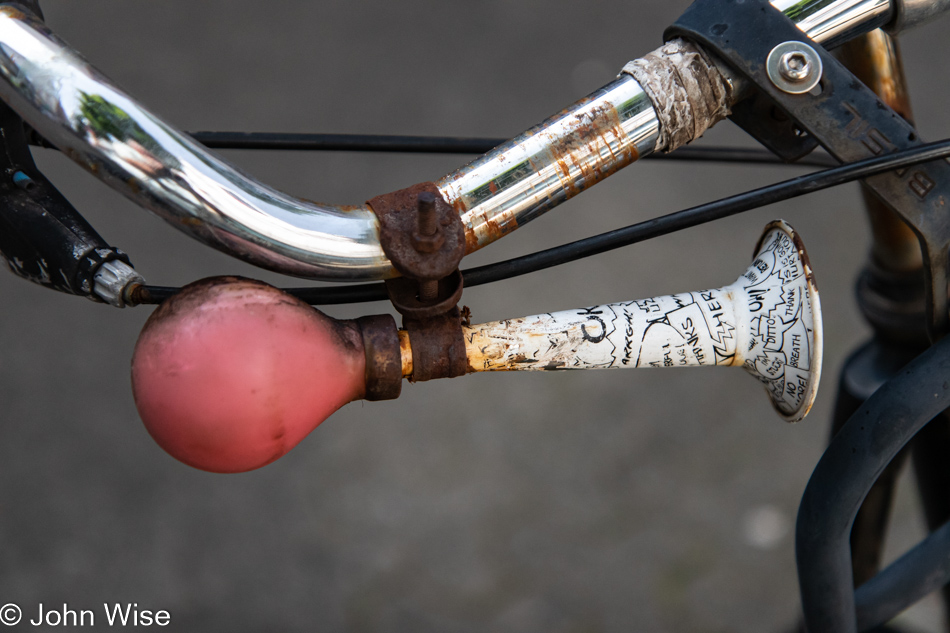
To any of those people who might have read about my previous visit to Germany back in May and June, just because I’m posting this bike horn doesn’t mean I’ll be diving back into the diversity of bike bells as I did on that particular day in June.
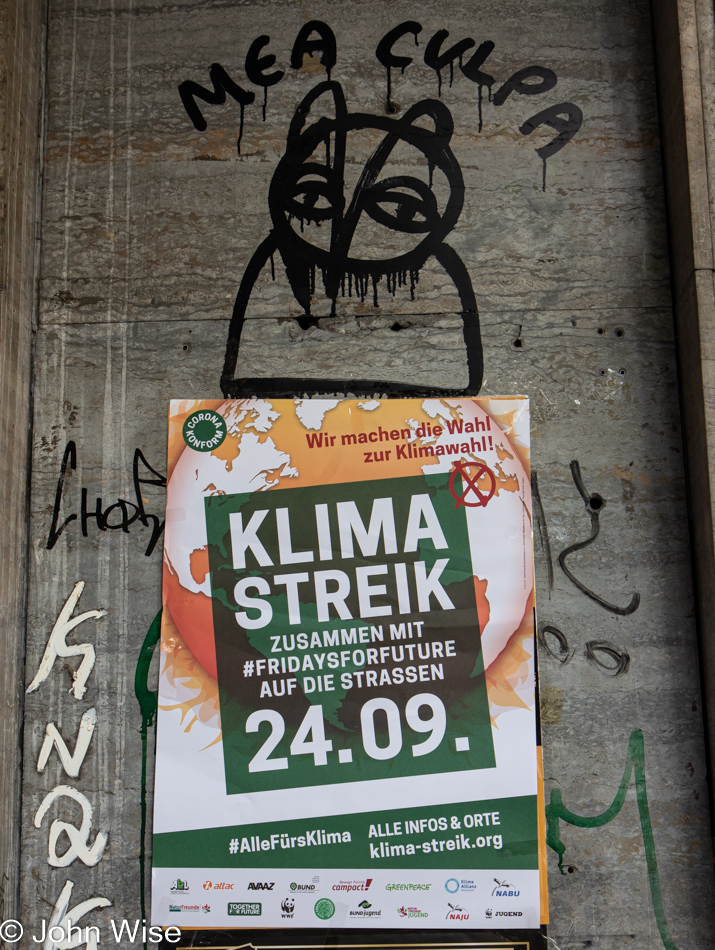
It’s voting season in Germany which also means it will be demonstration time too. You need not read German to hopefully be able to see #fridaysforfuture is the theme of this “Climate Strike.”
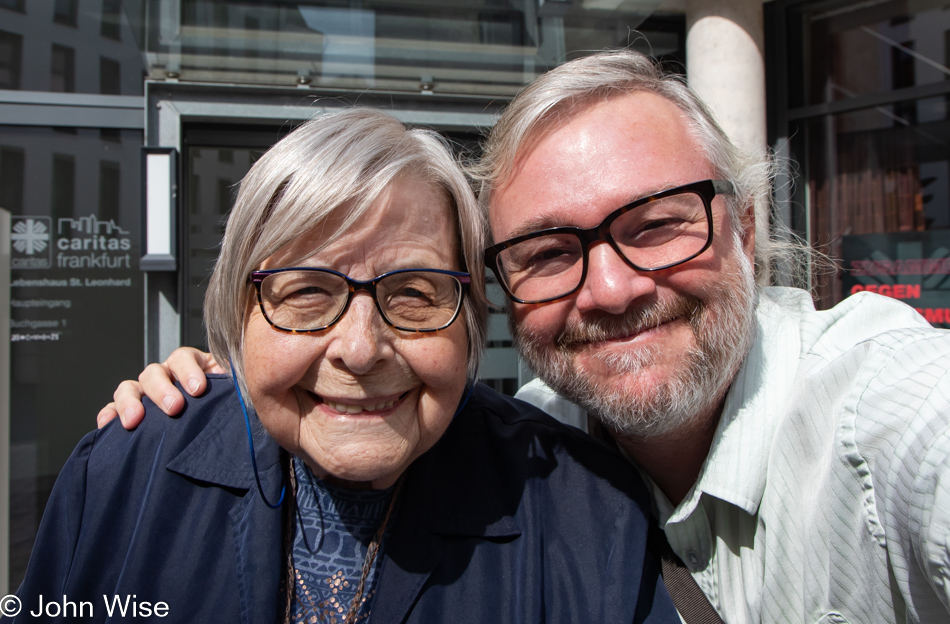
Let’s say you have an extra four hours where you’re hanging out in Frankfurt with nothing better to do as your significant other is somewhere else, doing god knows what, and you were too lazy to jump on another train to a place like Stuttgart or wherever (actually I was too busy trying to catch up on some writing) so you find yourself at a loss of what to do. Oh, I know, I’ll go and see Jutta because my mother-in-law can be entertaining in funny ways, plus I know she likes spending time with family.
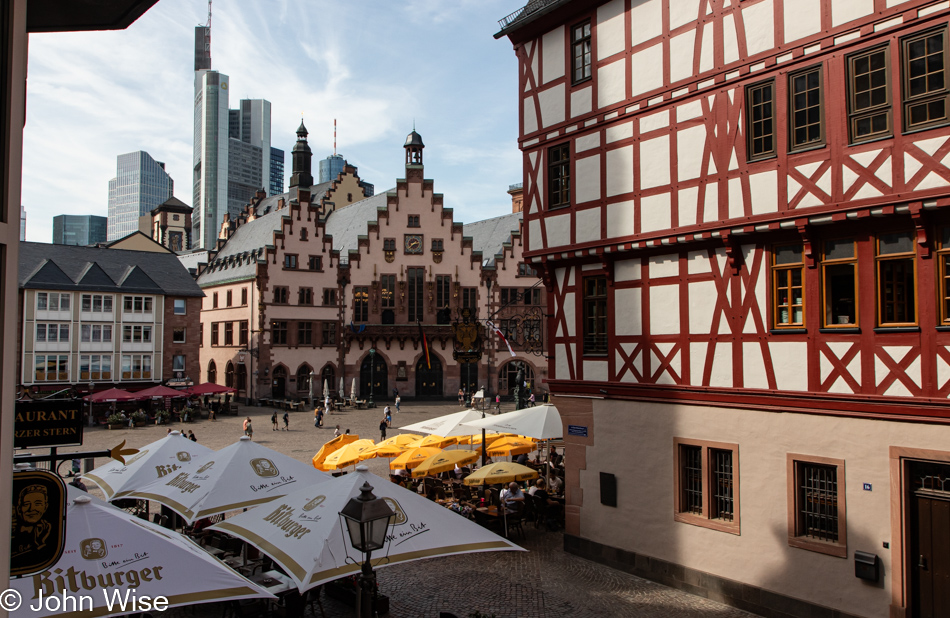
Because I showed up without Caroline, Jutta assumed Caroline wasn’t in Germany with me and that maybe it was June all over again. When I told her that Caroline would be visiting tomorrow, she asked if her daughter was on the plane already. Nope, she’s in Köln. Jutta followed with, “What’s she doing there?” Visiting a friend but not Claudia, who probably doesn’t live in or near Köln. Maybe 20 minutes later, Jutta asked where Caroline was and was surprised to hear that she was in Köln and not in Arizona. Can you figure out for yourself how the remaining three hours played out?
All of that is of no serious matter except to remind Caroline and me that one or both of us may be facing a similar future and that, like Jutta, we need to laugh at the silliness of the situation and accept that, “It is what it is.”
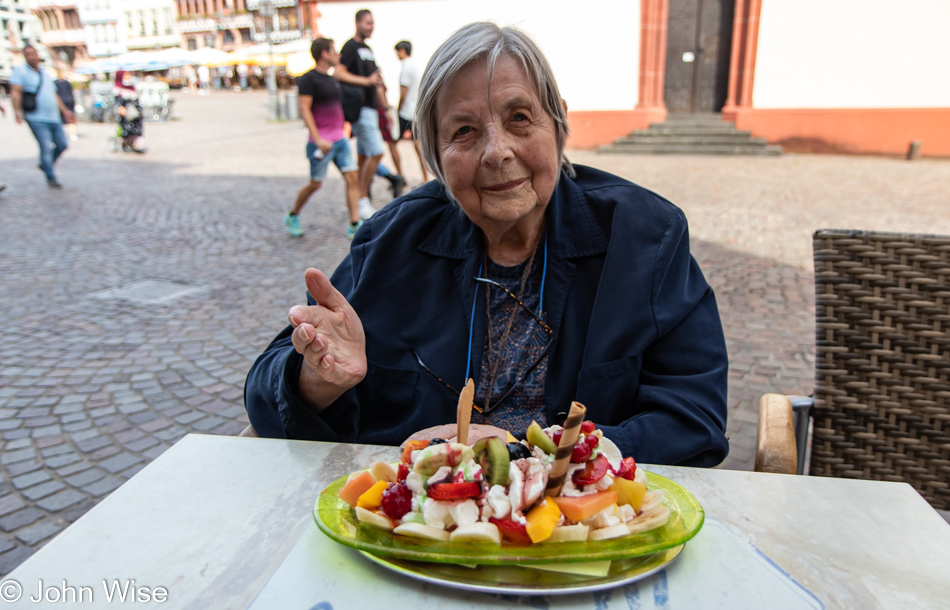
After more than two hours for lunch at Schwarzer Stern, we ambled along at old-lady-with-walker speed to the nearby ice cream shop. Jutta asked for something with fruit, so I got her the €9.50 Deluxe Fruit Boat (about $12). When they delivered it, she was certain she couldn’t finish even half of this giant of the ice cream world. Well, this champ at eating sweets left barely a morsel when they came to take the dish away. Okay, maybe it was a tenth of what was there, but I swear that my mother-in-law can enjoy a good dessert with the best of them.
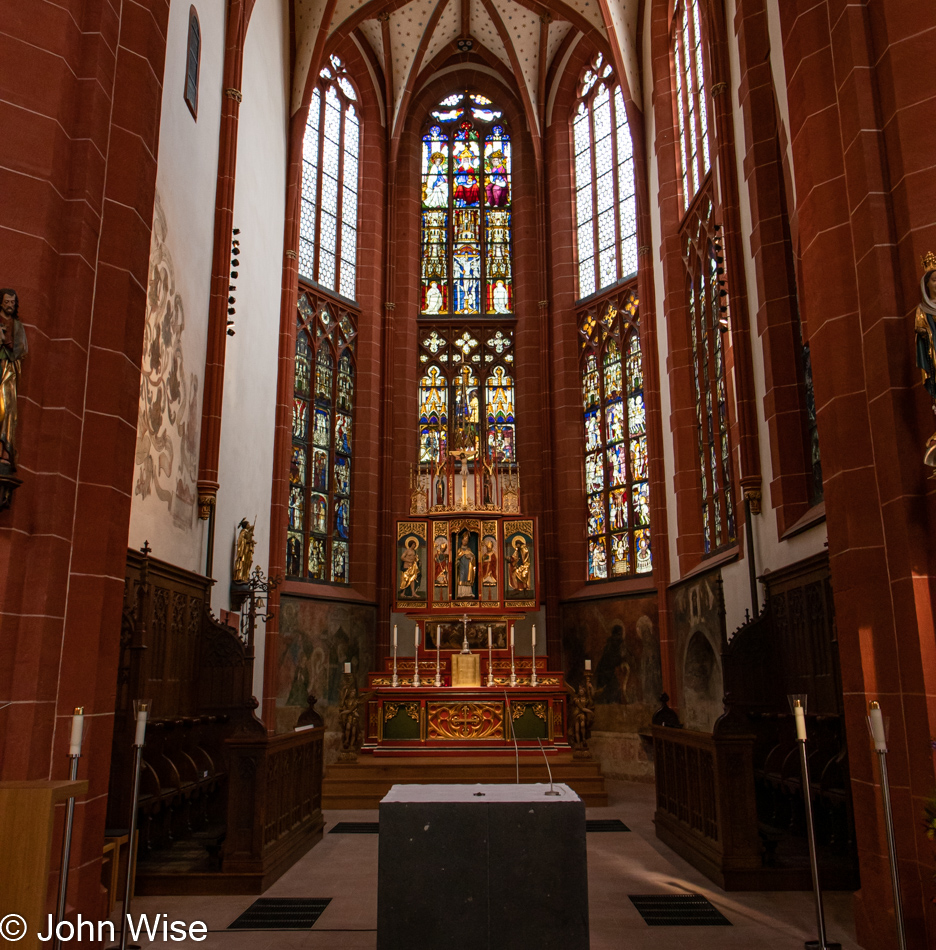
After walking Jutta back to Lebenshaus, I took a look at the church next door. St. Leonhard Catholic Church had been closed for nearly nine years before finally reopening recently. The renovation was a major undertaking and surely, attending a guided tour and paying a visit to the nearby Historical Museum would help to put the full picture of the effort together.
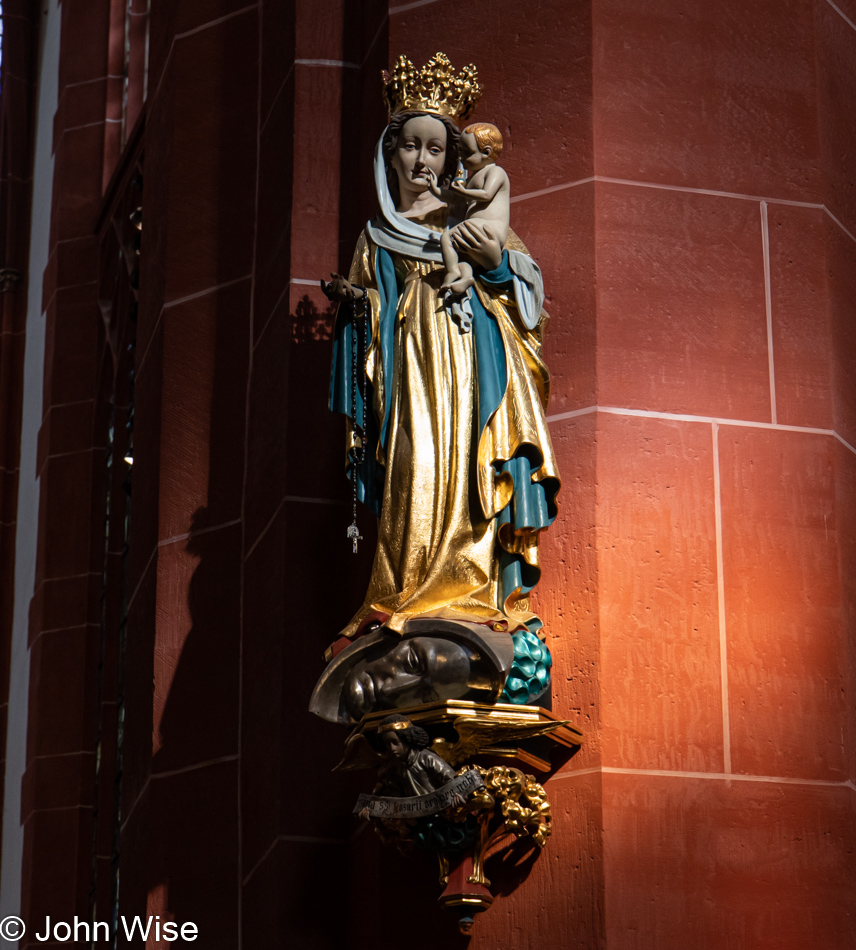
As I entered the church, there was a lady up at the organ practicing, which I chose to appreciate as a free concert. She added the appropriate ambiance to my visit to yet another beautiful little church.
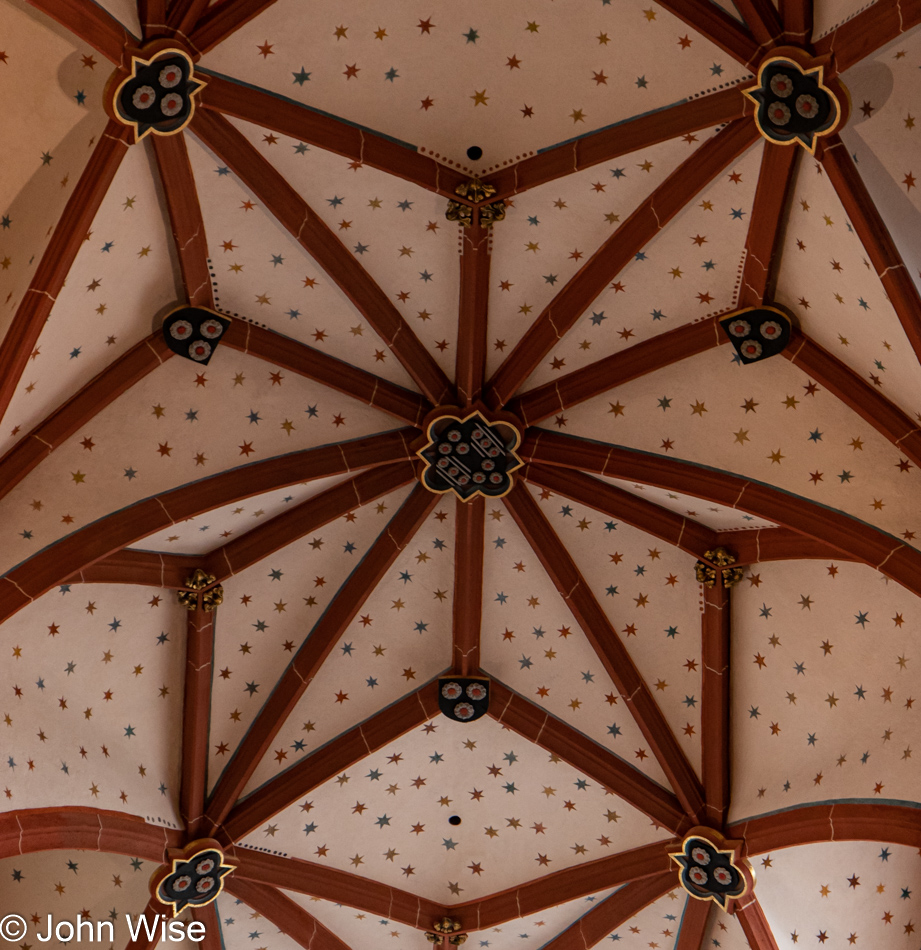
A man named Karan was watching over the church and offered up some details about the renovation. He noted that St. Leonhard is the second oldest surviving building in the Frankfurt area; the other is St. Justinus over in Höchst, where we were yesterday.
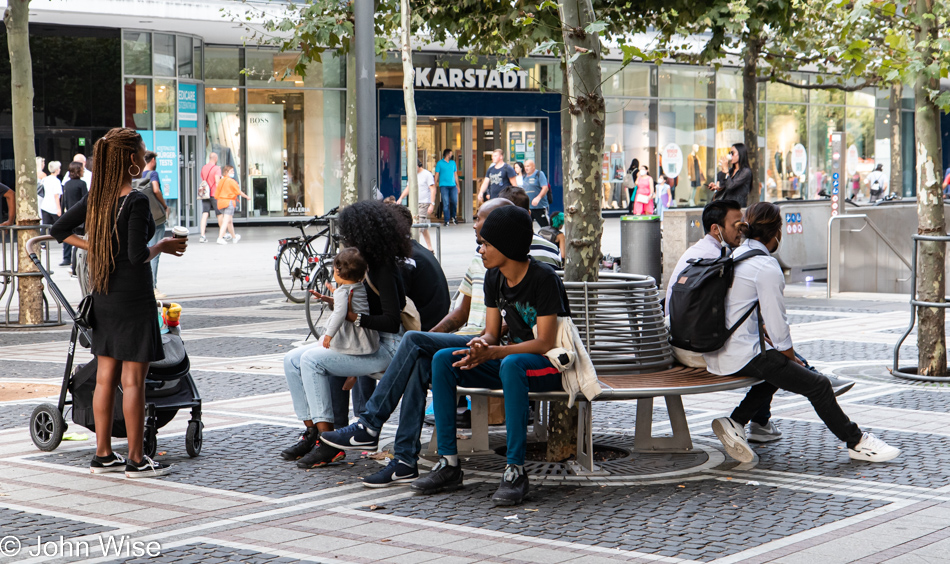
Walking through Frankfurt is like weaving across time. I see so many iterations of myself, Caroline, situations, fashion, and variations of themes I’ve experienced before during my life. I don’t see this in New York City, Los Angeles, certainly not Phoenix, and yet this is a composite of those and a hundred other places I’ve been. From singing beggars, thugs, sexy and conservative women, boring business people, addicts, homeless people, foreigners, young people trying to fit in with peers, kids with balloons, all with faces from around the world and ages from all years.
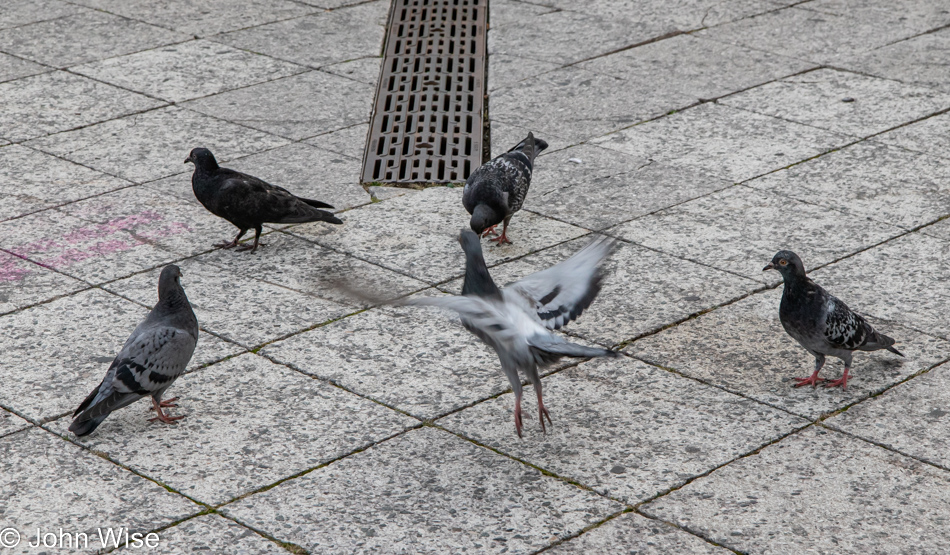
With this comes a certain melancholy as I witness so many eras of my own life replaying here in each successive moment. Maybe it’s the density of people combined with the fluid integration of all economic corners in constant movement. Old meets new, and from no-tech to hi-tech, a generation glides by on electric scooters; some walk, others ride bikes, weaving between the heavy pedestrian traffic, too many smokers, and an endless parade of those who glean trashcan after trashcan just minutes after the last person on the hunt for anything refundable. Between those gleaners are the pigeons picking up every morsel of dropped crumb and fry they can run to and snatch before one of their flying rat brethren beats them to it.
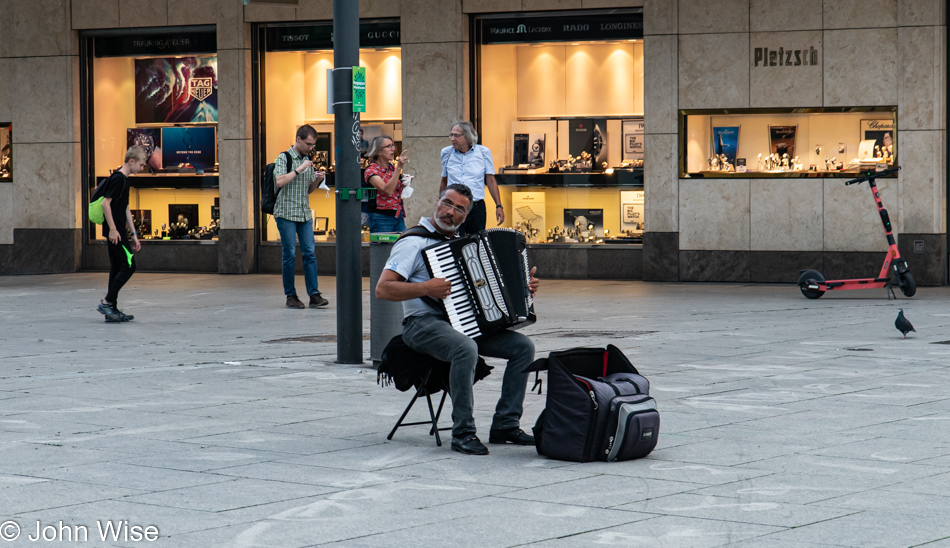
The music comes and goes as one street musician gives way to another. Busking and bottle collecting might be the most legitimate forms of begging here in Frankfurt. Guys, and I do mean mostly guys, have boxes strapped to their backs and scooters under their feet as they speed by to deliver some food or other across town. The woman who was offering prayer songs had given way to an accordion player who was too much competition, or she had made as much money as she was looking for. I suppose if I spoke better German, I’d get into trouble by asking people about their activities, such as I did when I ran into a member of MS-13 earlier.
How did I know his gang affiliation? The facial tattoos were the first indication. I spent a moment studying his face as we walked along near Römer, making eye contact he gave a look acknowledging his awareness of me staring at him so I said hello. It was enough of an opening that I was able to learn of his Mexican and Moroccan heritage while we walked along, talking in the bit of German I could muster. It took me a minute to gather enough details out of the intricate tattoos before my eyes fell on the area below his bottom lip tucked between his heavy black beard that said, “Stay Away.” Oops, I apologized for not staying away; he laughed and said, “Kein Problem” before we parted directions. Yes, I absolutely wanted to ask for a photo but felt it inappropriate. I regret my timidity in this situation.
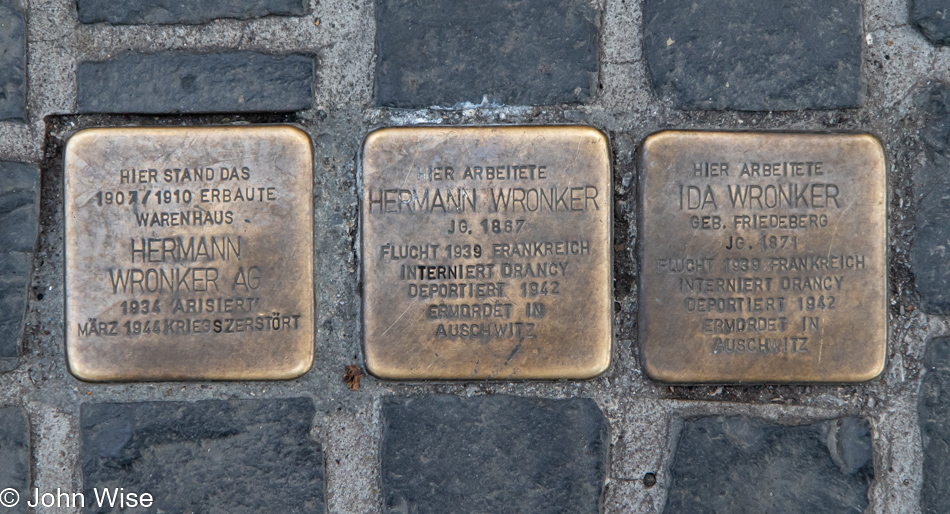
The old-school punkers who’ve set up camp nearby, while kind of silly looking, archaic even, would probably not disagree with their photos being taken, but if history is a good indicator, they will want a nice donation to the beer fund, and they are not so original to warrant even a Euro. The beggars that walk up and present their card in German, offering some plea for money, are the worst as they tilt their heads in some sympathetic nod while muttering “Bitte,” an act I’ve grown tired of.
It’s belly season in Frankfurt with many young ladies showing midriff; more than a few are sporting solid six-packs, to my surprise. Guys looking for those girls are just as likely to have the most incredibly chiseled beards and sharpened hairlines that must certainly slice through the bullshit of flirting and just draw each other in.

In America, I feel like I’m on the cultural sushi belt of all-you-can-eat banality being performed on a 30-second loop, trying to induce nausea by repetition. Maybe it is all the same here, but my eyes have difficulties finding it, and my ears cannot pick up on it either; that’s a luxury of my limited German for sure. I have to wonder how long it would take, sitting here watching people on Zeil before it grew old, and I’d run low on inspiration and finding entertainment in the play of life. Just then, the two guys who’d been sitting across from me, eyeballing the girls from Wiesbaden on my right, made their move and approached them. I’m probably smiling too much as the guy who mustered the courage strikes up a conversation. And then it turned a bit creepy when, after trying to exchange info, he enquired where they had parked their vehicle, and it started to feel like a stalking situation. With no interest being offered, the guys moved on, or so I hope.
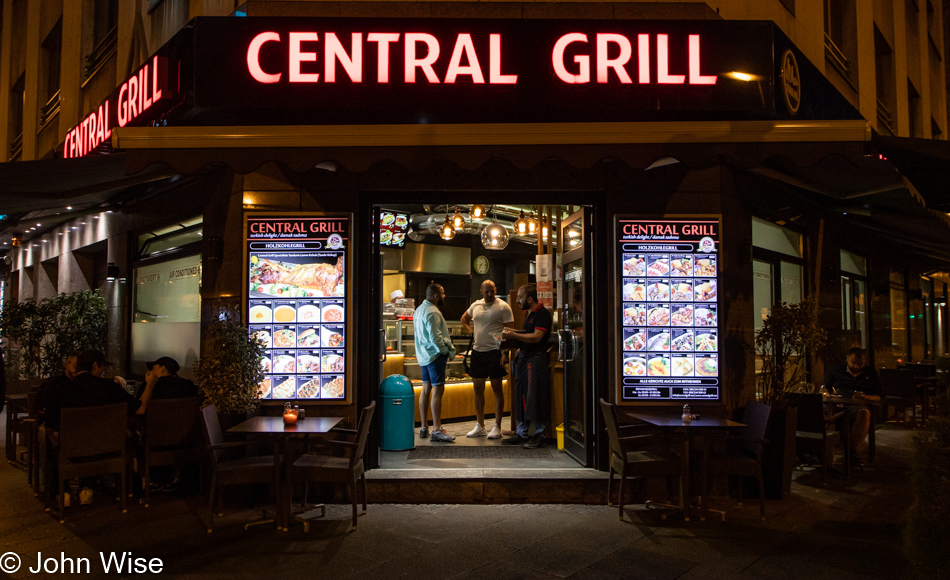
Here I am back in Bahnhofsviertel, feeling leary as usual as I’ve seen crazy in this area, and while much has been gentrified, there is still that element of tension. I’m at the Central Grill for some solid Turkish food. I know it’s solid, as this isn’t the first time I’ve eaten here. The last time I visited, I wanted lamb, but they were out; tonight, I feast on an order and a half of lamb chops.
While I wait on my dinner, I’ll add this to my blog: my history here near Kaiserstrasse dates back to 1985 when, three days after landing in Frankfurt (courtesy of the US Army), I was introduced to the red light district that was thriving here back then. Since then, only fragments of relics really continue to hold on. How they’ve maintained their spaces during COVID-19 is a mystery, as I can’t imagine hooking is a legit gig during a pandemic. Back in the day, the open use of heroin was just a thing that was going on while pimps patrolled certain areas as women in their control worked illegally on the streets. Legalized prostitution was limited to houses licensed to offer such services. The last time I held my breath and entered one of these old decaying buildings, the charm as it was, was long gone and replaced by trepidation. I never had felt things were all that sketchy, although I had watched all manner of things unfold, and here I am today, possibly feeling vulnerable due to my age but all the same, I’m still drawn into the underbelly.
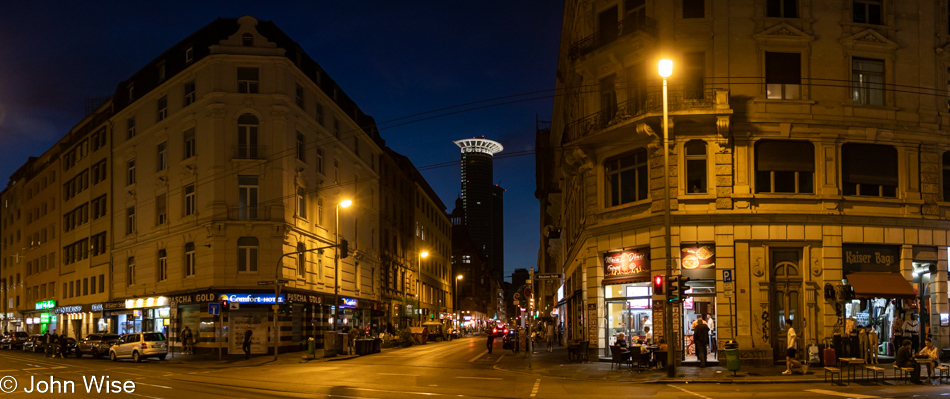
Then, when I’m exposing my inner-sissy, I watch a couple of older people walking by two young women are out for a stroll, another old guy on his e-bike rides down the street, and here’s this overweight aging American conditioned to suspect anything that looks different to be potentially hostile. This realization eats at my ass as this idiotic fear has been planted long ago, and every time I’ve confronted it when as a young teen walking thru Skid Row in Los Angeles, visiting squatters’ flats here in Germany, looking for the goods in various red-light districts across Europe, or buying drugs from some shady characters, and even striking up the conversation with a member of MS-13 just today, I find that my anxiety wanes as soon as I confront this BS.
Here at 8:00 p.m., Caroline just reached out that she’s on her first connection that will bring her from the area where Claudia lives to Cologne for the transfer to a high-speed train that will zip her back to Frankfurt and into my hugging arms. In the meantime, I sip my Turkish tea, work on finishing the bottle of mineral water, and fret that I only have 71 minutes left on the battery for this notebook. I suppose that as I finish this and settle my bill, I can go people-watching at the Hauptbahnhof (main train station) and hope that I don’t encounter stoma lady again.
It’s only 90 minutes before Caroline arrives, but then again, it’s 90 minutes.
Today was our 7th day in Germany, and it feels like it was nearly a month ago that we left Phoenix. Watch how I change my tune when, in two weeks, we are about to board our flight back to the US, and I lament how it all went by too fast and that we barely had enough time to do much of anything. Maybe our next trip we’ll finally take in Paris or Amsterdam, which for some reason seem to hold a lot of weight in measuring if we went far enough and saw all there was to see. Don’t get me wrong, I don’t feel cheated as our time spent anywhere is usually deeply immersive, and this certainly qualifies for that, but the more we pack into our limited schedule seems to burst the experience quotient.
Have you noticed that on a day without my wife by my side, I’m a verbose guy with nothing better to do than write? Yeah, I’m noticing it too, but you’ve got to appreciate that when we’re together, I’d rather spend time with her than with my computer. Time to call a server over so I could pay the bill and use their toilet, which is not a toilet at a train station.
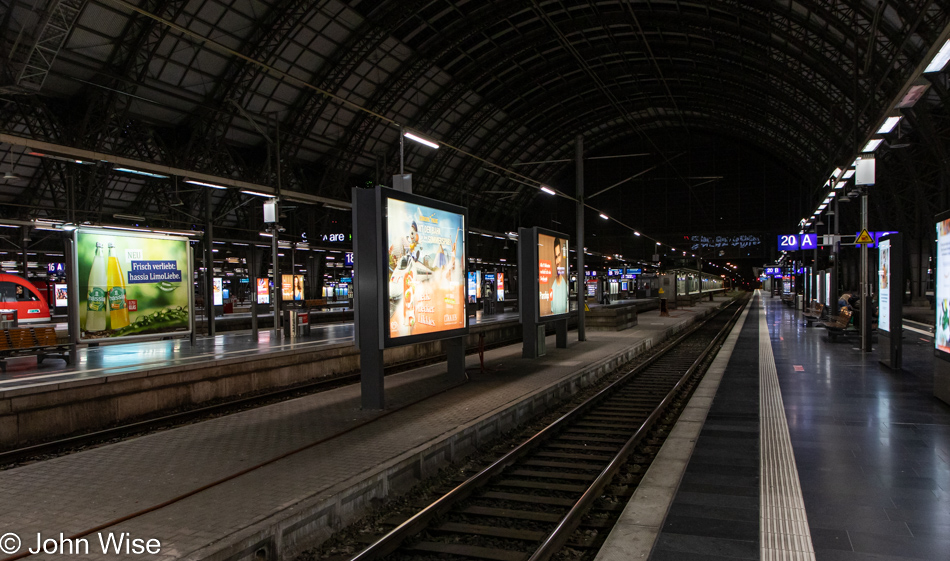
Seriously? The next bit will be hard to believe as I was just worrying about such a thing at dinner. I headed down Munchenerstrasse towards the main train station, and as I started to round the corner, a group of 7 or 8 men was crowding the sidewalk as I tried sliding between them and a woman with a stroller, one of the guys with his back to me stuck his leg out behind him, catching my left foot and as soon as he did he and a couple of others turned around and joined their buddies leaning against the wall. I’d imagine that had I gone down, there would have been three or four guys helping the old guy who just fell down back to his feet. Only then, I’d be minus a thing or two, such as the computer bag over my shoulder or the camera I had wrapped around my wrist and gripped tightly.
This pumped my adrenalin hard as I’ve seen this very thing happen years ago, but the guy that had been brought down was pummeled to disorient him. Situated in a sketchy part of the train station, it could easily have been deduced that the victim must have been drunk or on drugs and was simply suffering from his own stupidity. Such is the danger of walking alone on a street I knew I should have left but didn’t want to be paranoid about.
Now, in the train station, sitting at track #20 waiting for Caroline, I have to contend with the occasional beggar asking for “Kleingeld” or loose change. My answer is always the same, “Ich hab keins” (I have none). With a notebook in my lap, my phone/hot spot in my pocket, and a DSLR on my side, I always wonder when someone might run by and grab something. This, too, happened when I was 16 or 17, leaving a concert in Los Angeles as someone tried grabbing my SLR (back when film was still the thing), but then, like now, my camera strap was wrapped a couple of times around my wrist, and the lens gripped tight. The guy didn’t get my camera, but I went down and damaged the lens.
Thinking about these moments, I remember when my 1969 Chevy Nova was broken into at Huntington Beach in California and all of my cassettes stolen or the time in Amsterdam after visiting the Van Gogh Museum when I got back to the car and found I couldn’t open my trunk. It had been forcefully opened, and the key no longer worked. Feeling nauseous about why this would be, I stuck an arm into the trunk through a hole where a speaker used to be before I had torn it out, and my searching hand found nothing. That nothing included a very expensive (for the time) Sony Hi-8 pro video camera. The idiot who stole it probably got $50 to $100 for it so they could score some heroin, and the buyer picked up a useless NTSC camera that wouldn’t have worked on any European television as they used a system referred to as PAL that was incompatible with the American system.
Damn it, I’m tired of these panhandlers and need to put the writing to the side and go walking around in the busier areas.
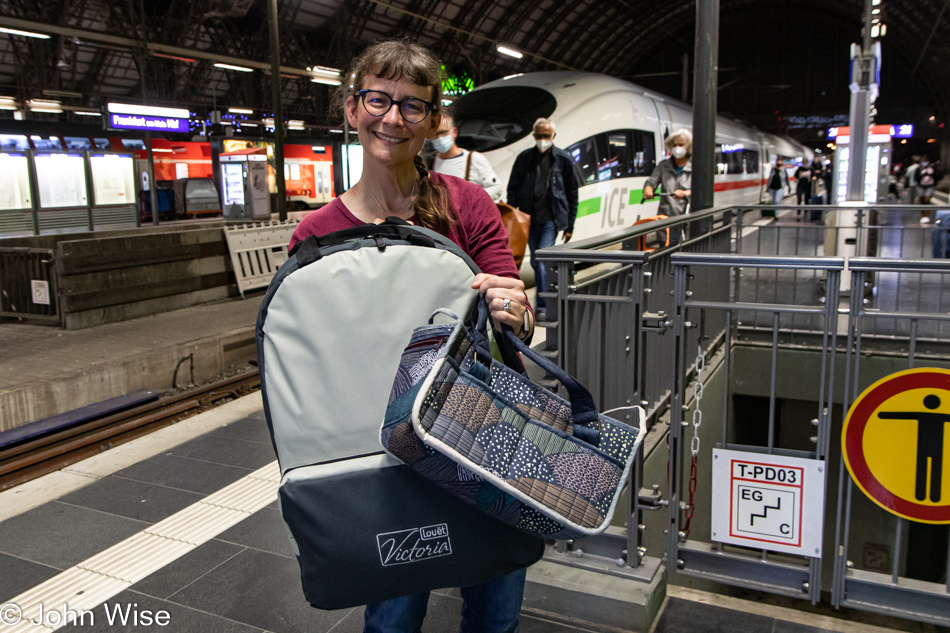
And here she is, finally, and on time: Caroline, returning from a lovely day with her friend. The colorful bag is a caddy for craft items hand-sewn by Claudia. The backpack contains a travel spinning wheel that only weighs 3.5kg and should fit in an airplane overhead compartment. Overjoyed, we hugged and made our way to the U-Bahn. I would like to say that the rest of the night passed uneventfully, but the weirdness returned once more. On our last leg out to Heddernheim, a young man tried to pass by a couple of old guys who were hogging the space in the middle of the train. He asked one of them politely to make space, and the old man, for no apparent reason, went ballistic, shouting insults and ranting about Auslanders (foreigners). Just as I considered the necessity of getting involved, a tall younger man slowly moved between the angry old man and the young guy who was defending himself verbally yet dignified. Eventually, the old guys left the train, and the tension was released. The day, in some ways, was “Too weird.”
